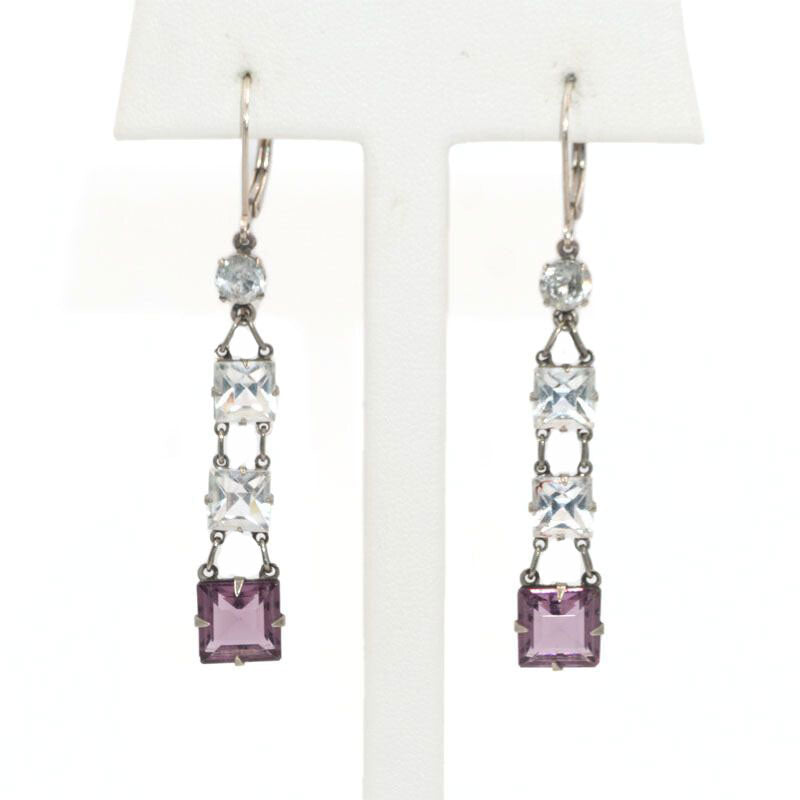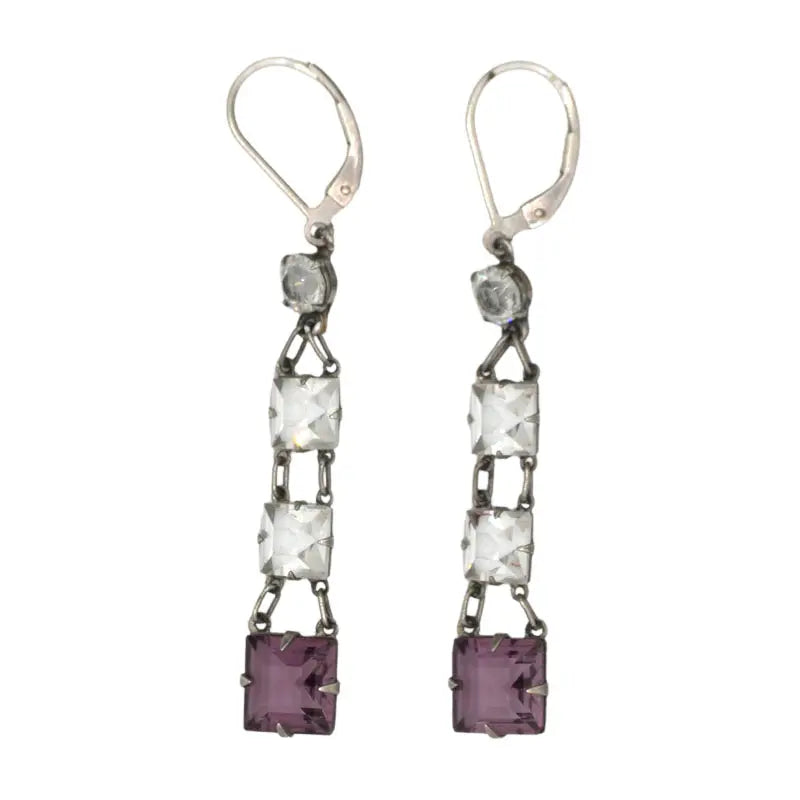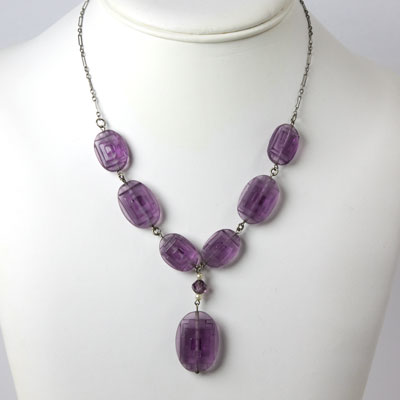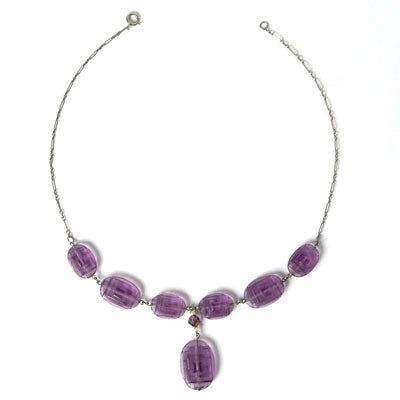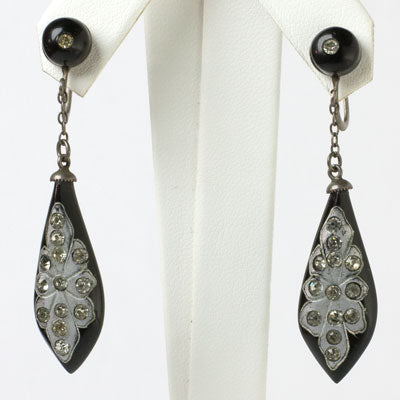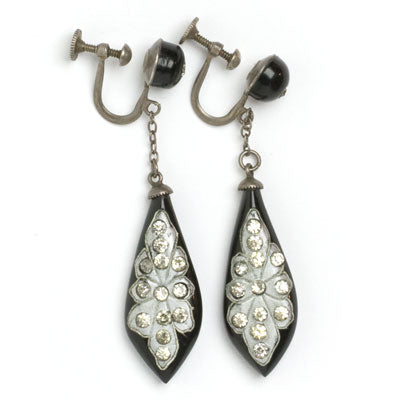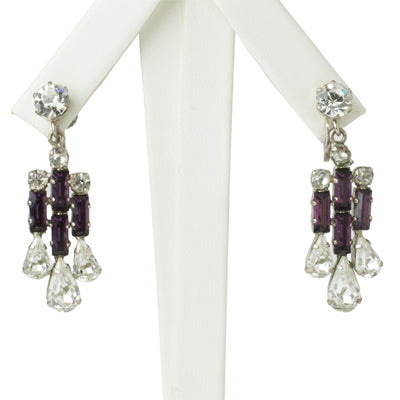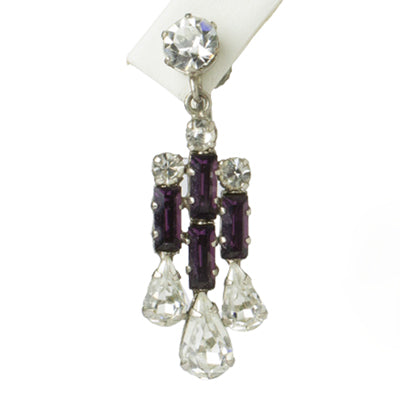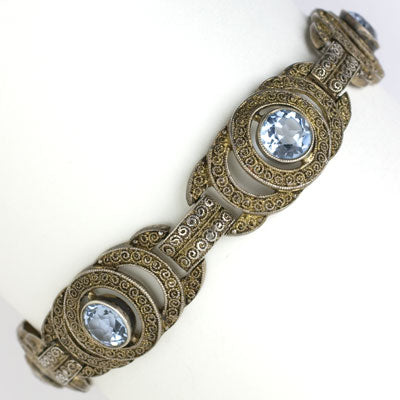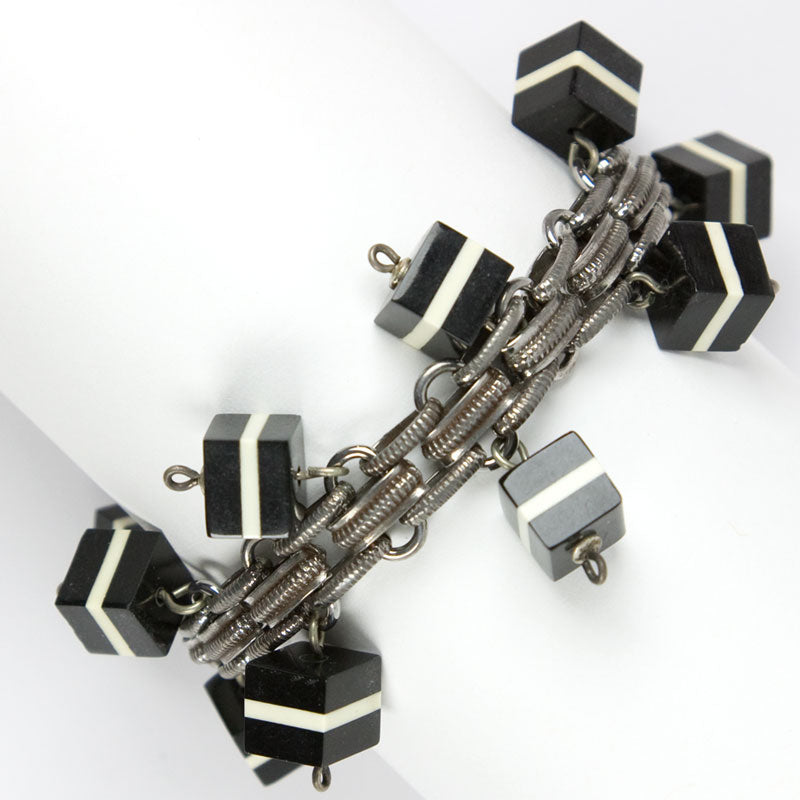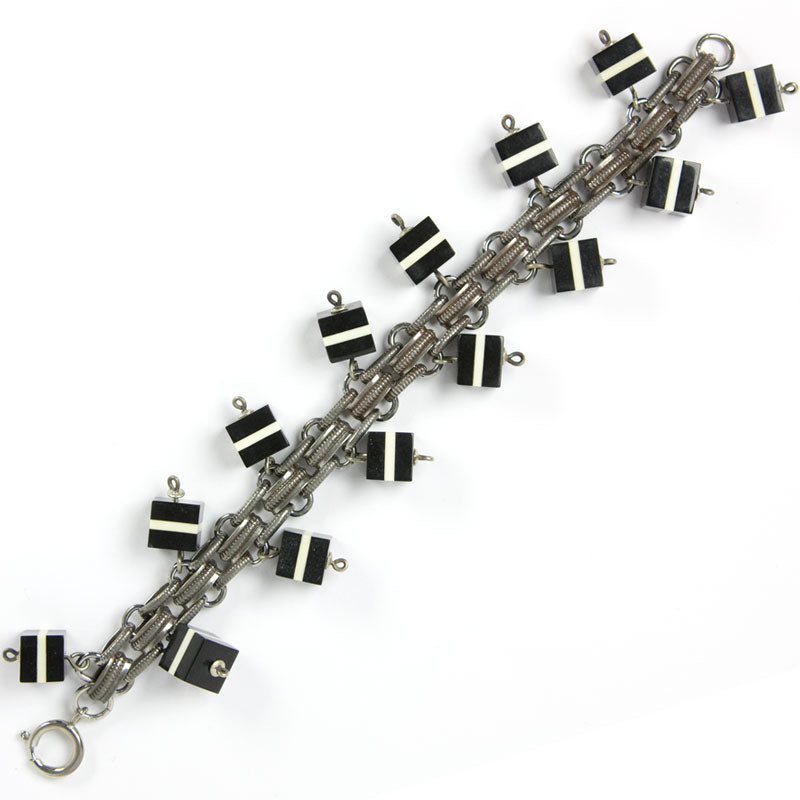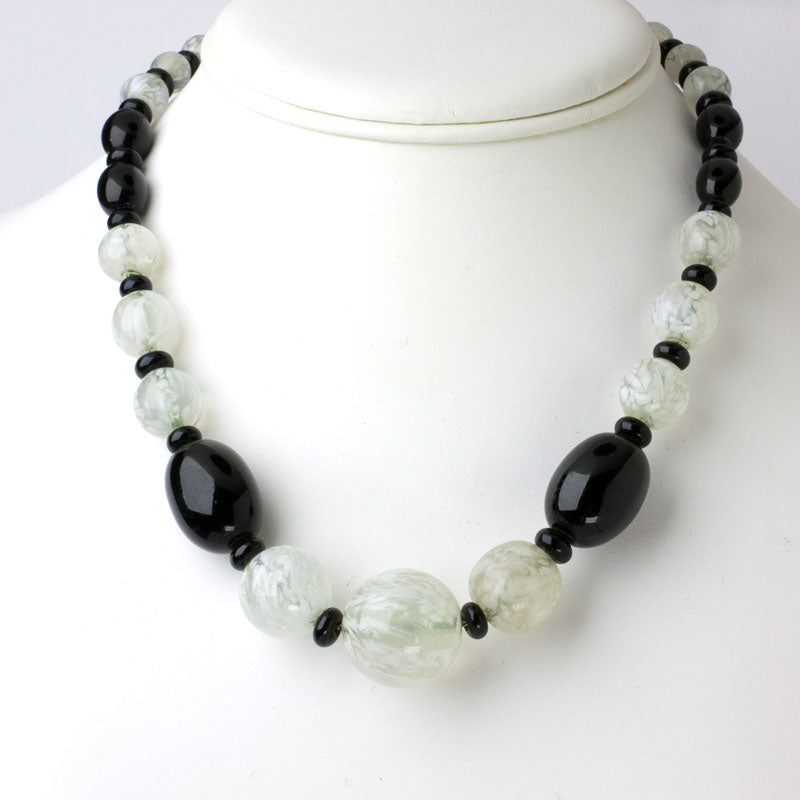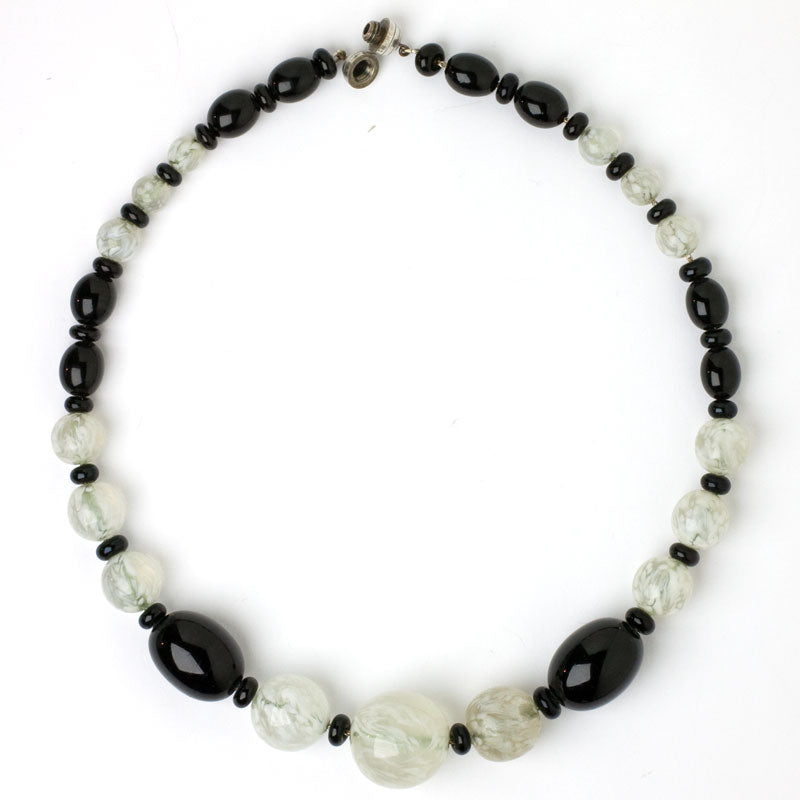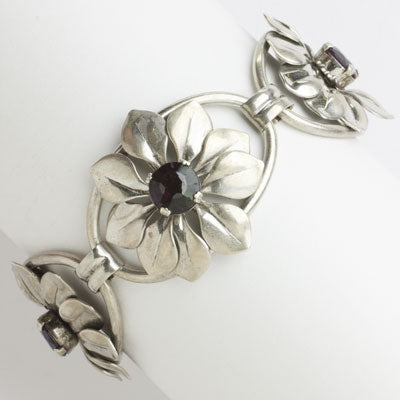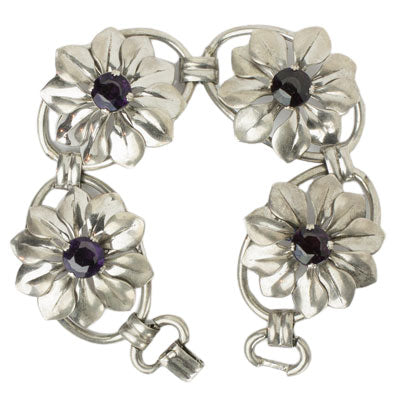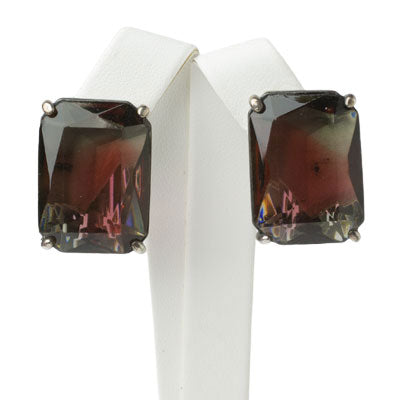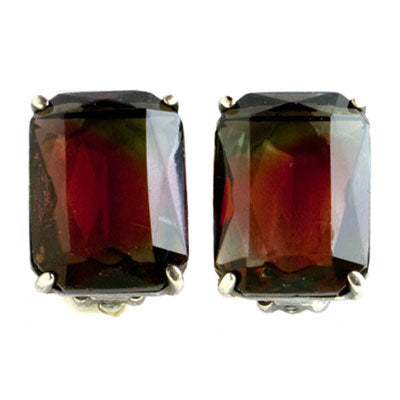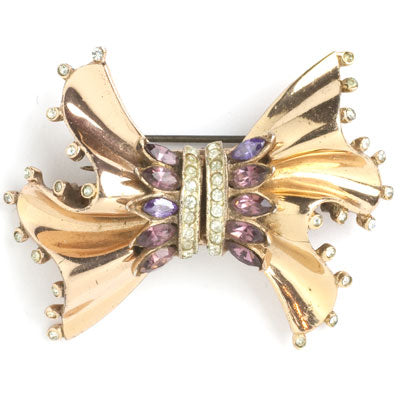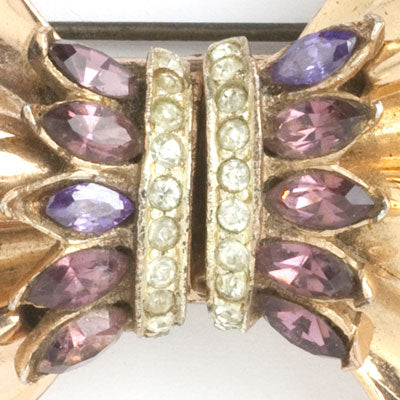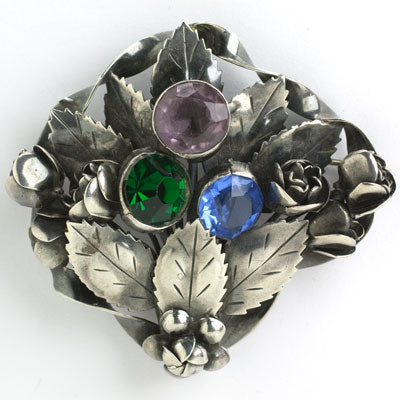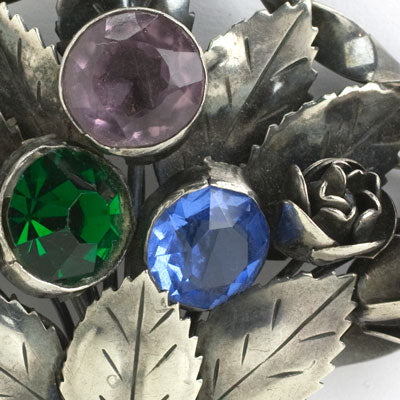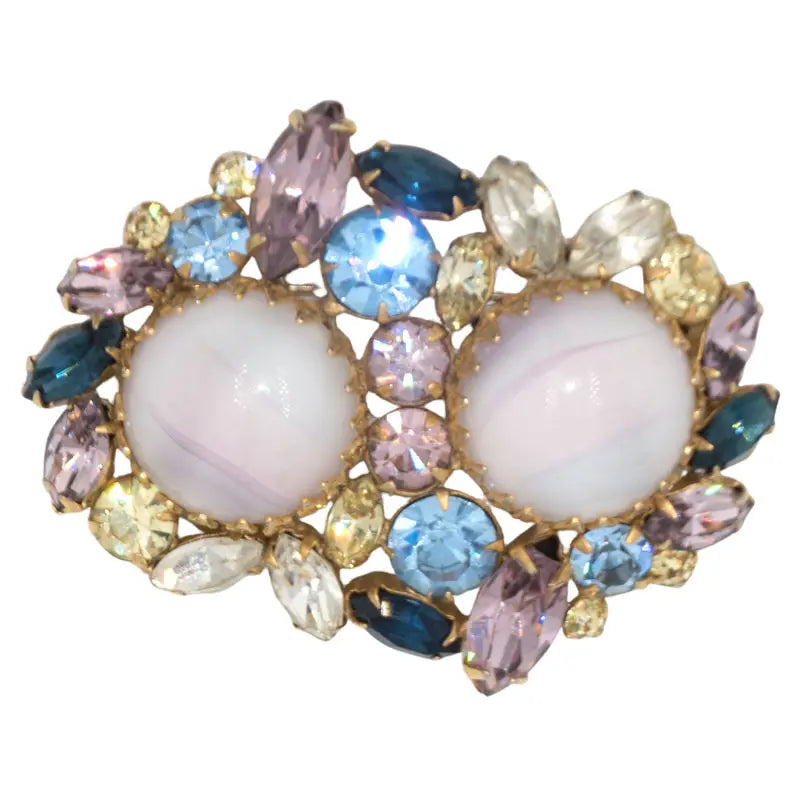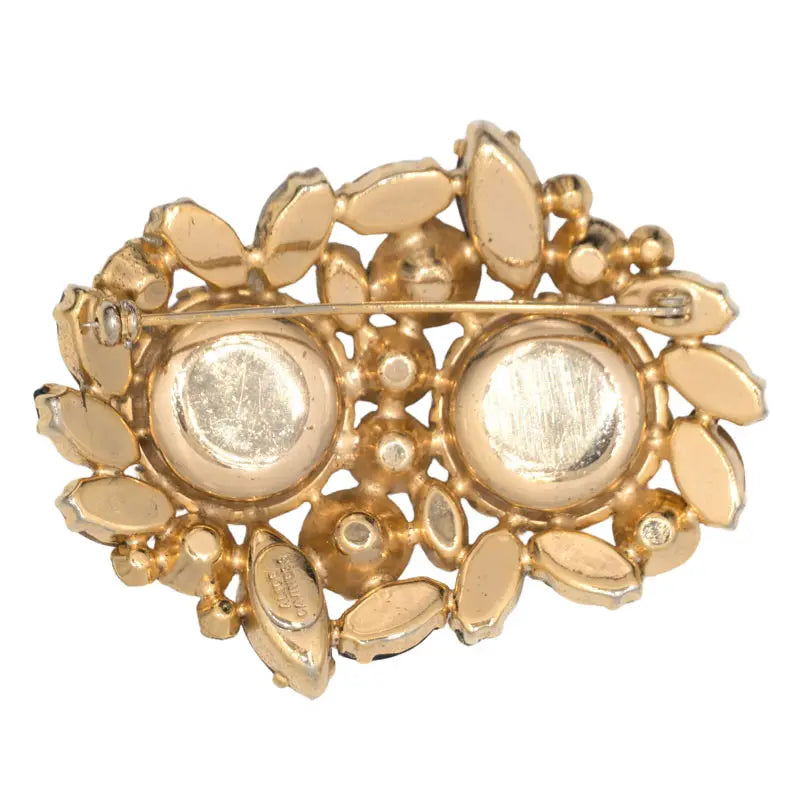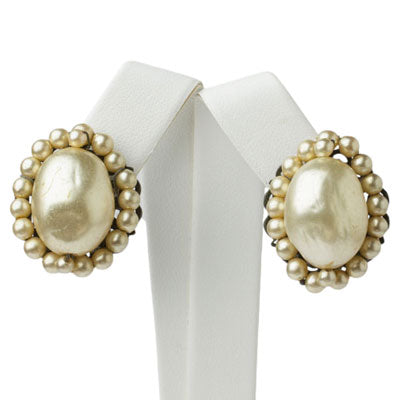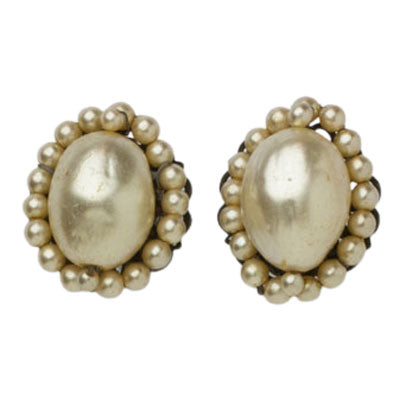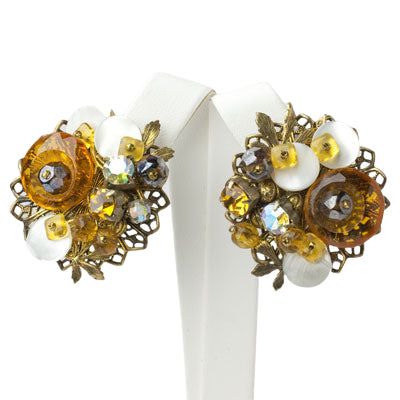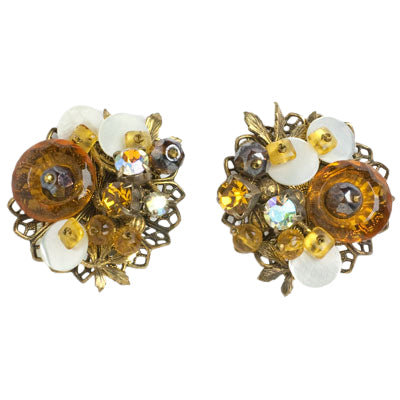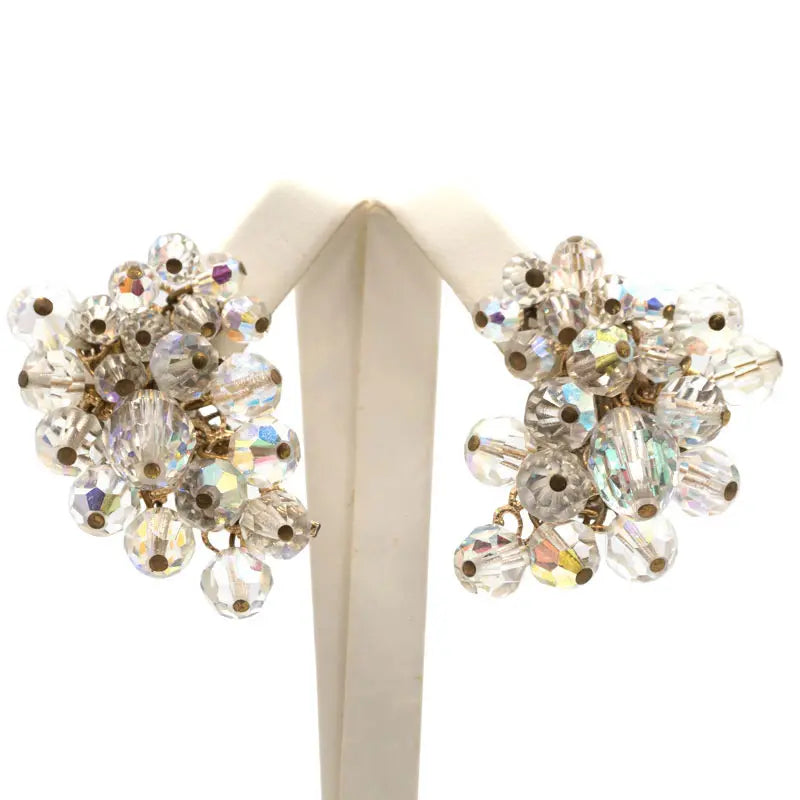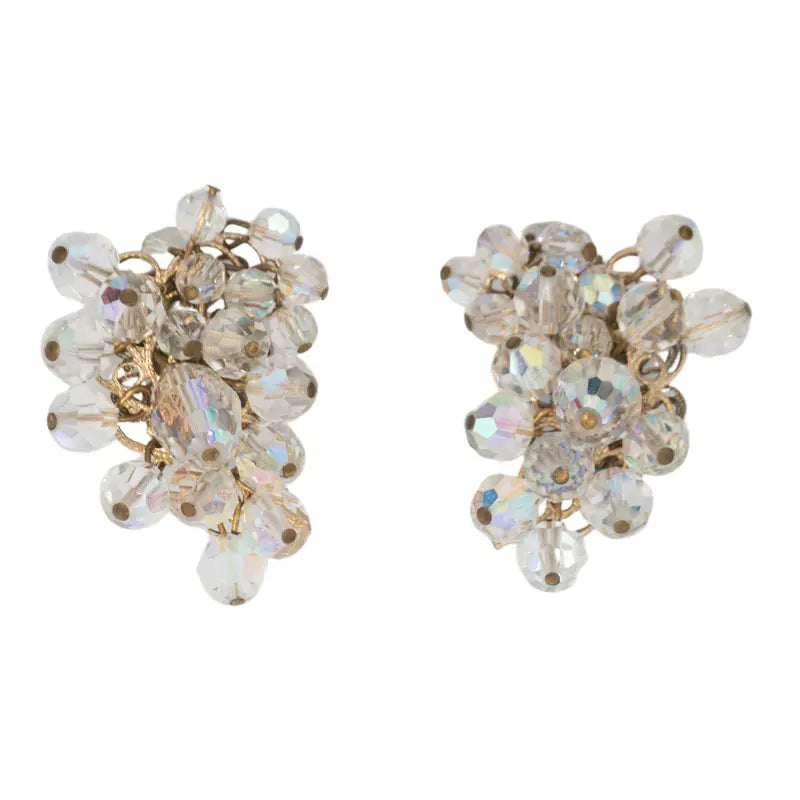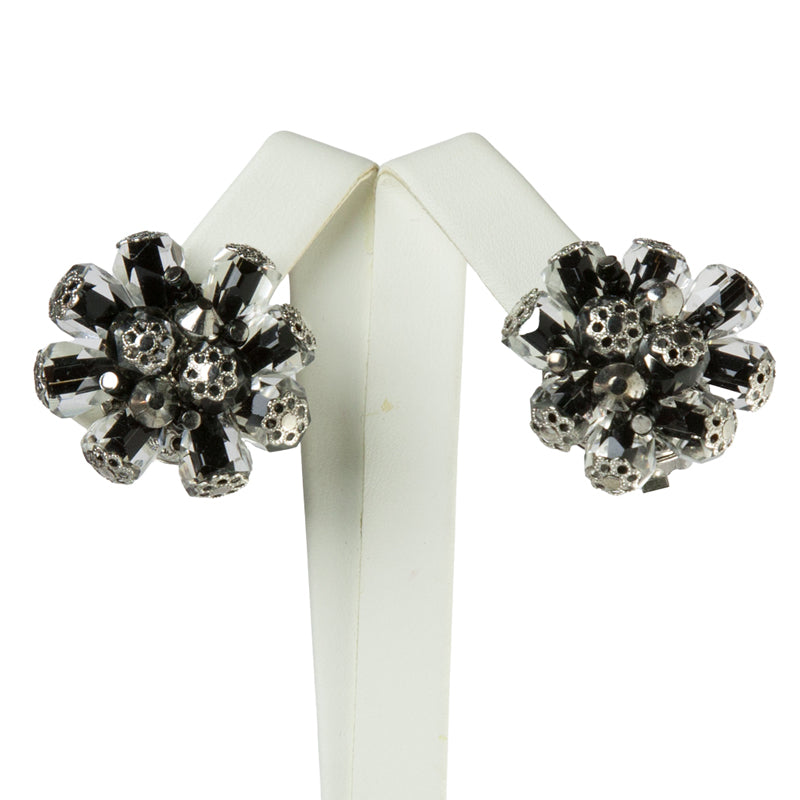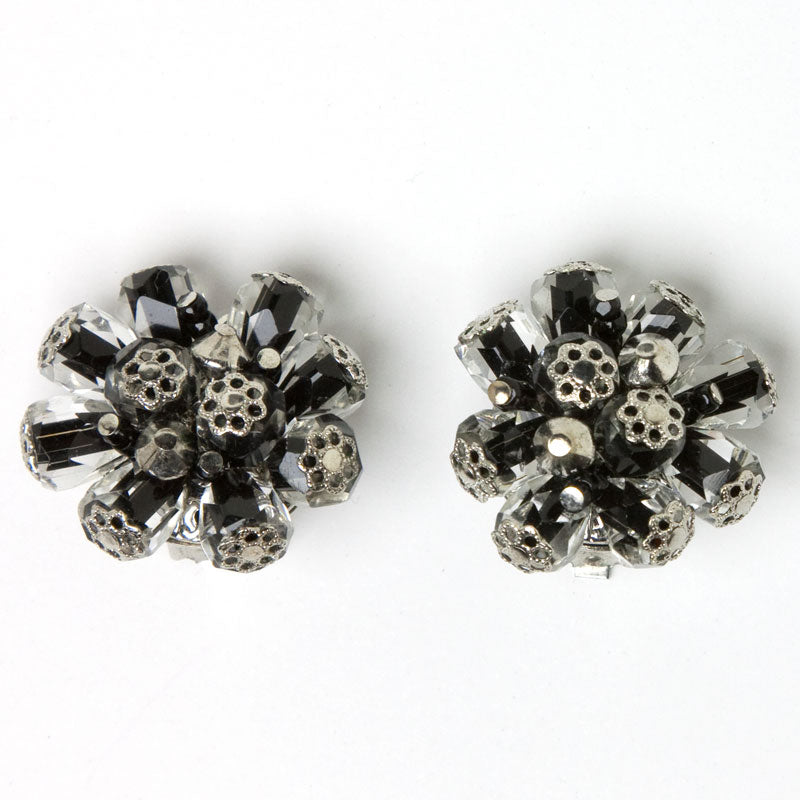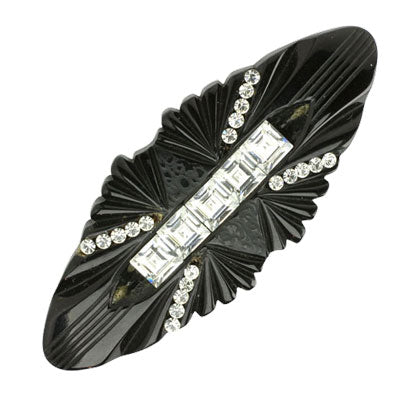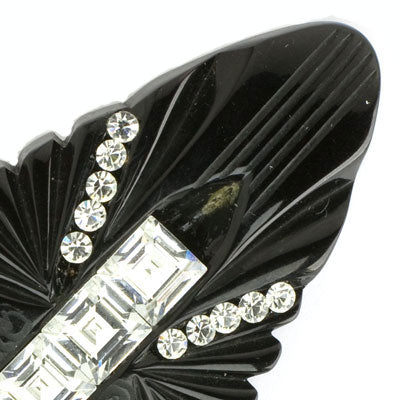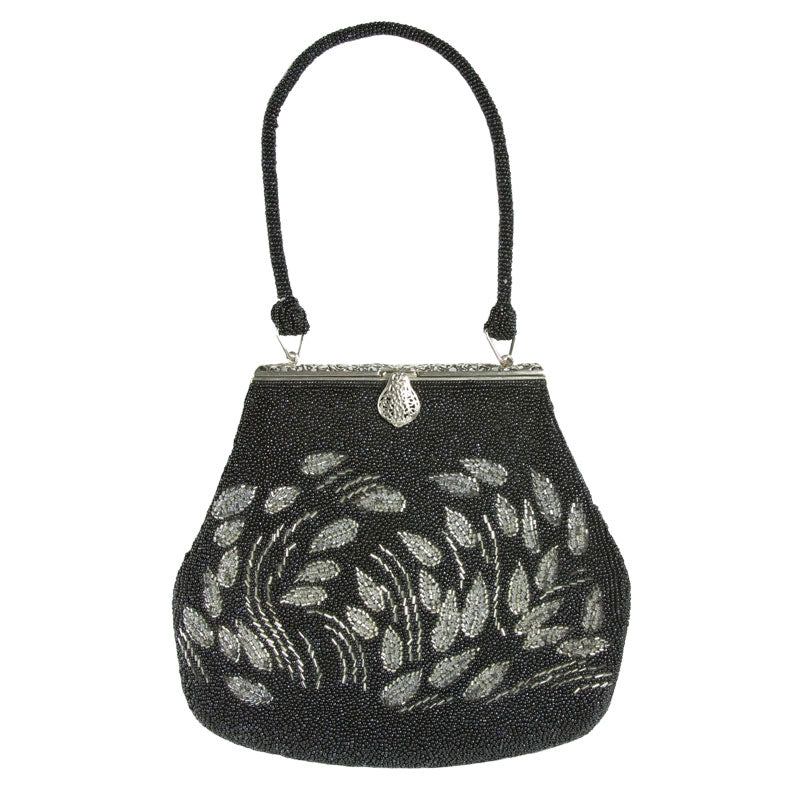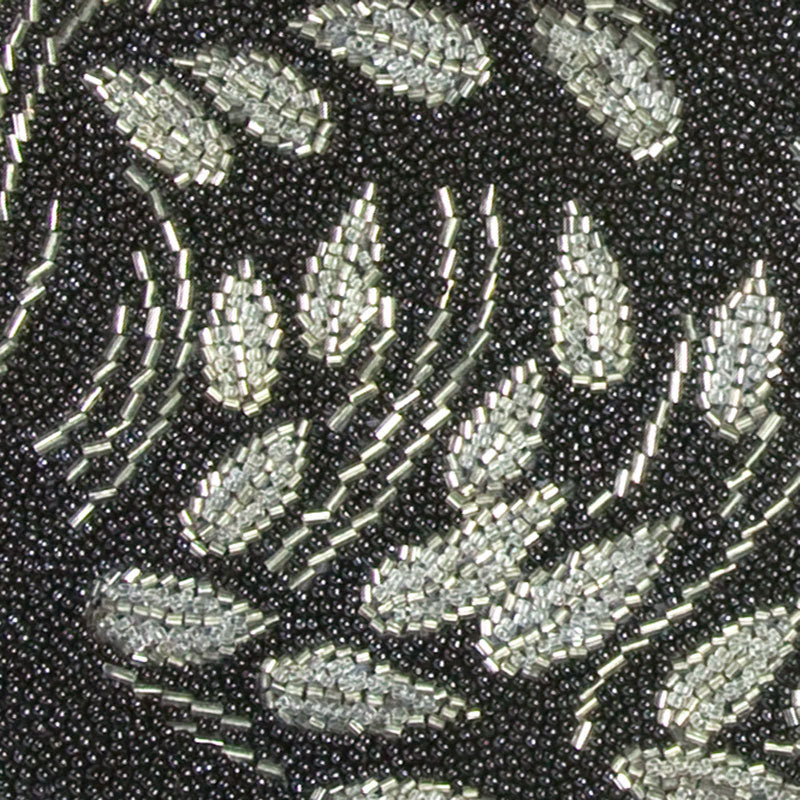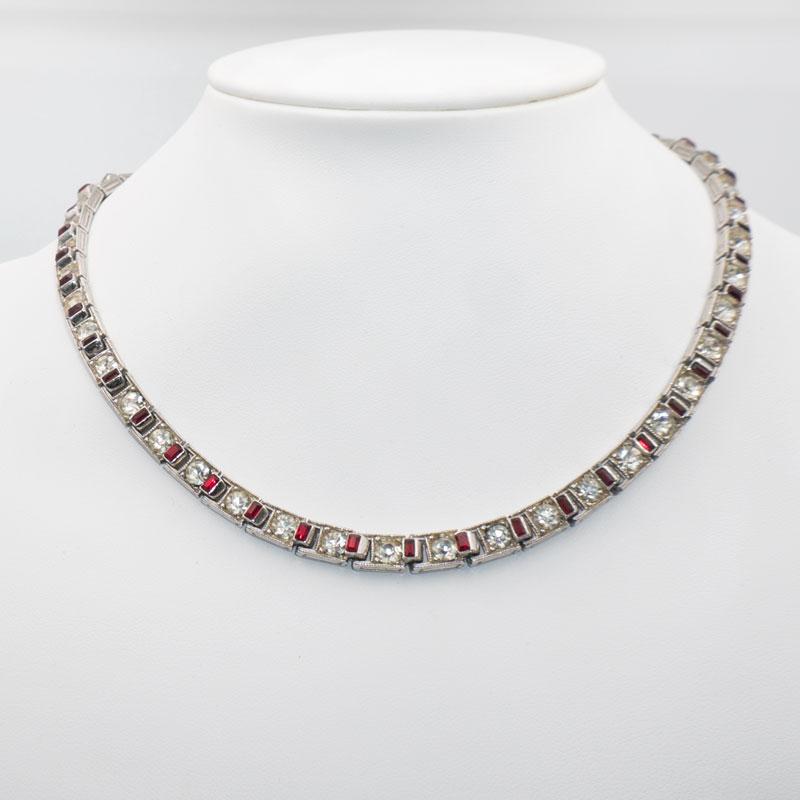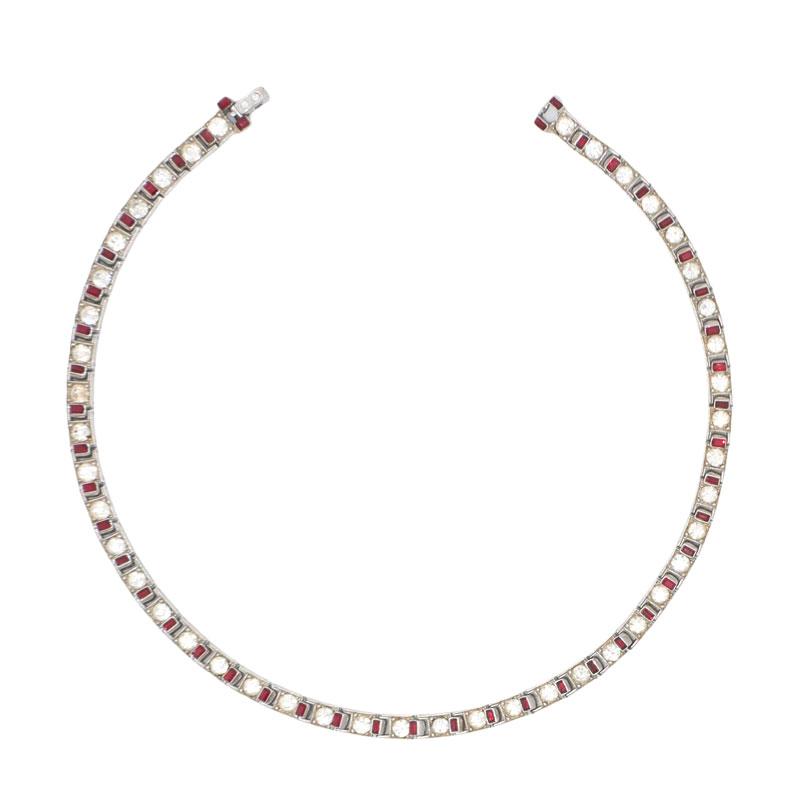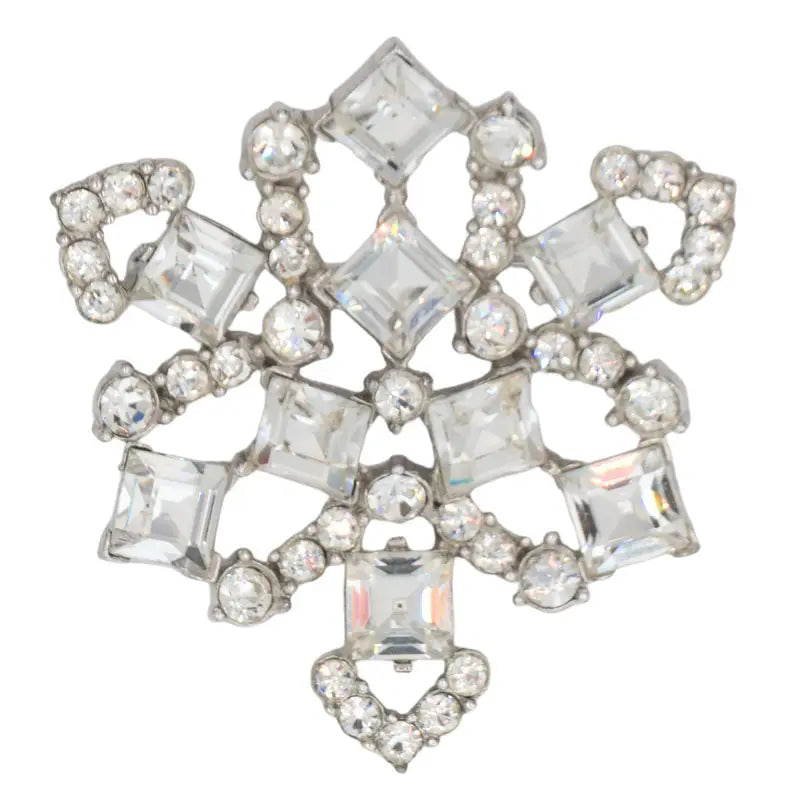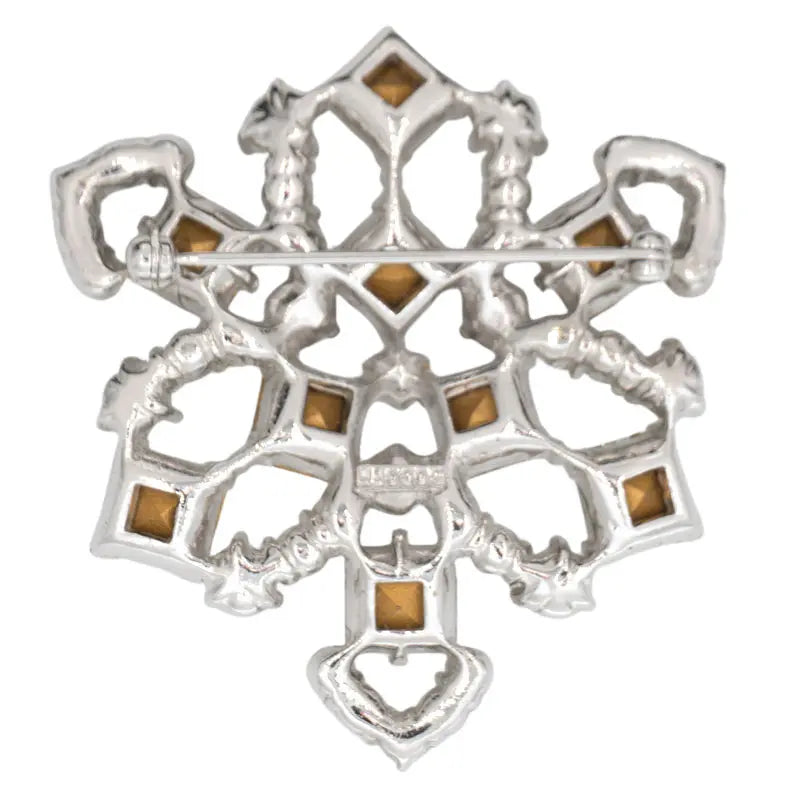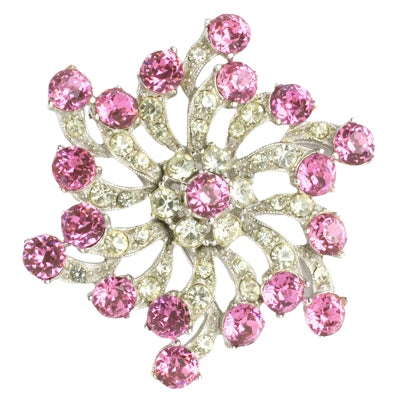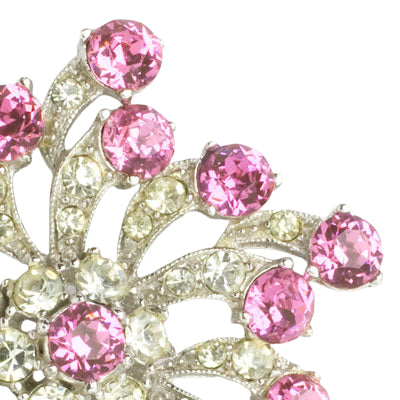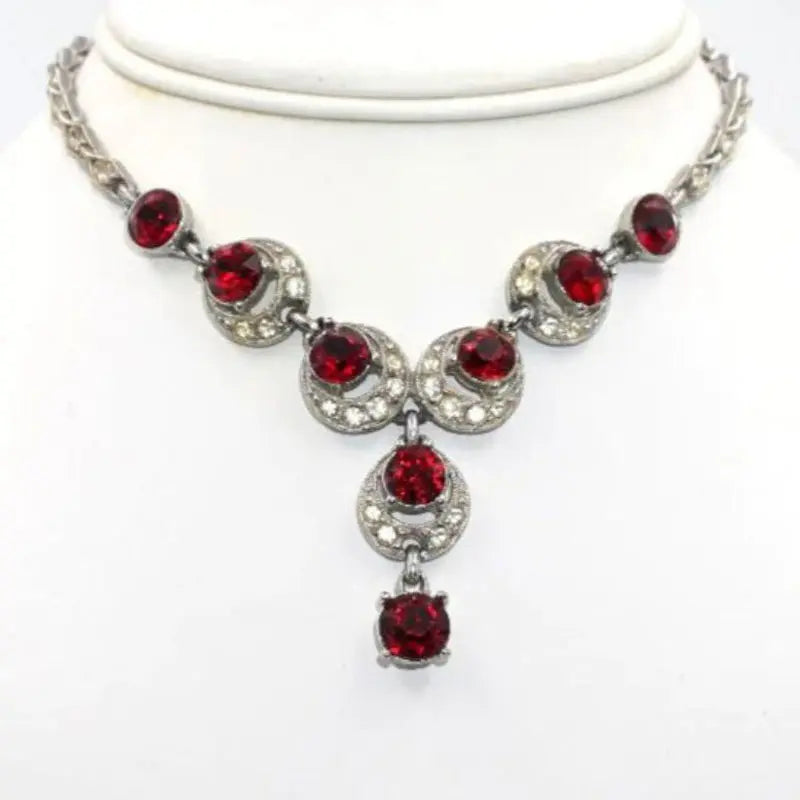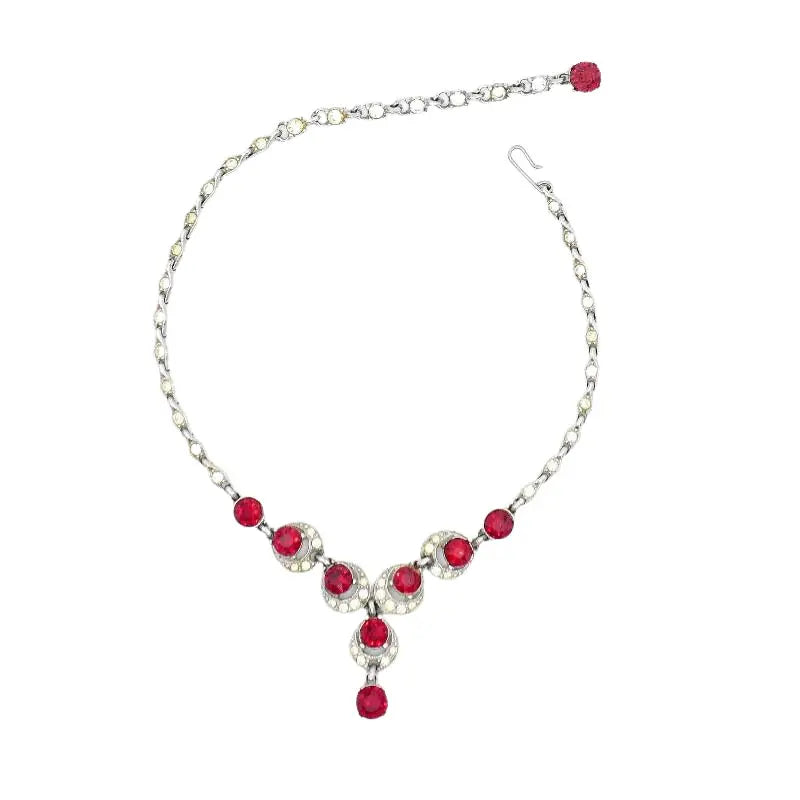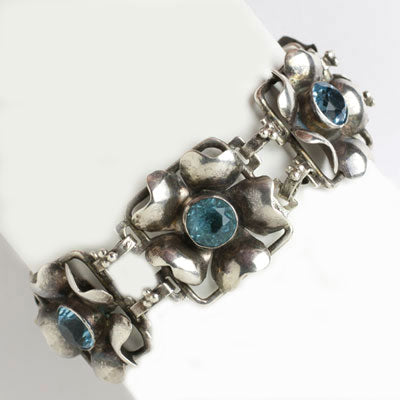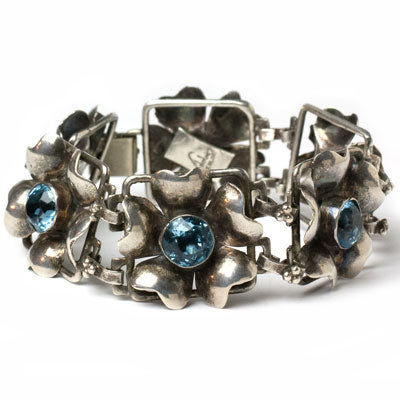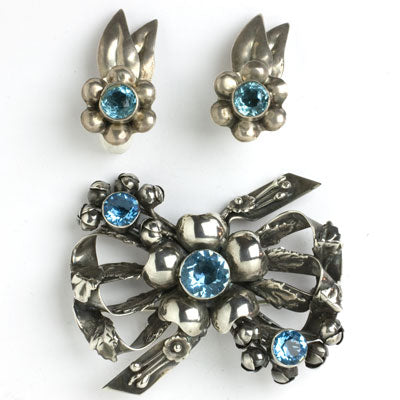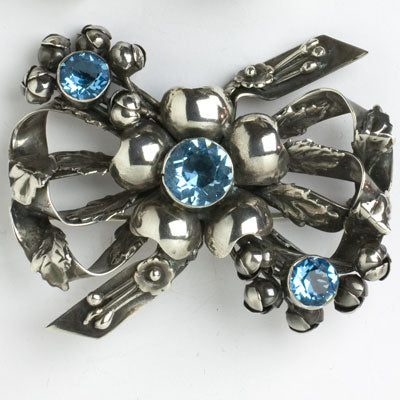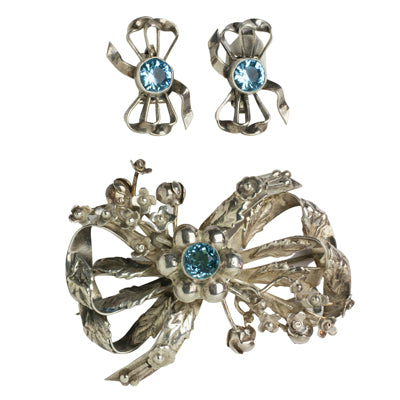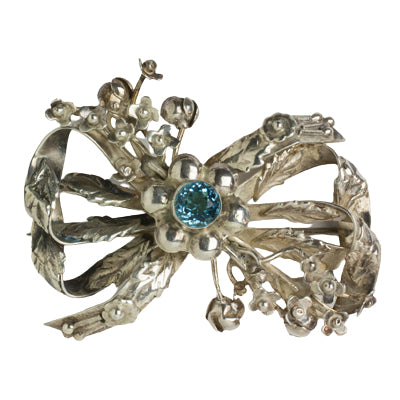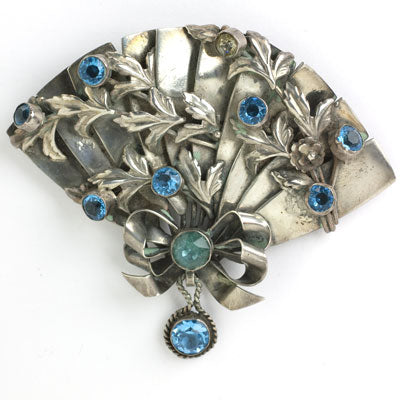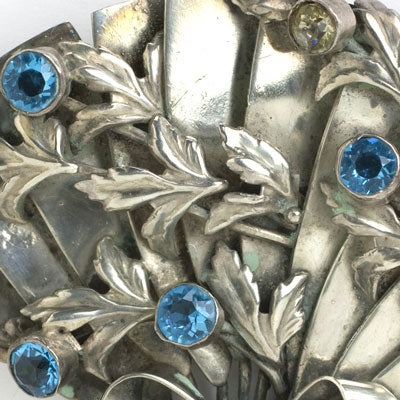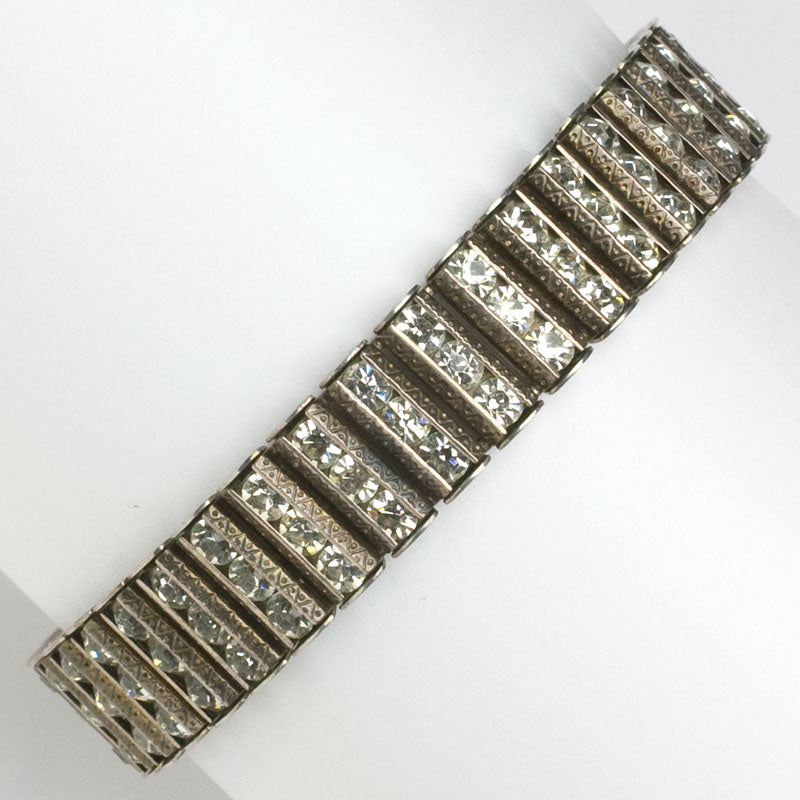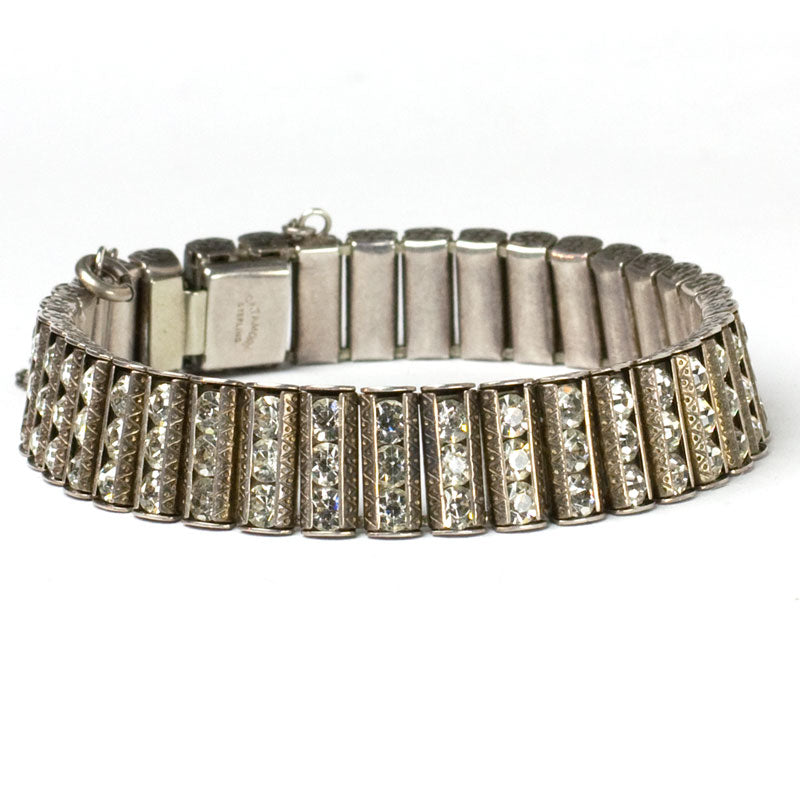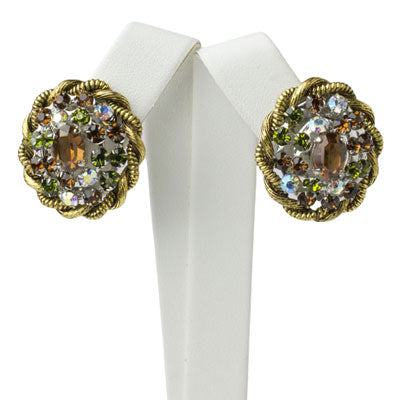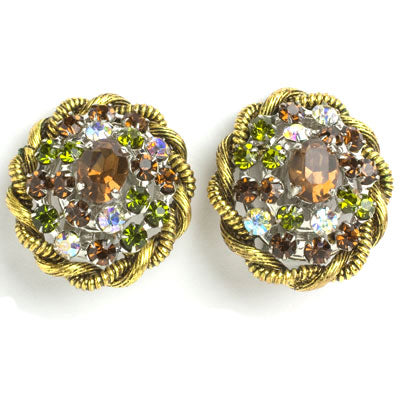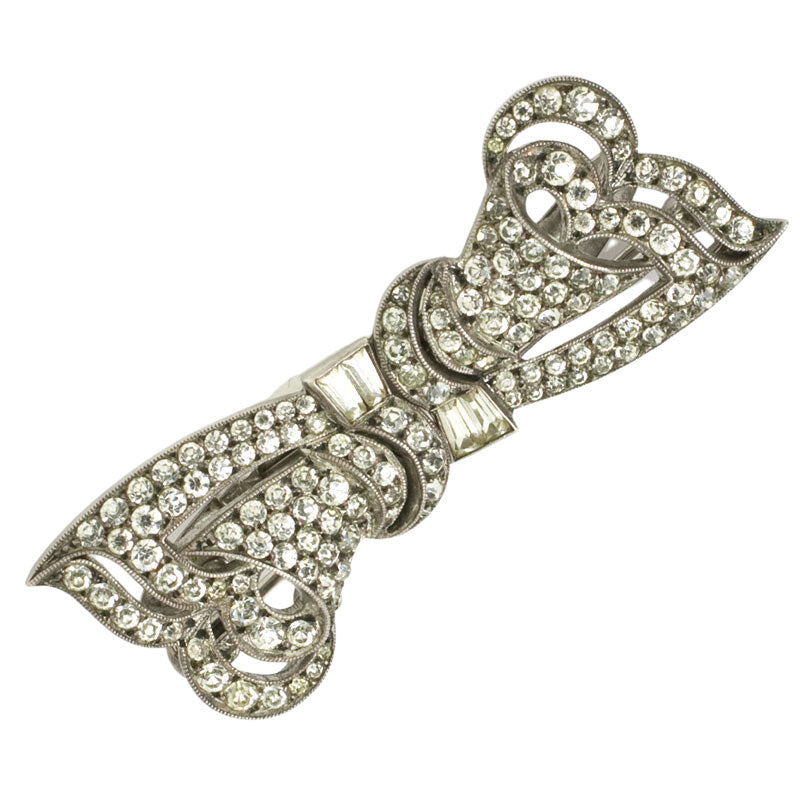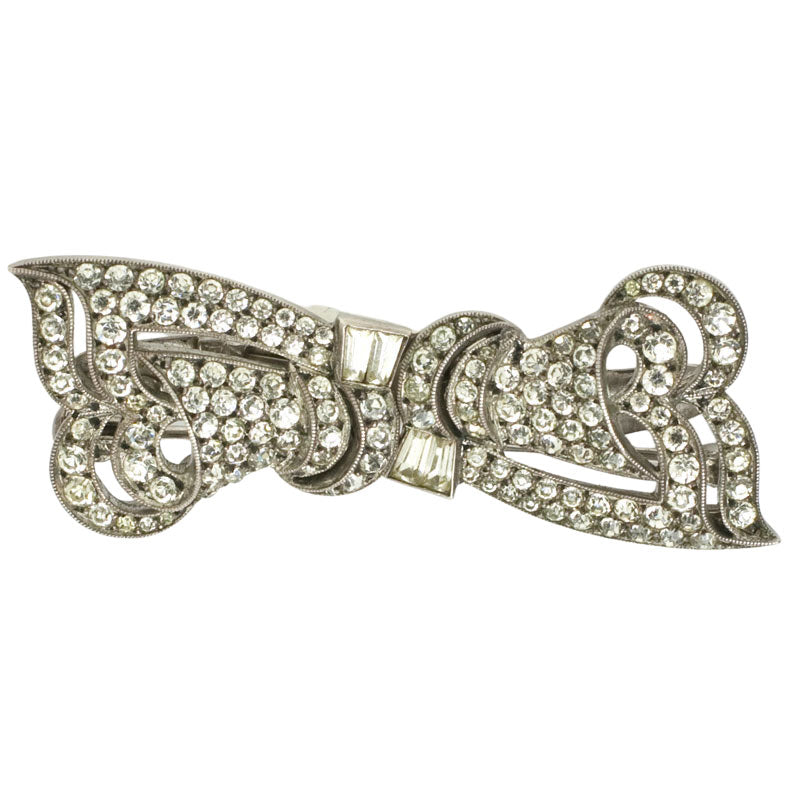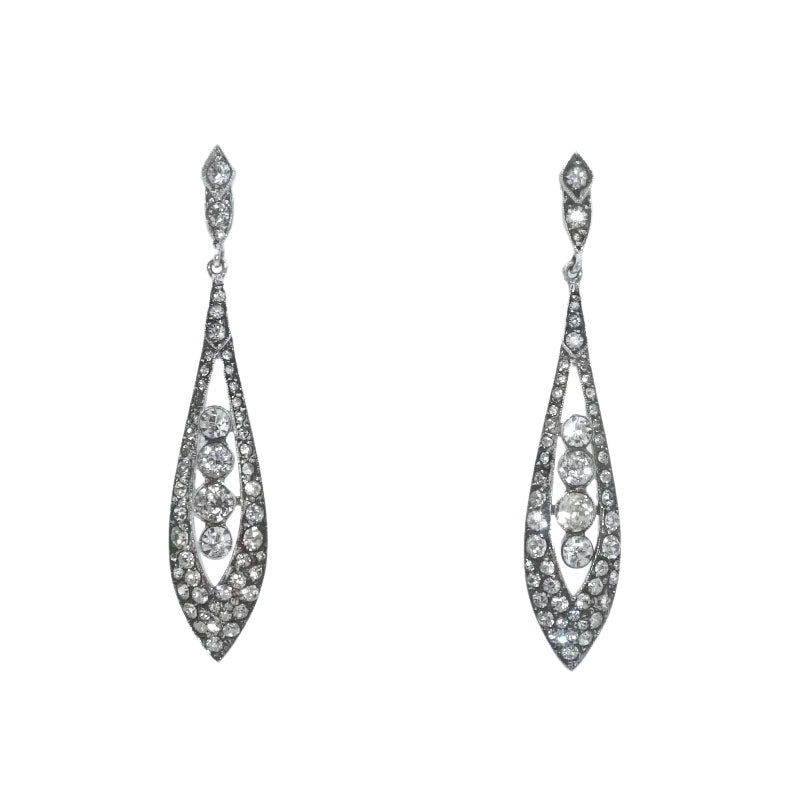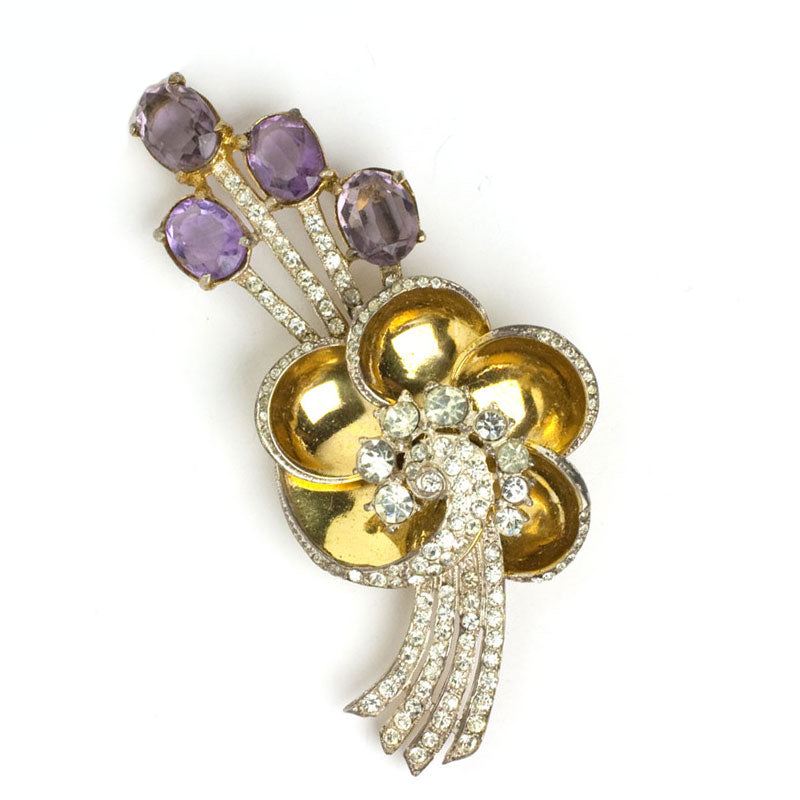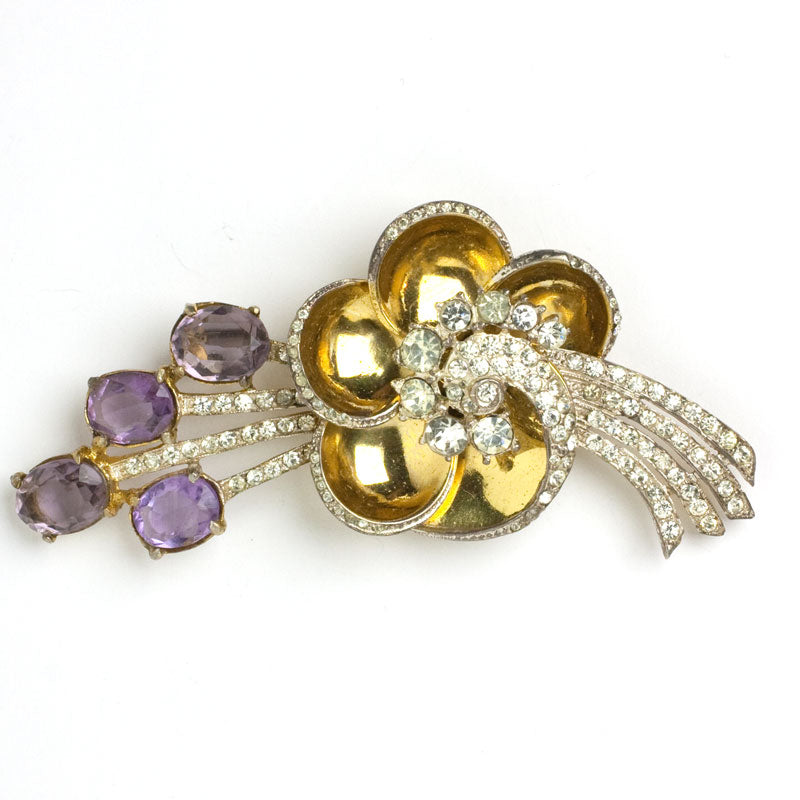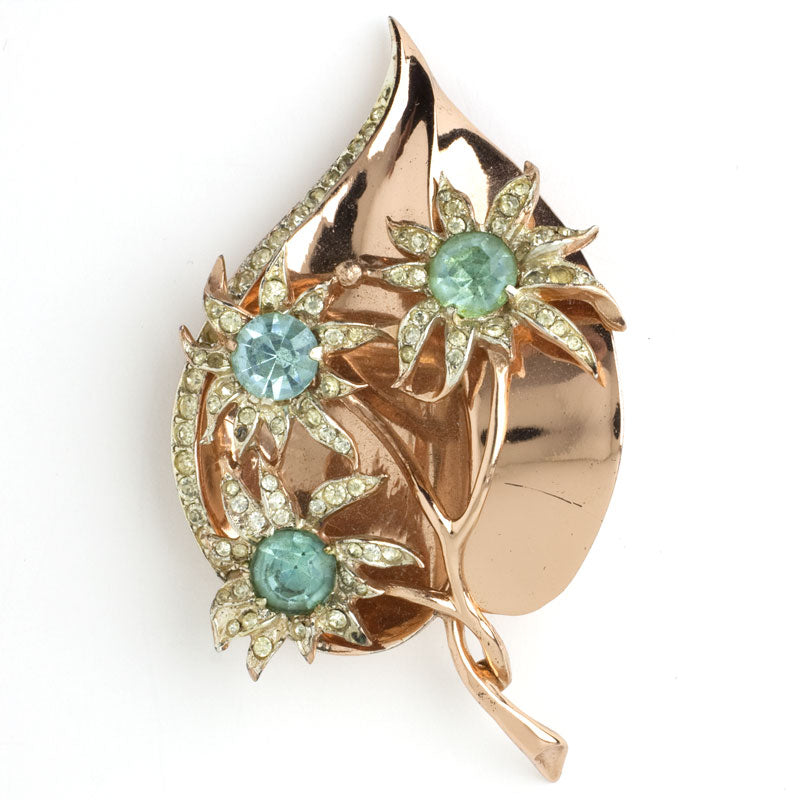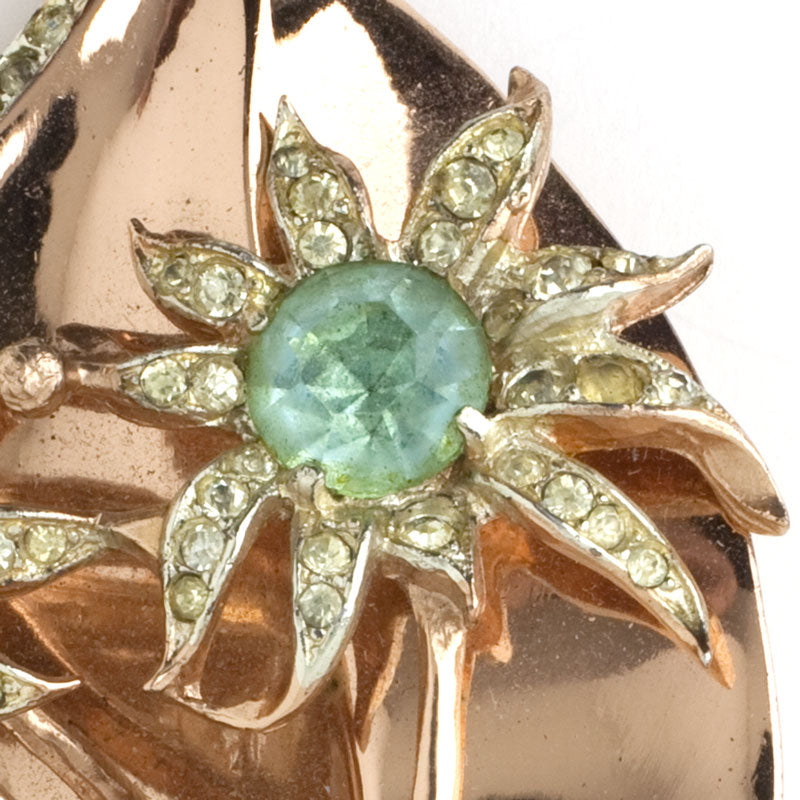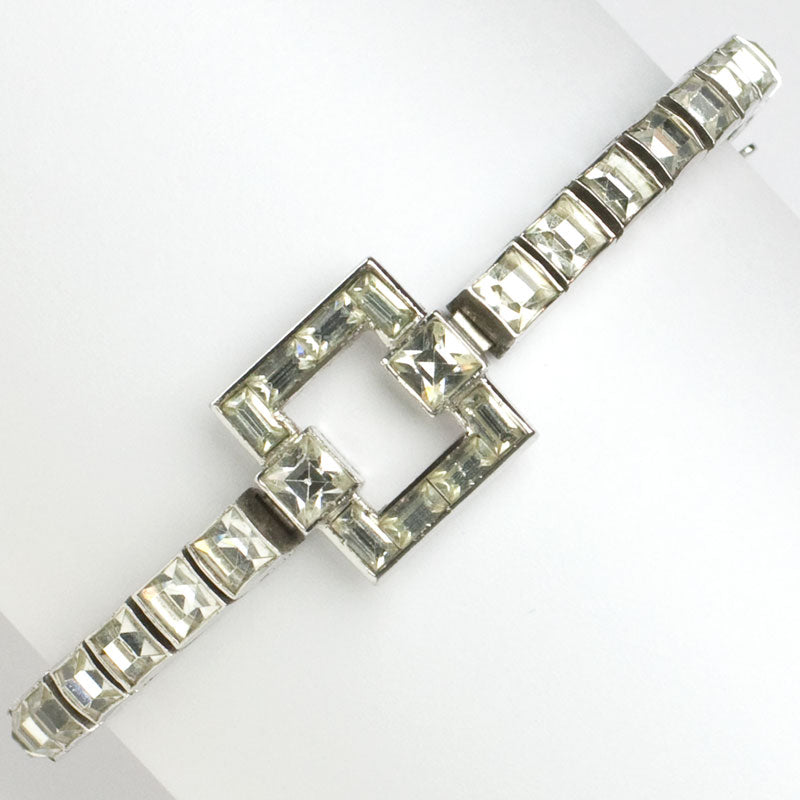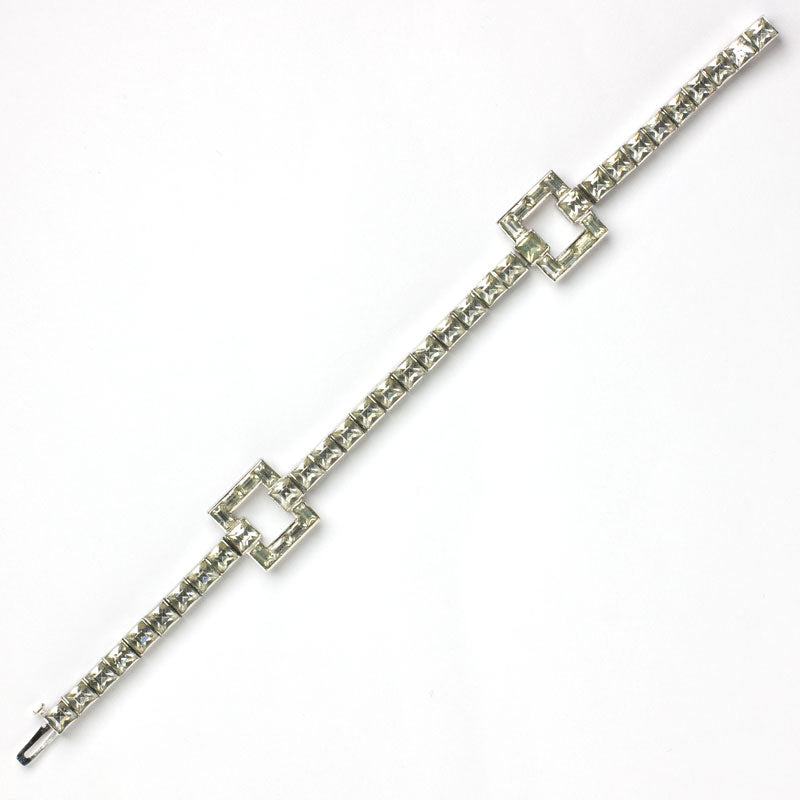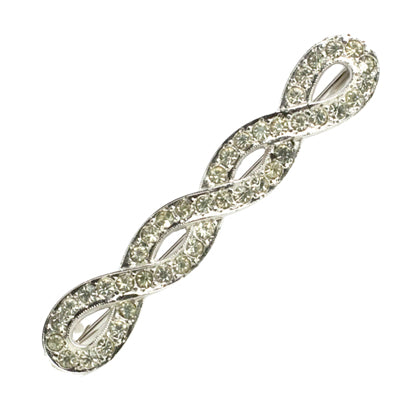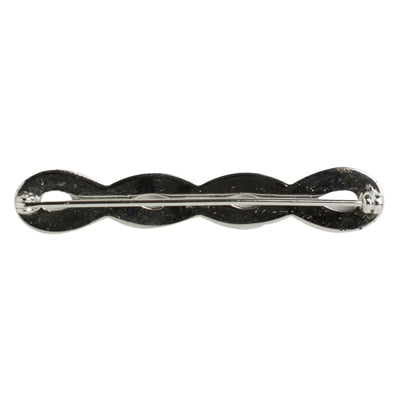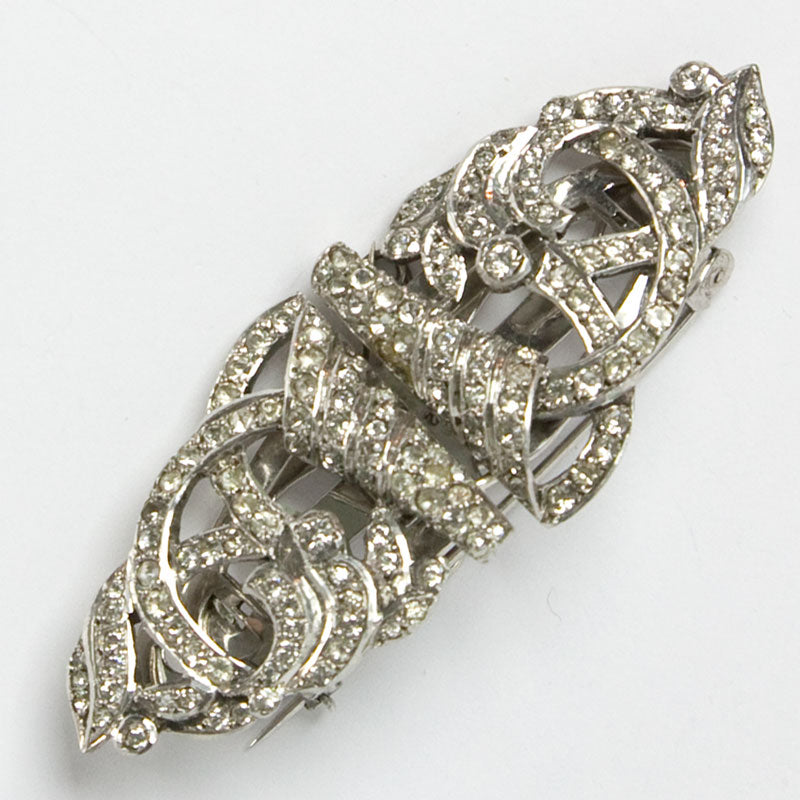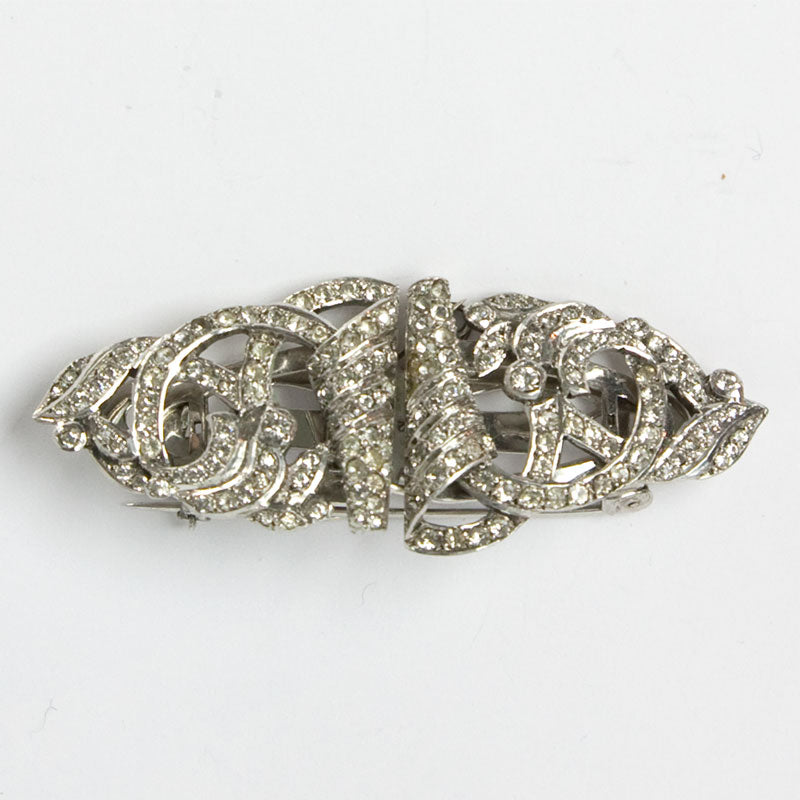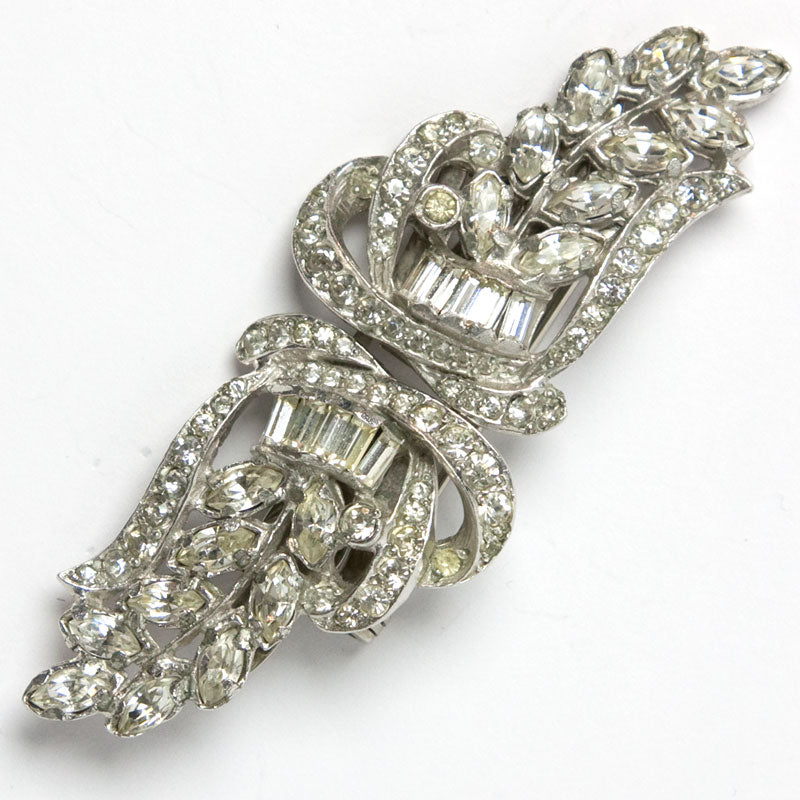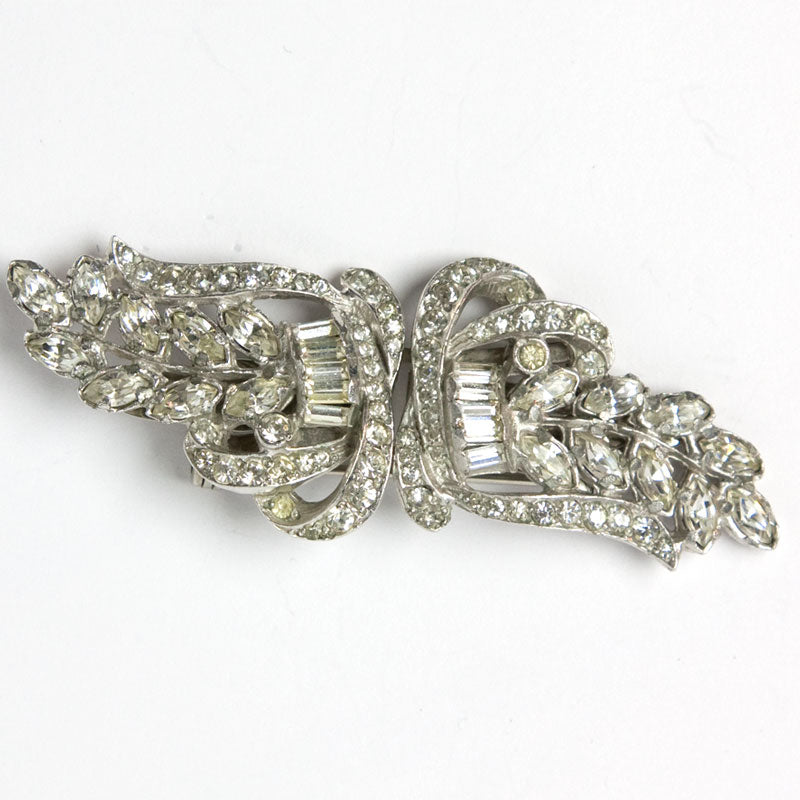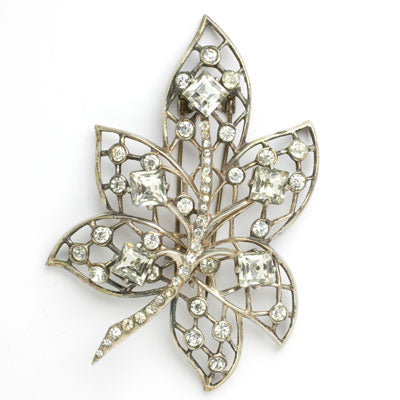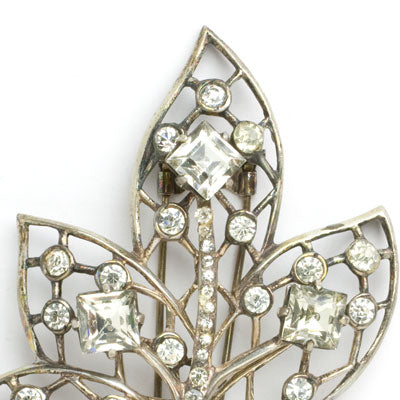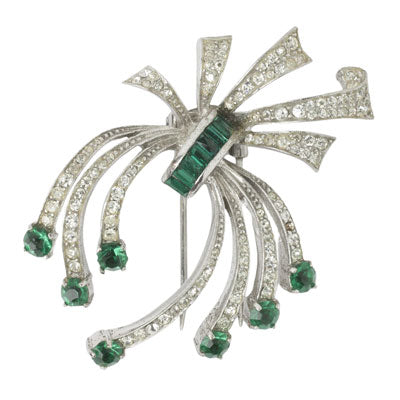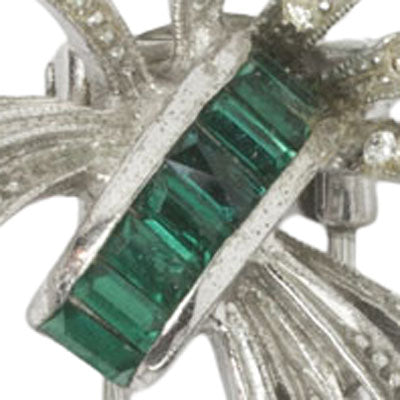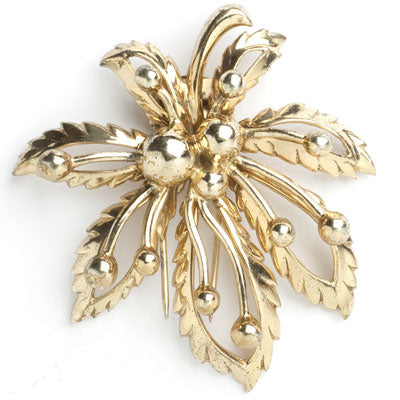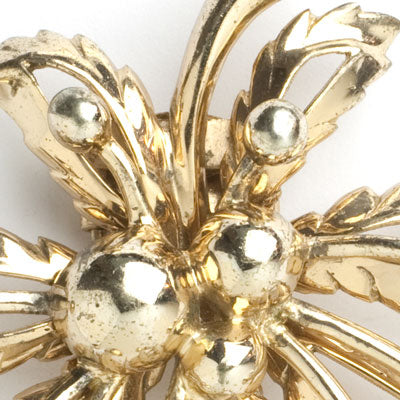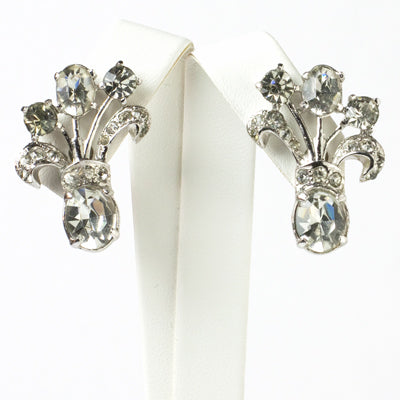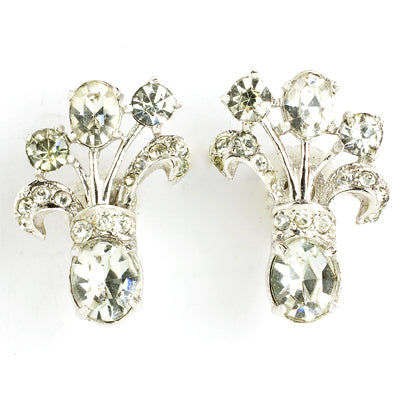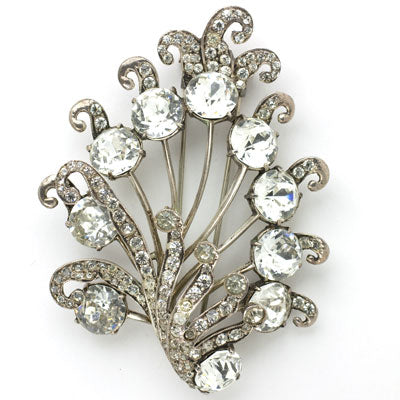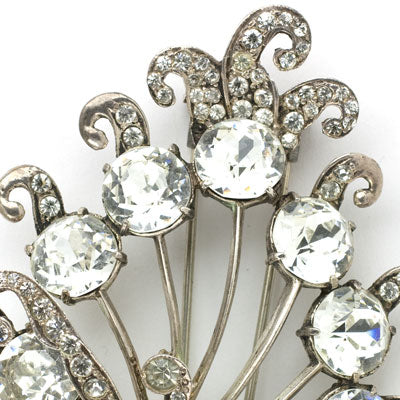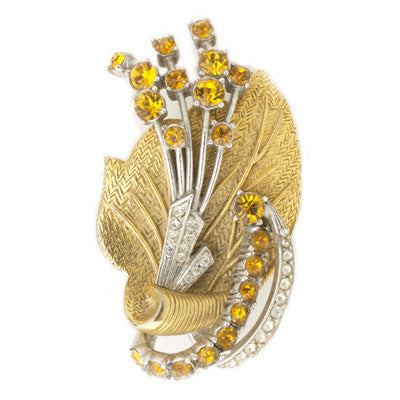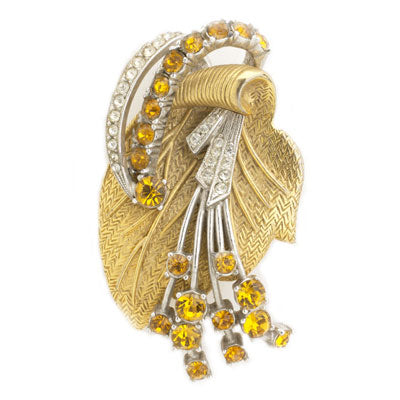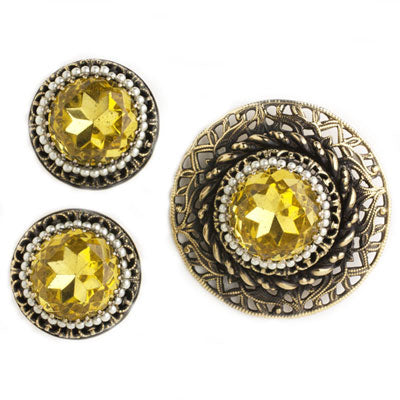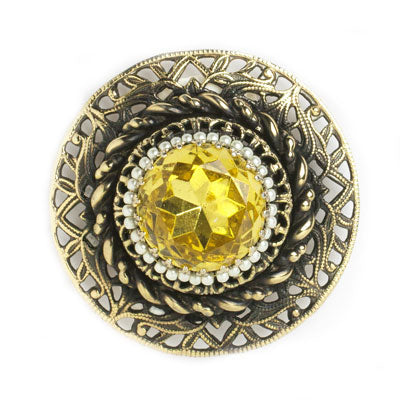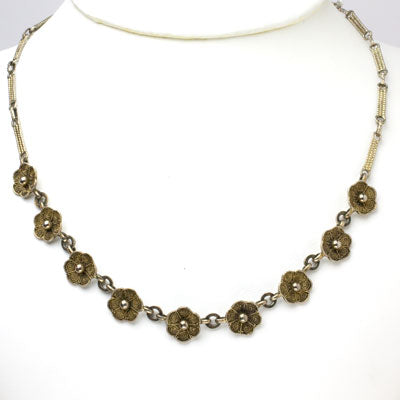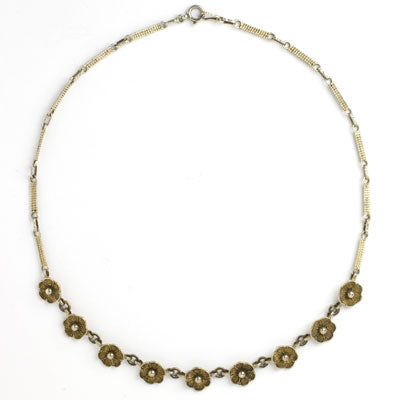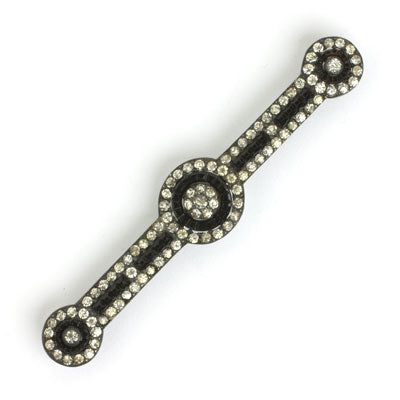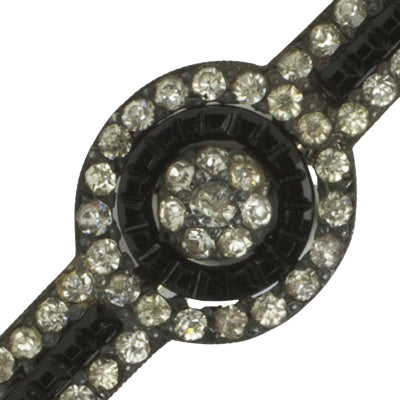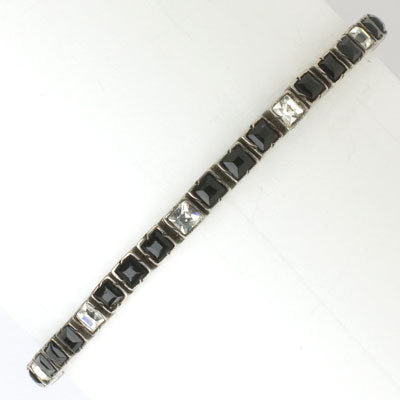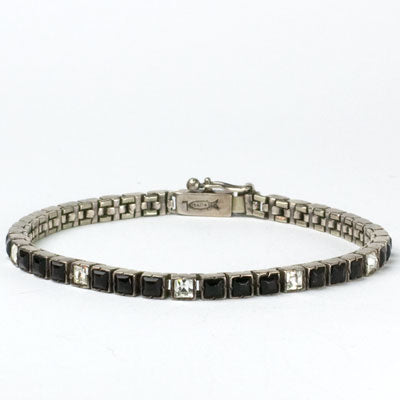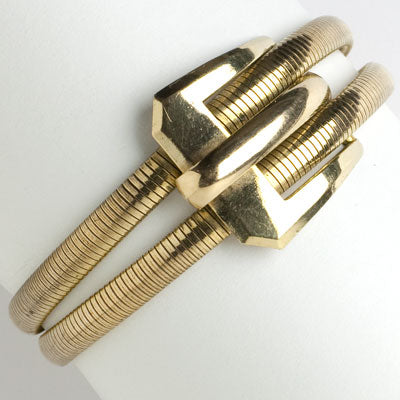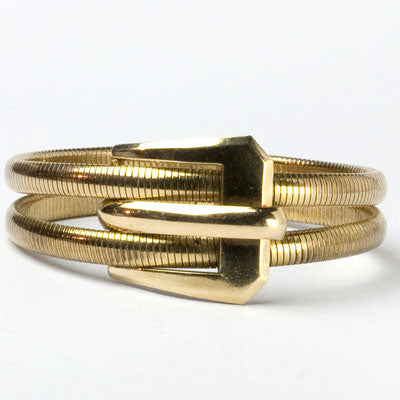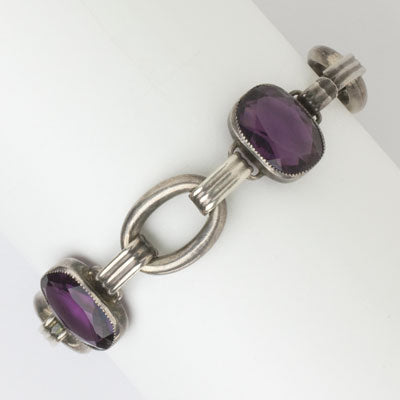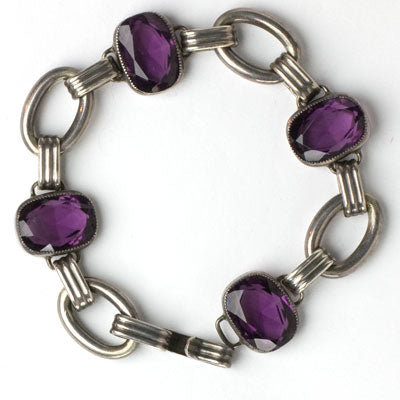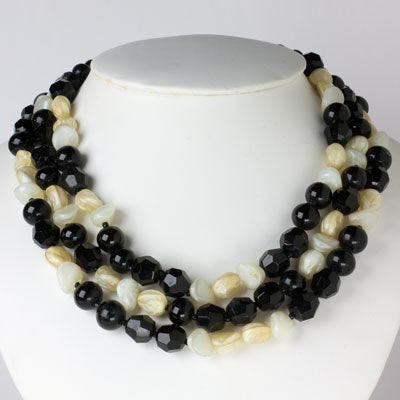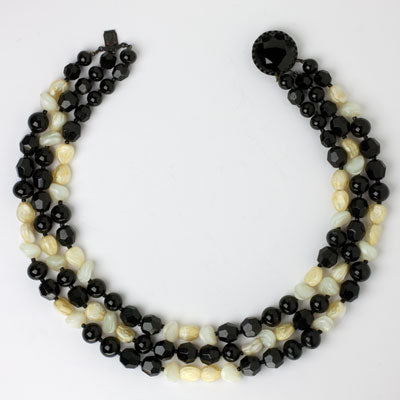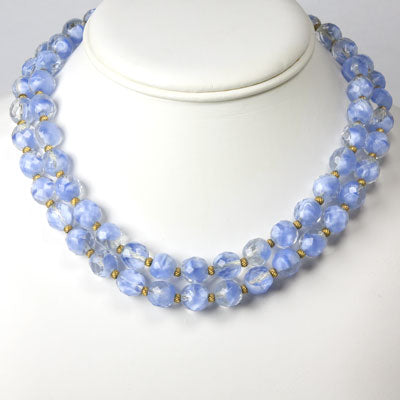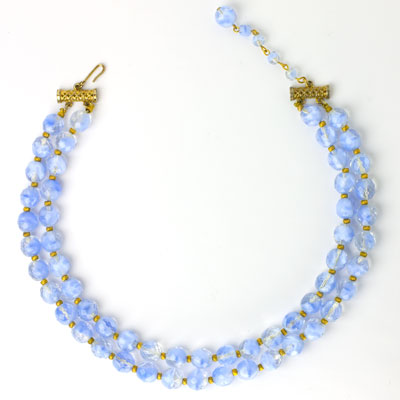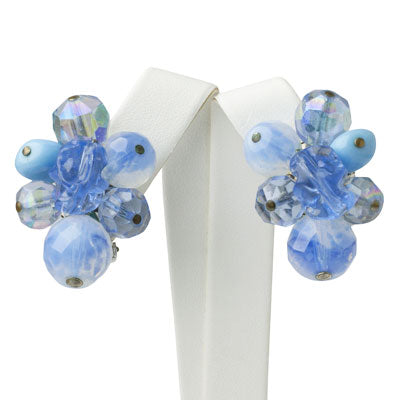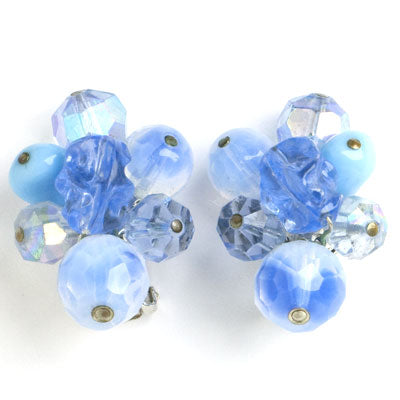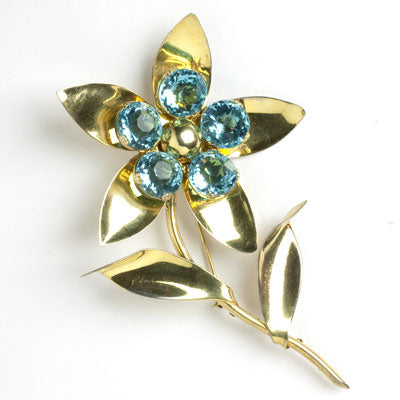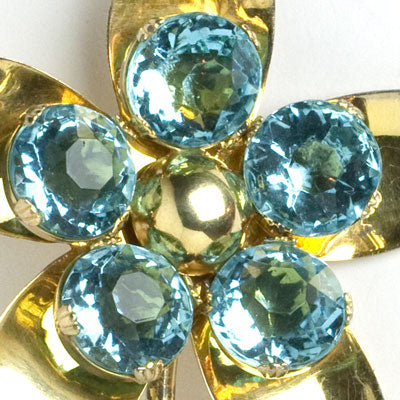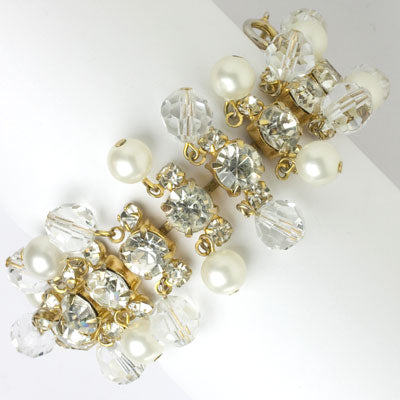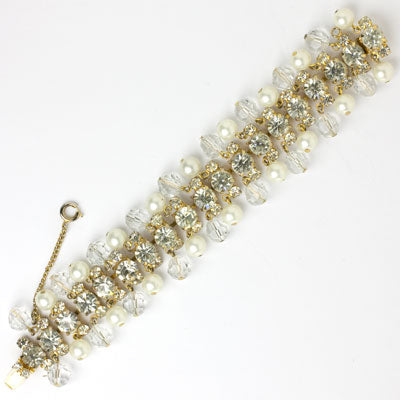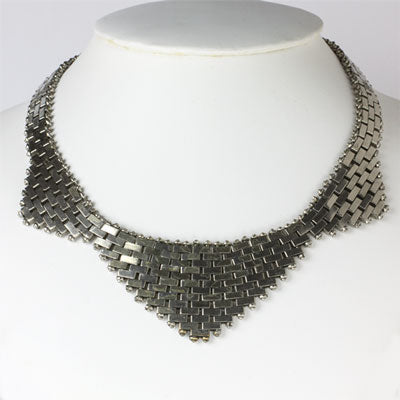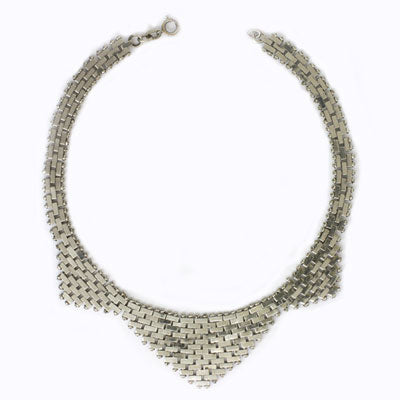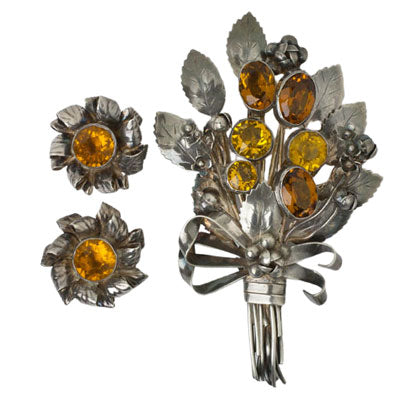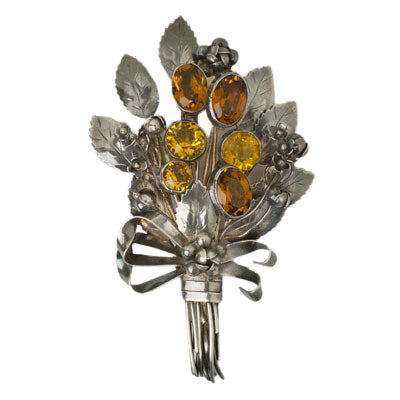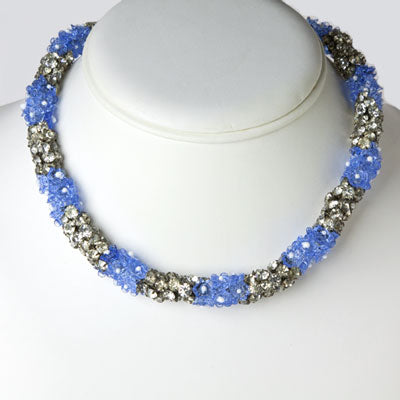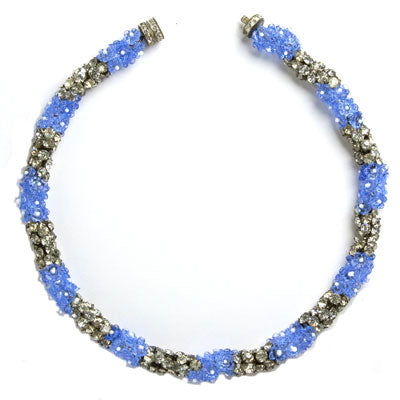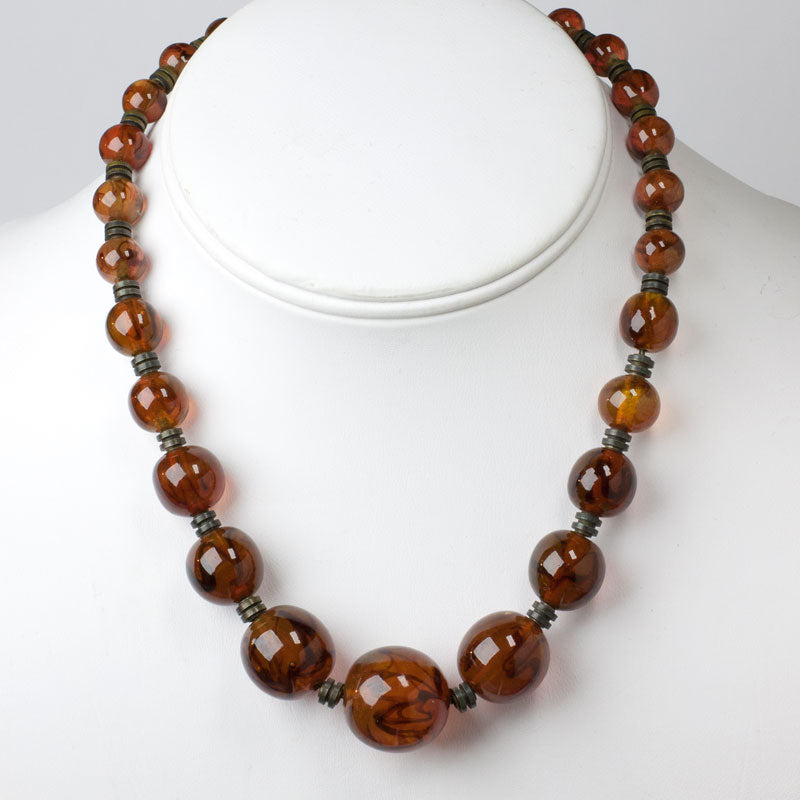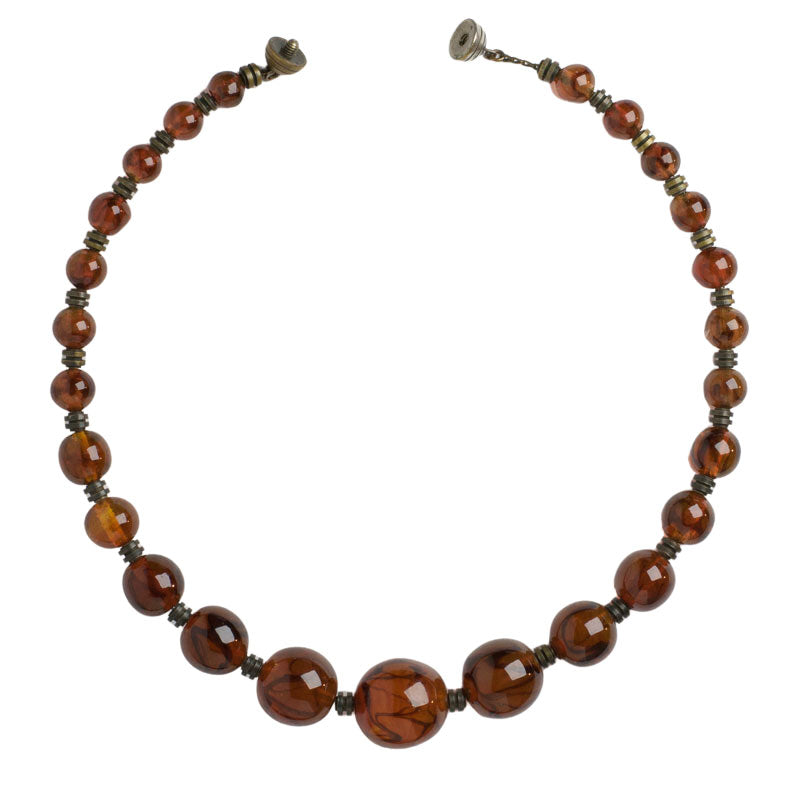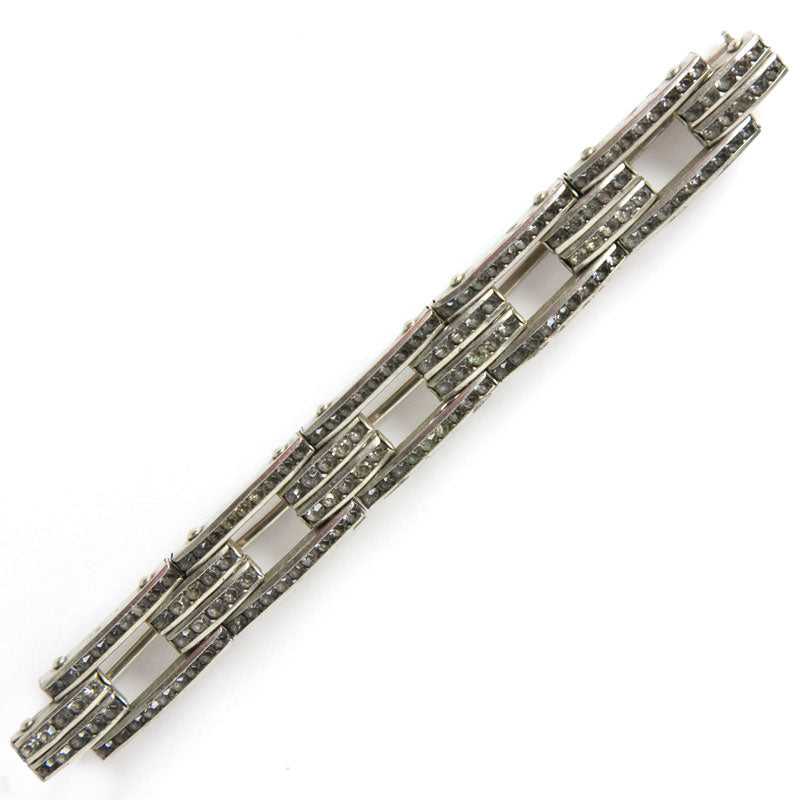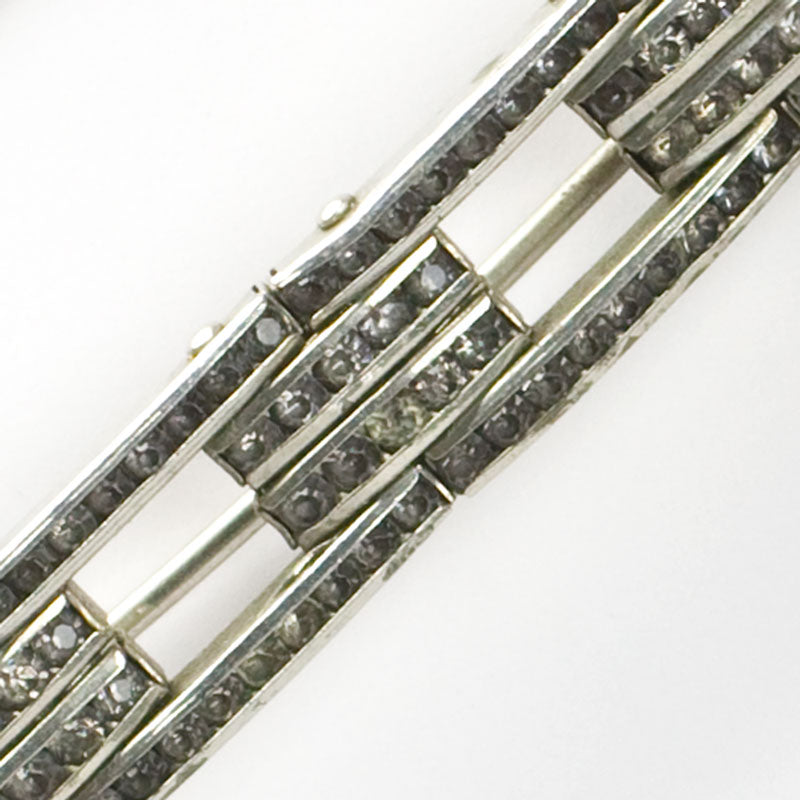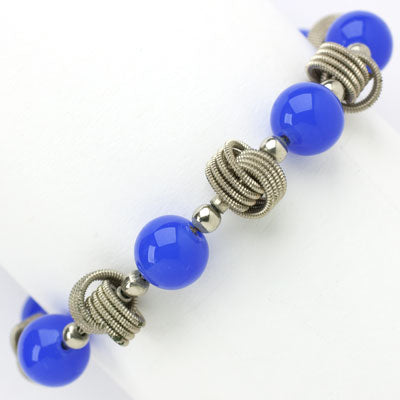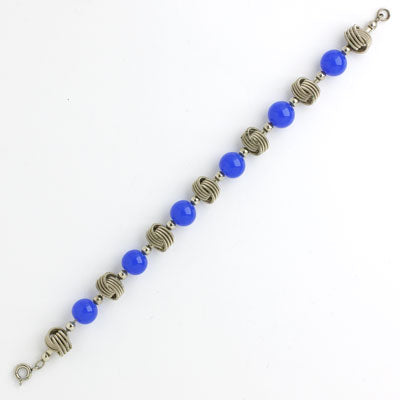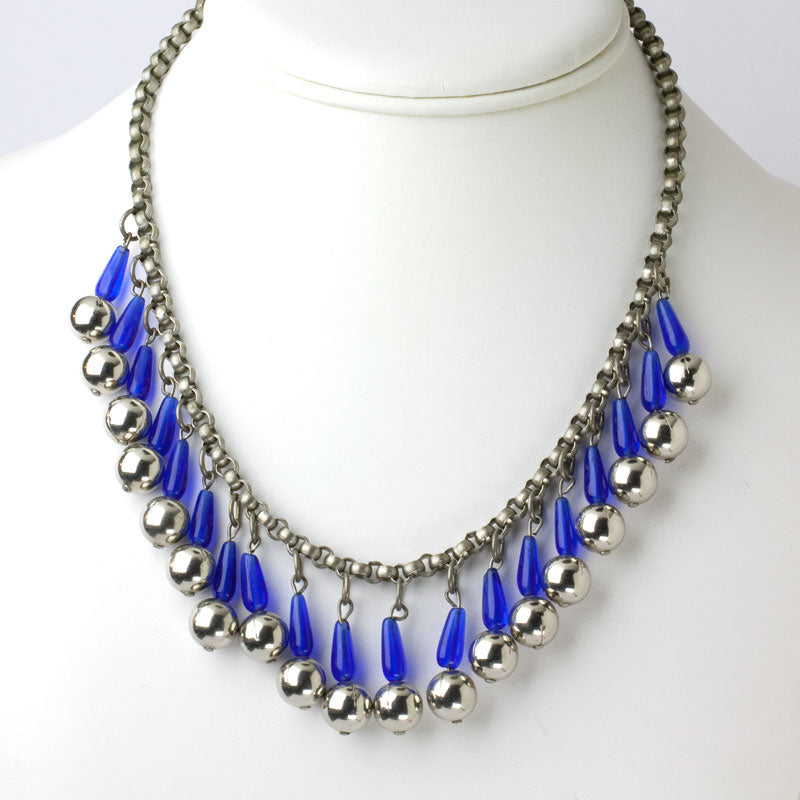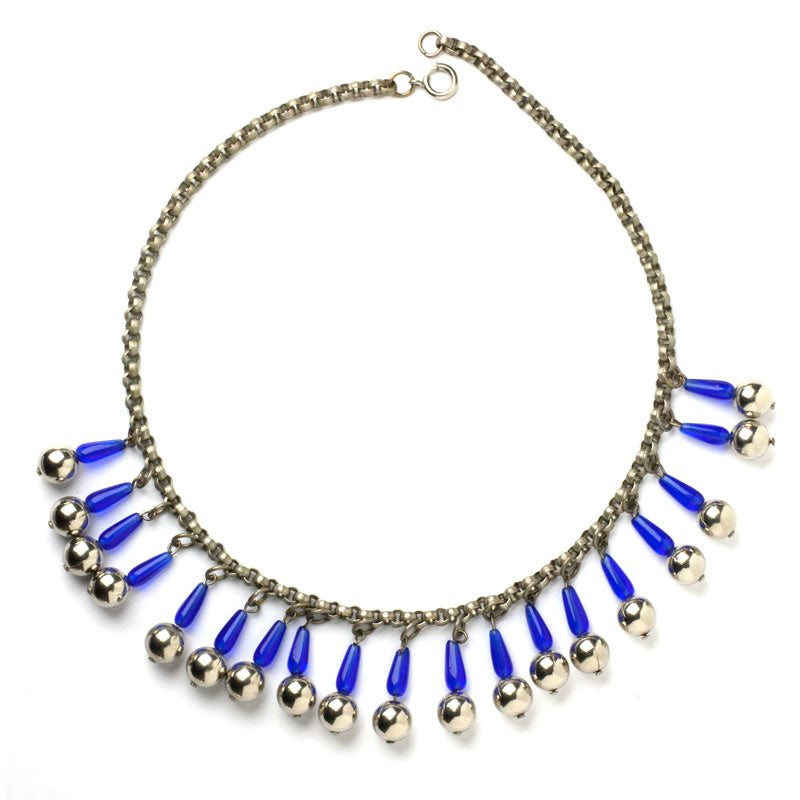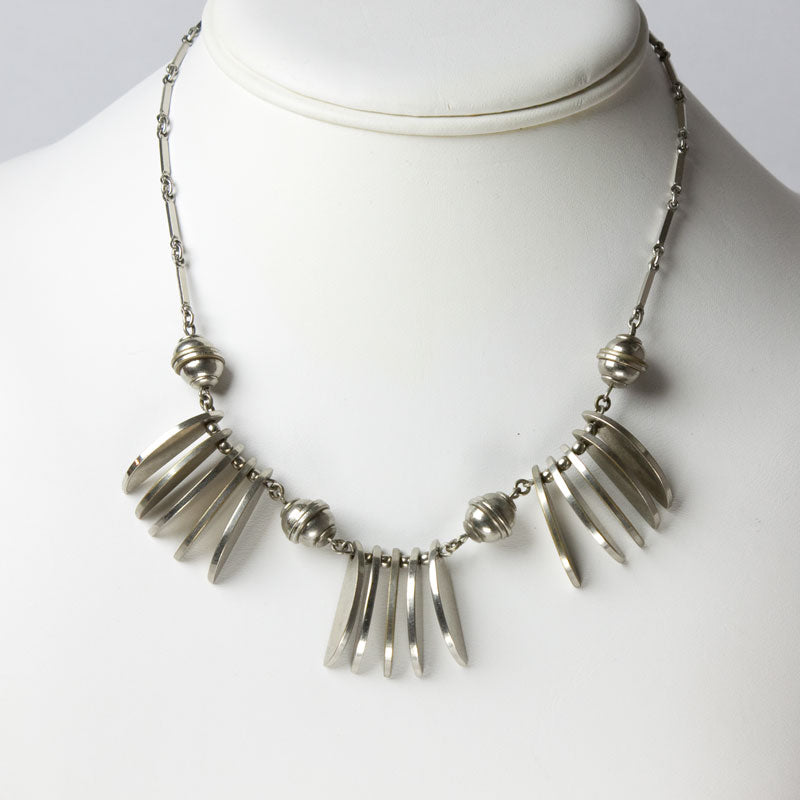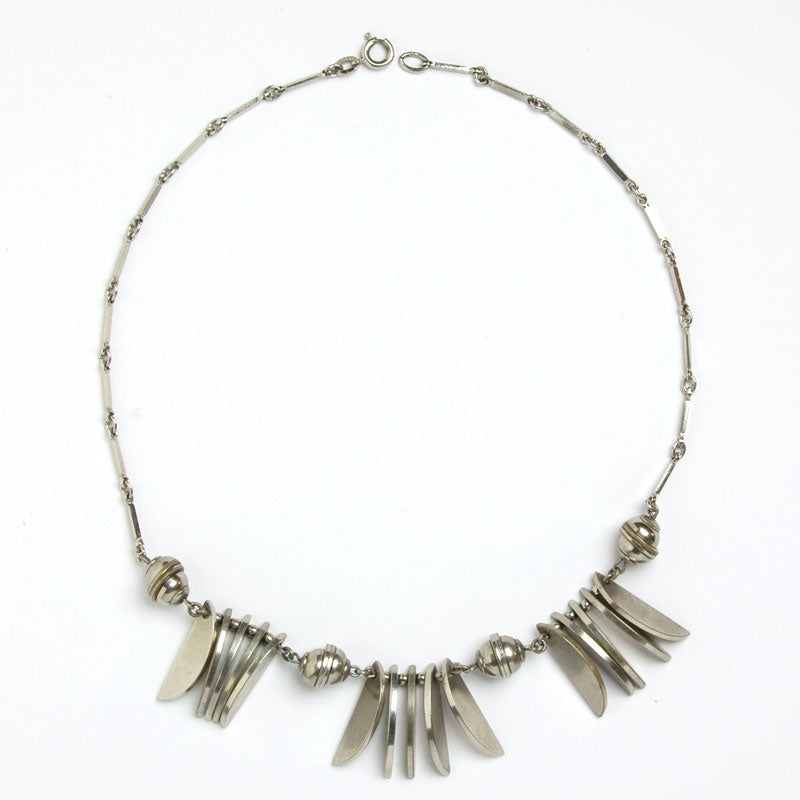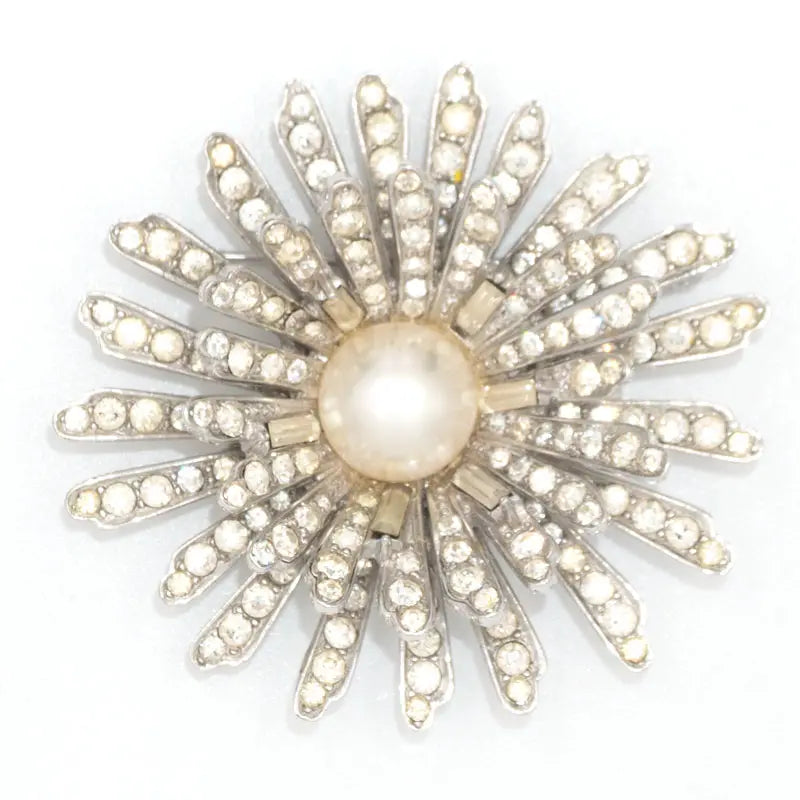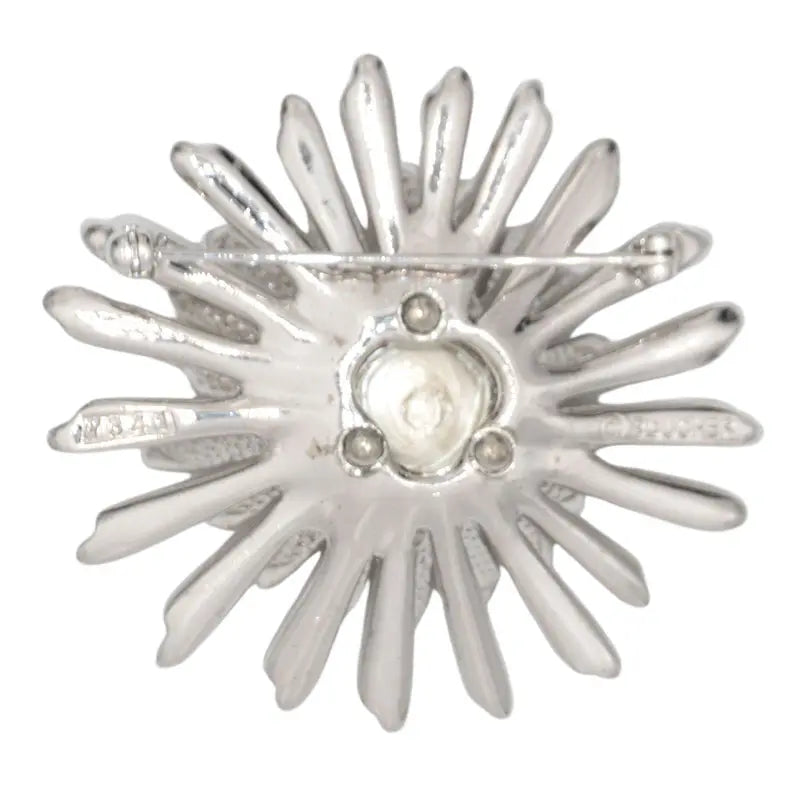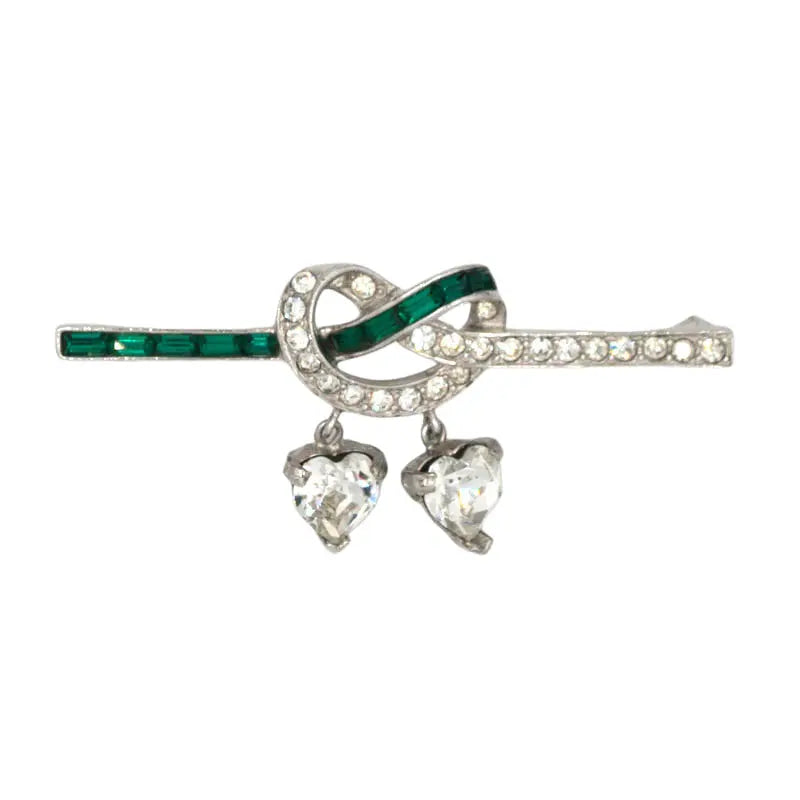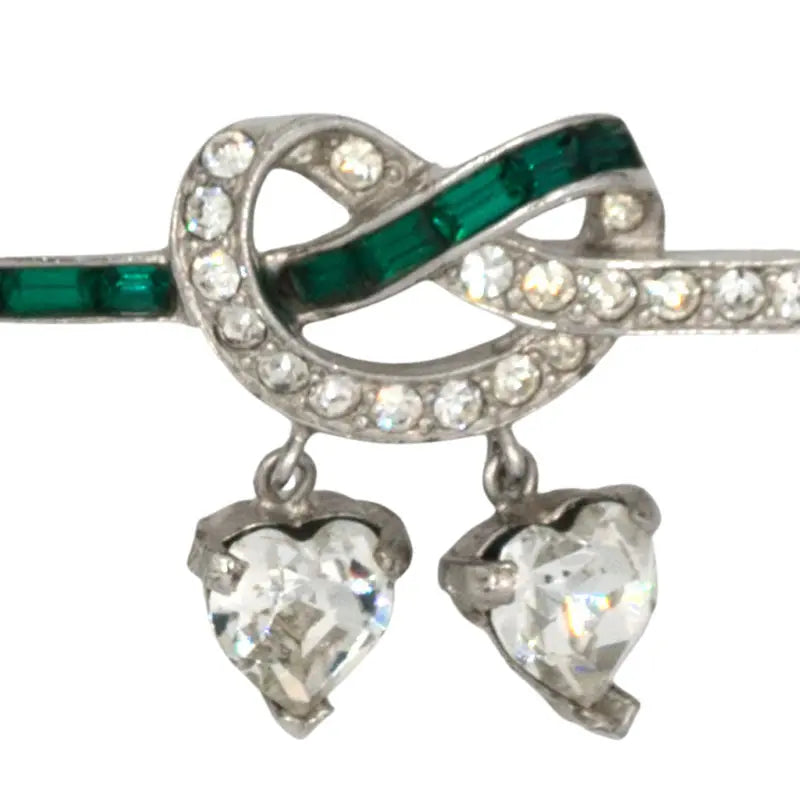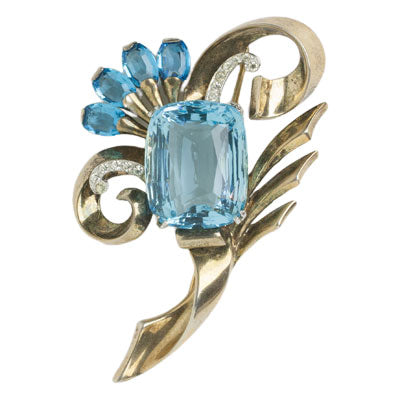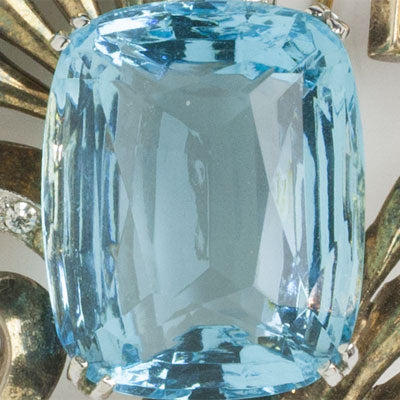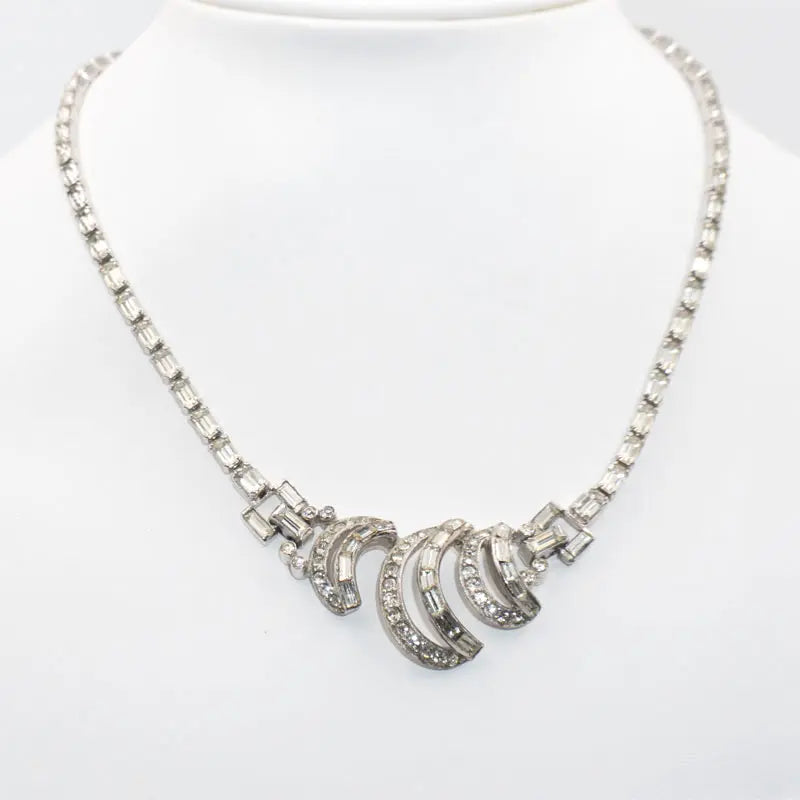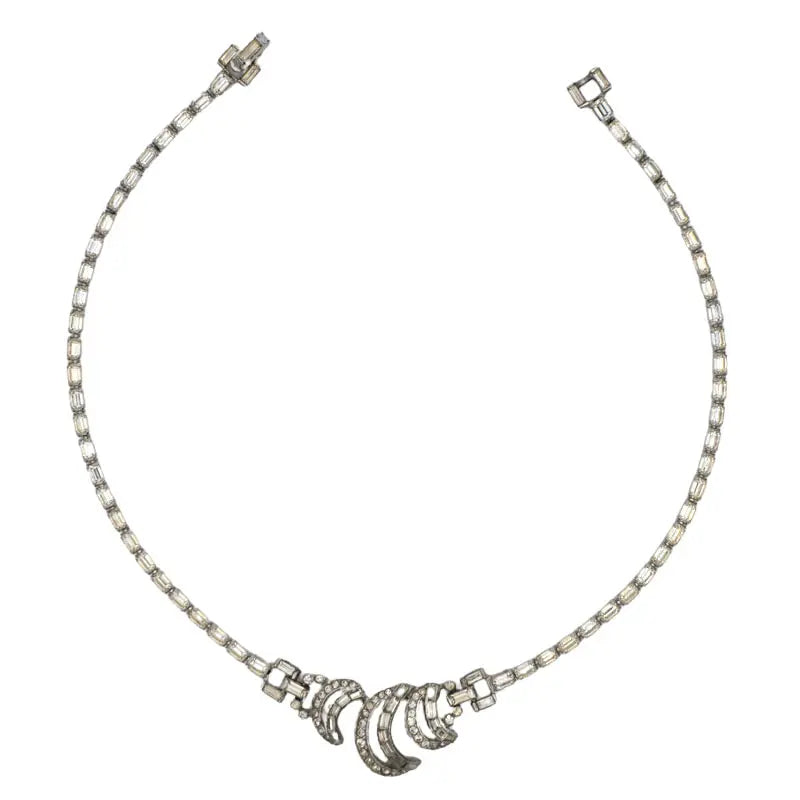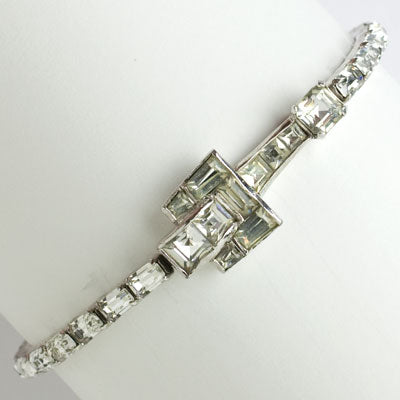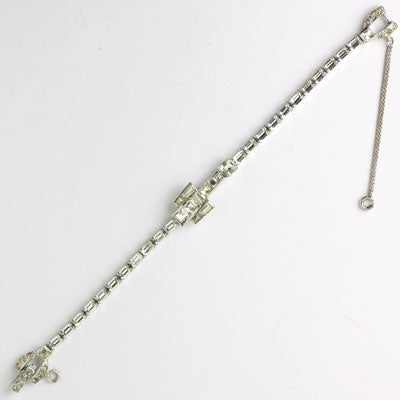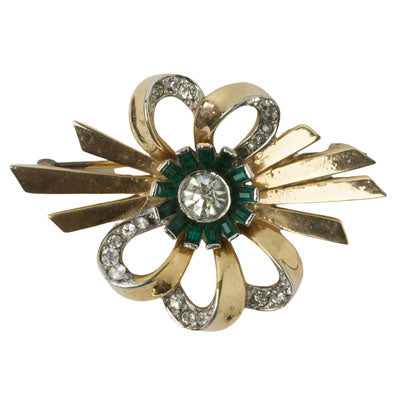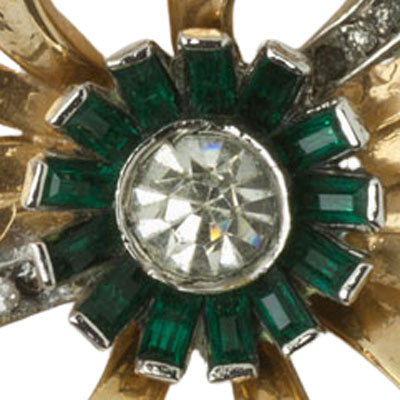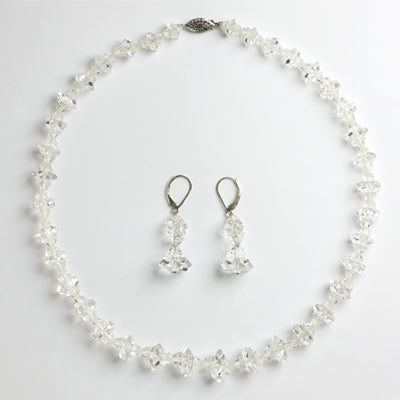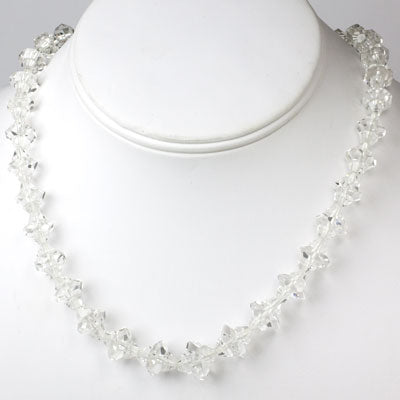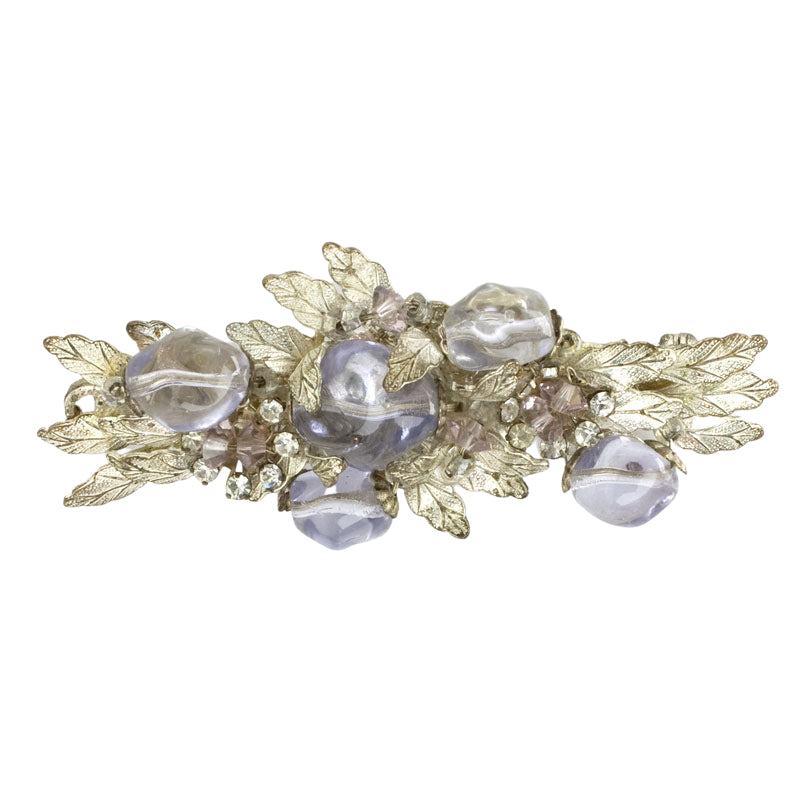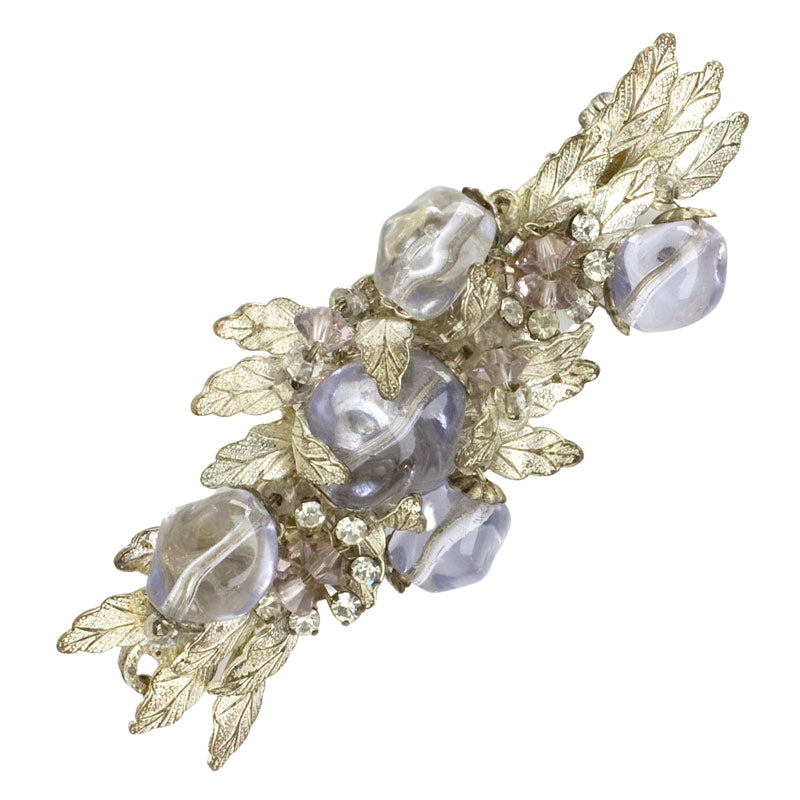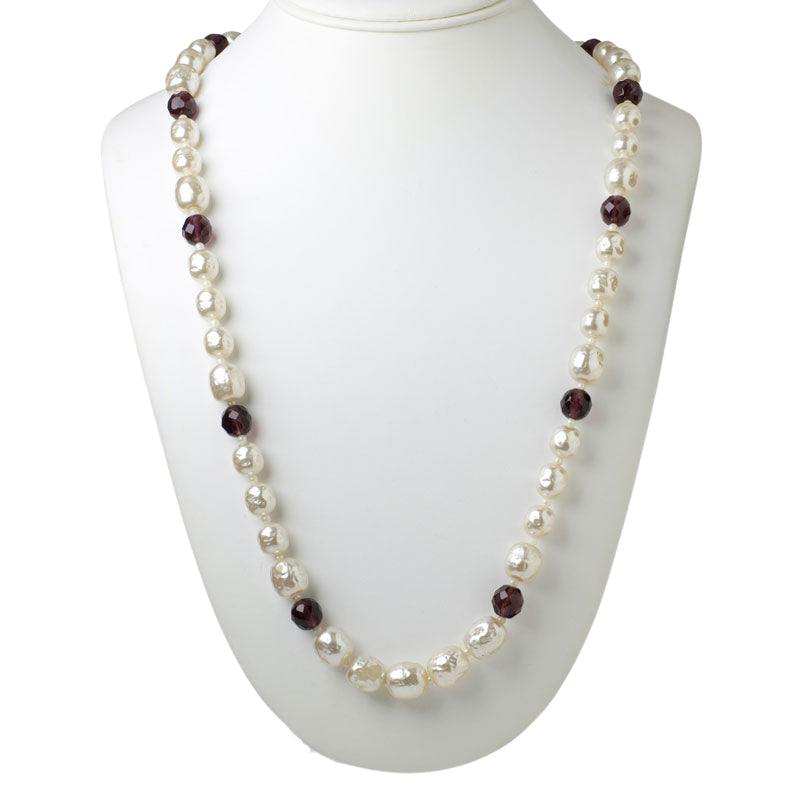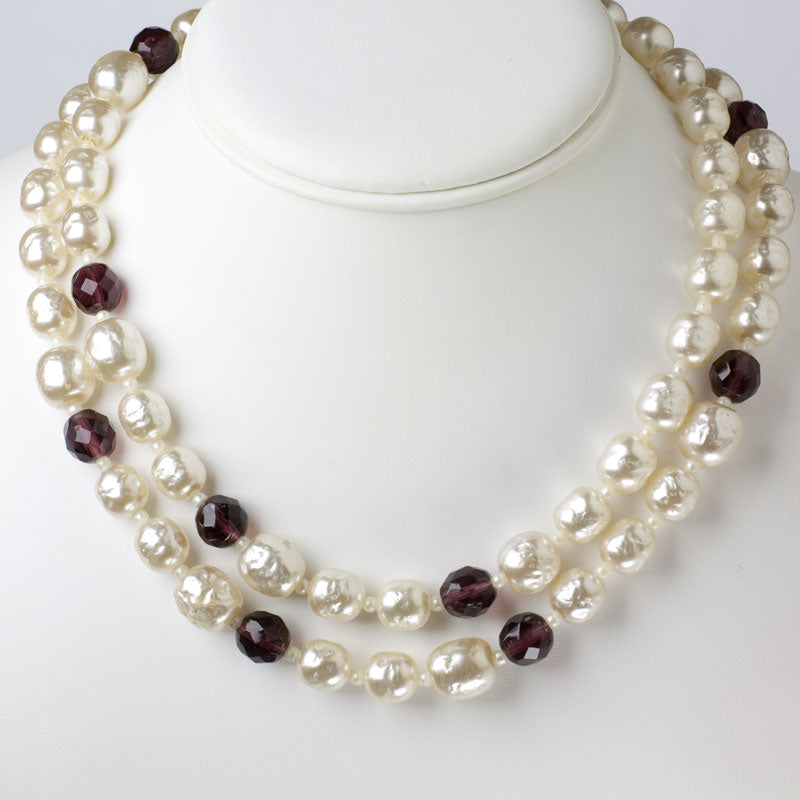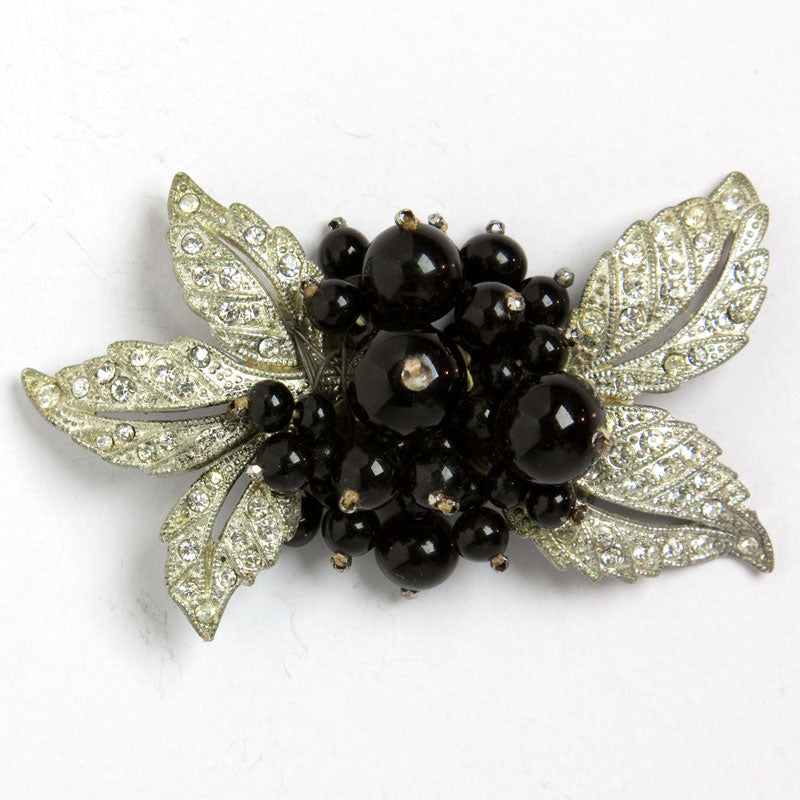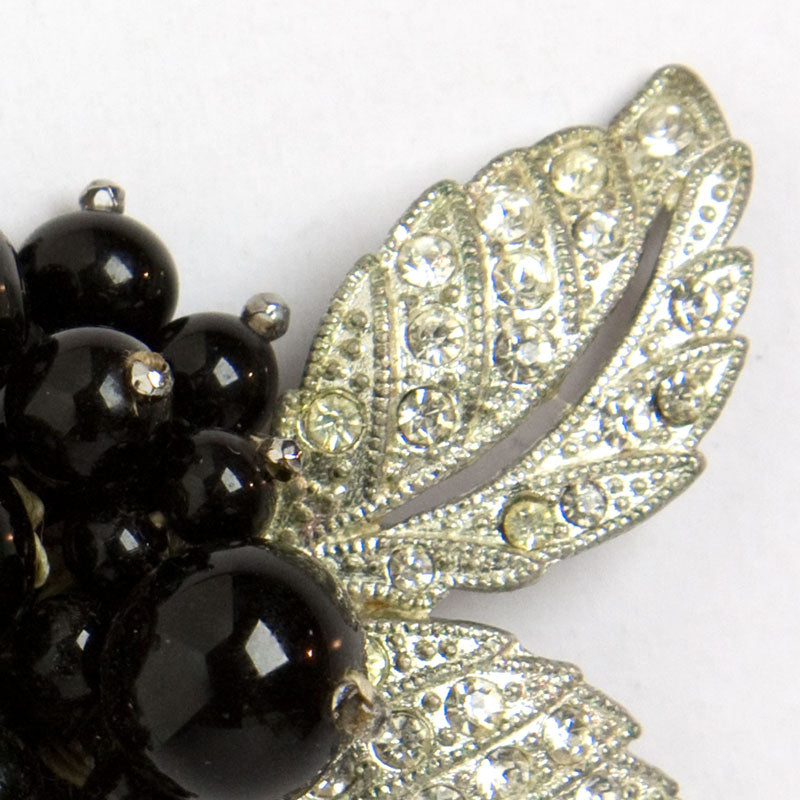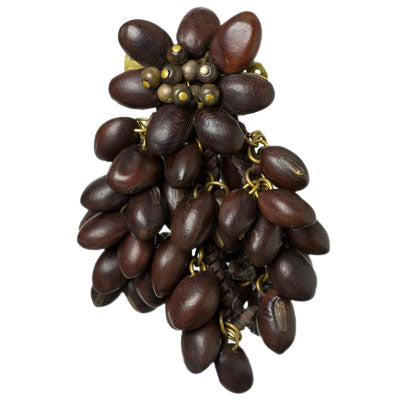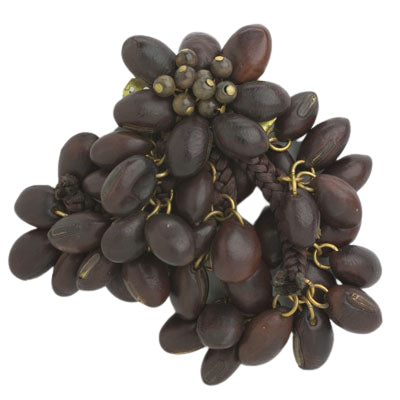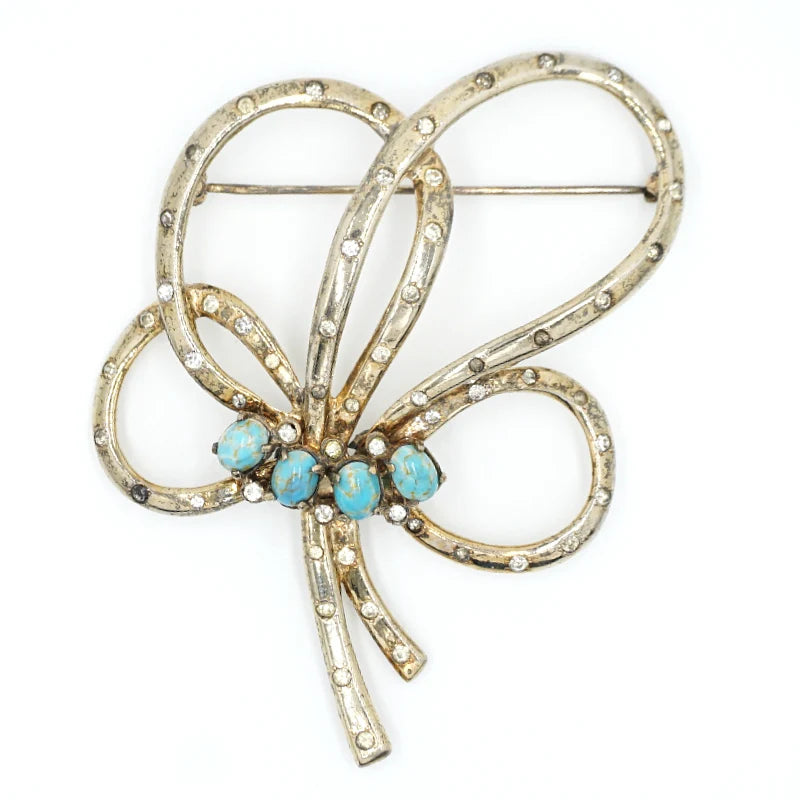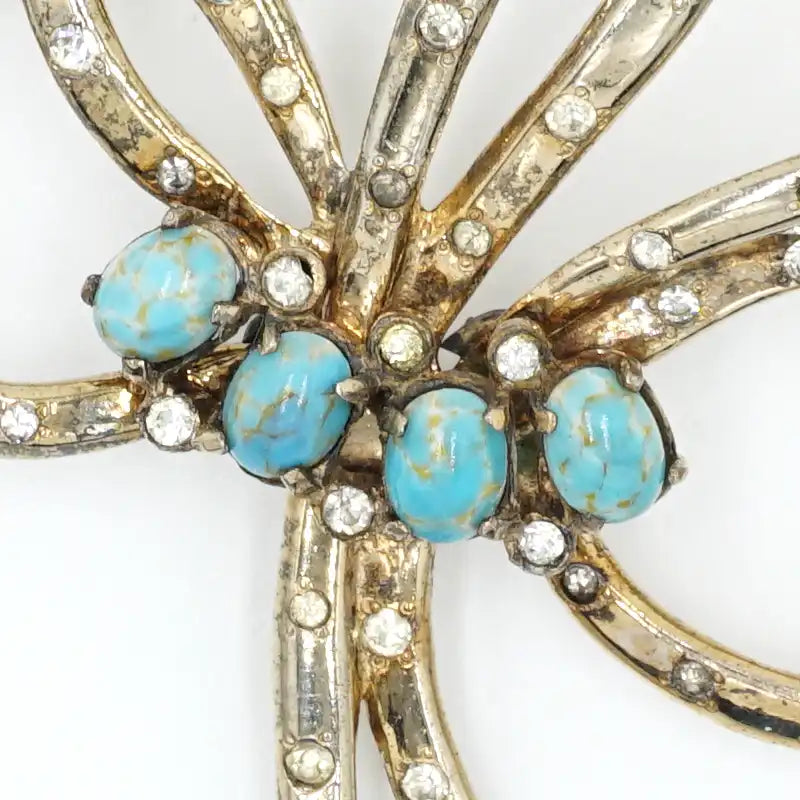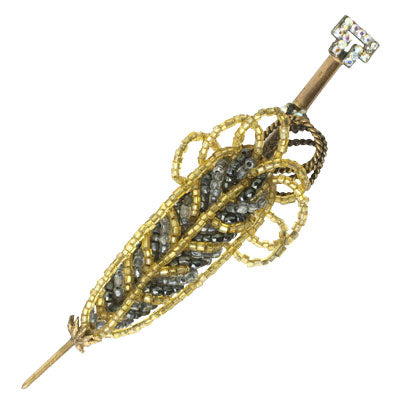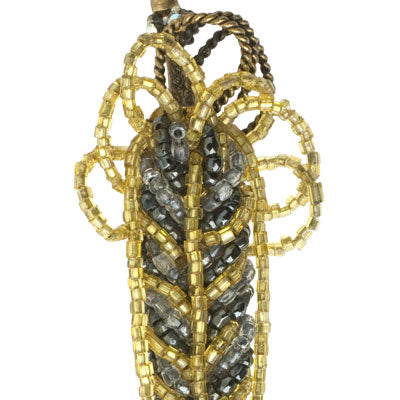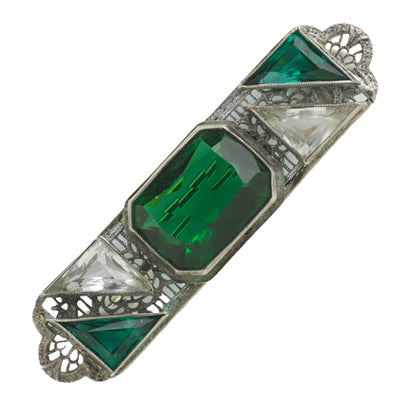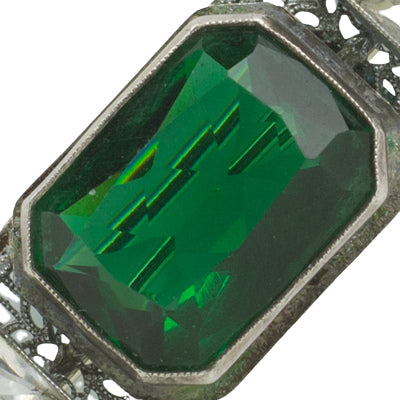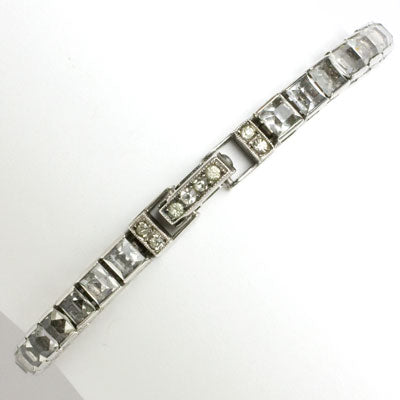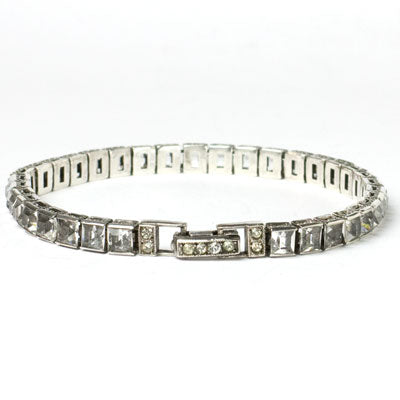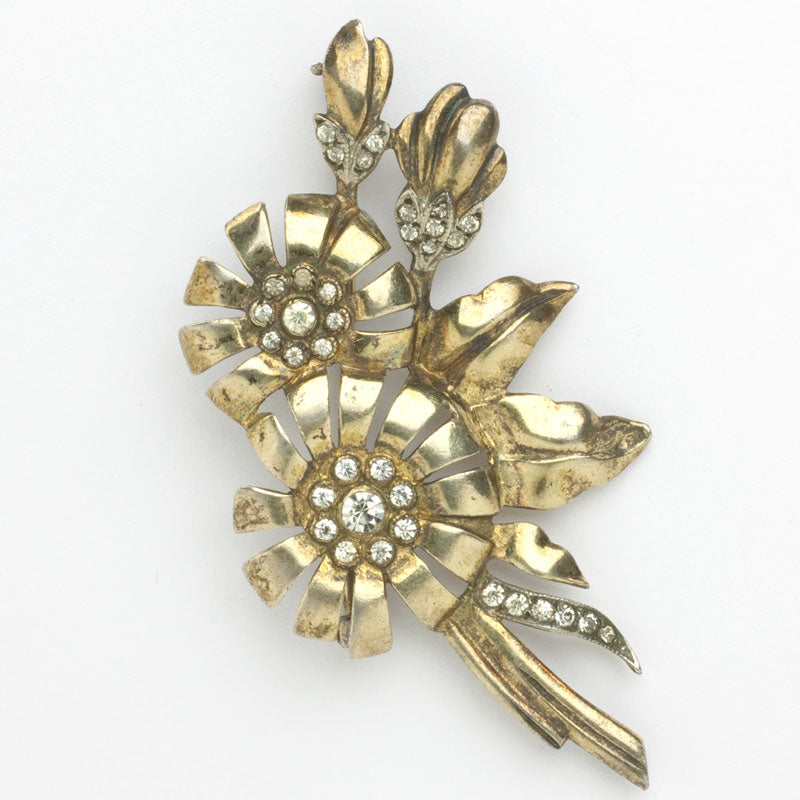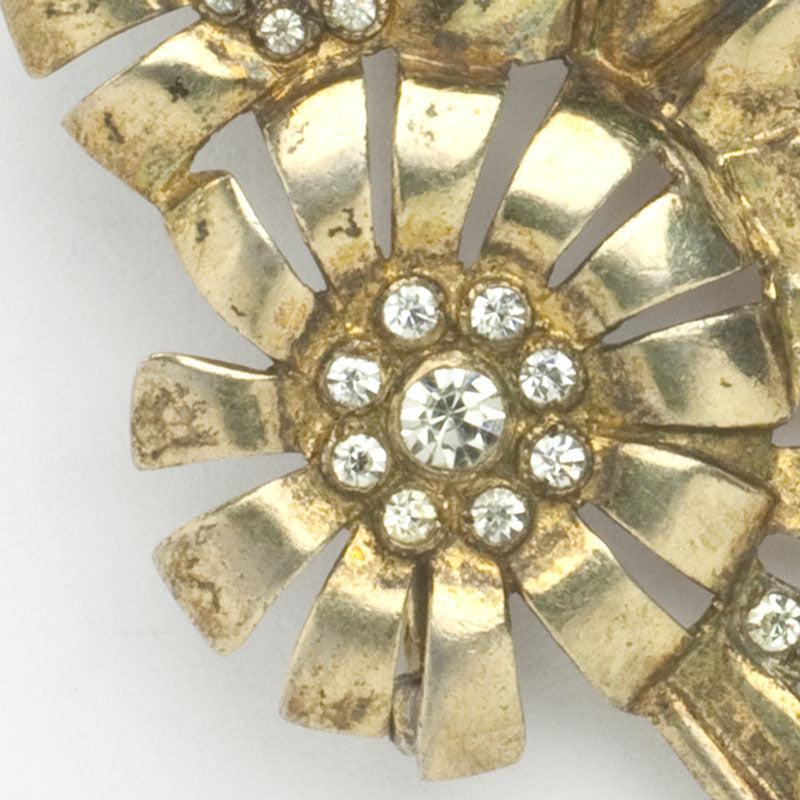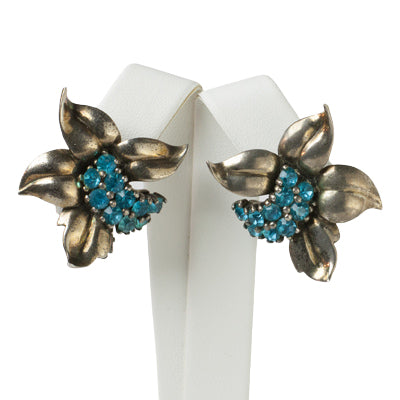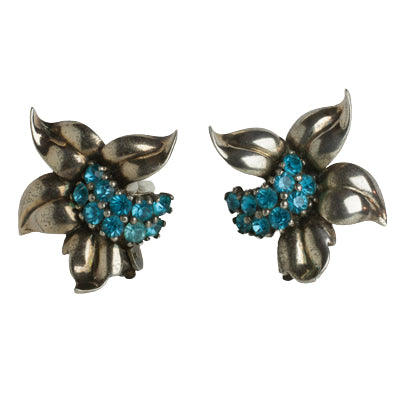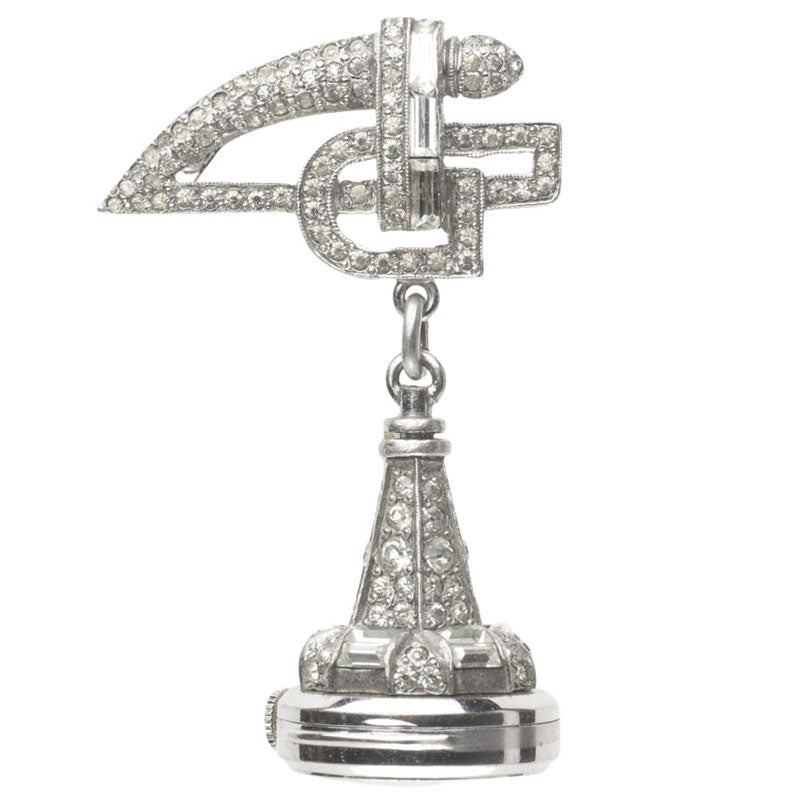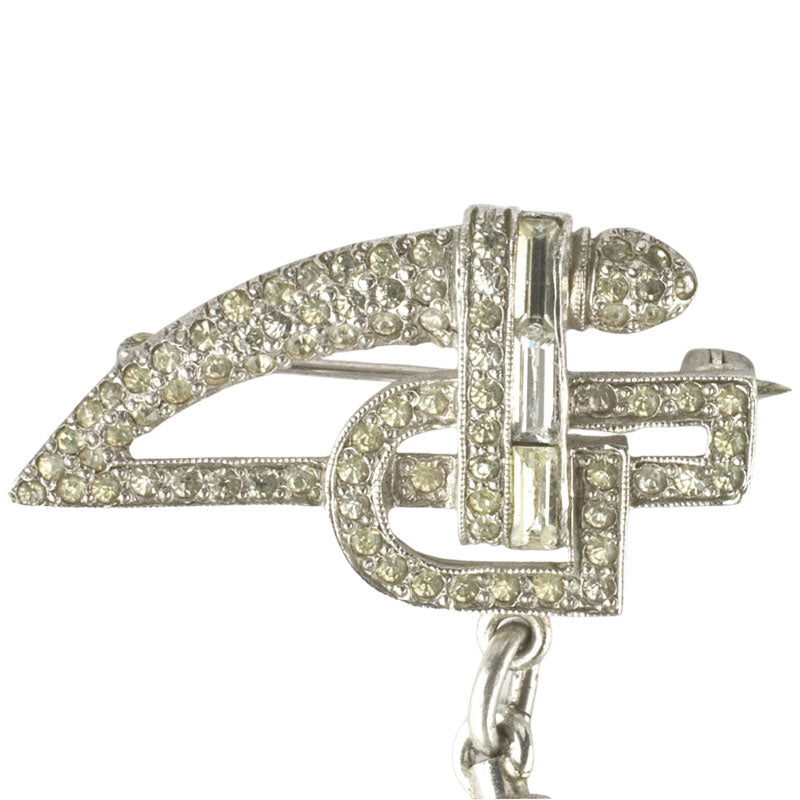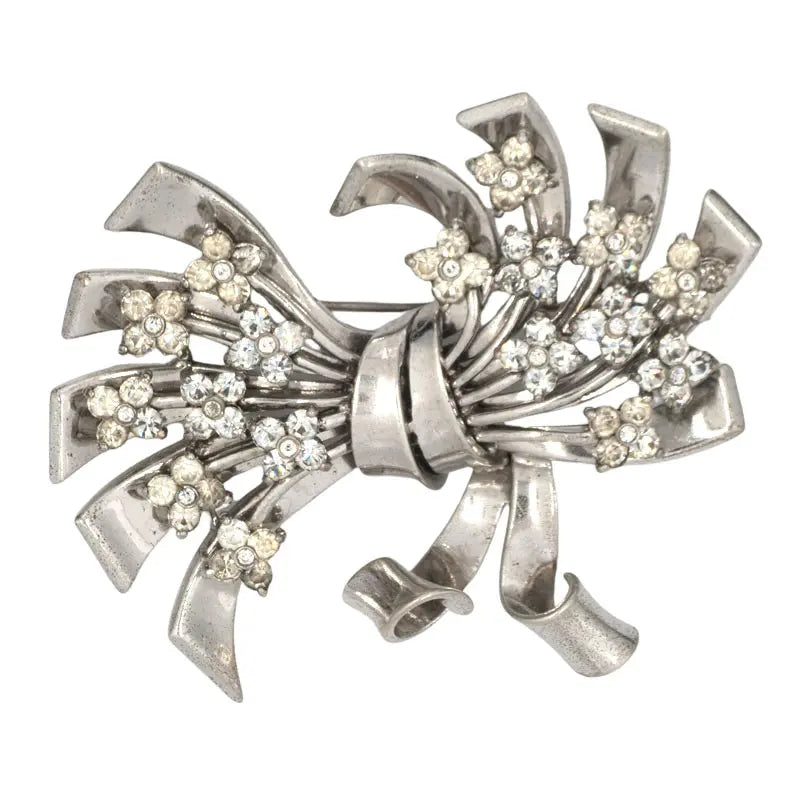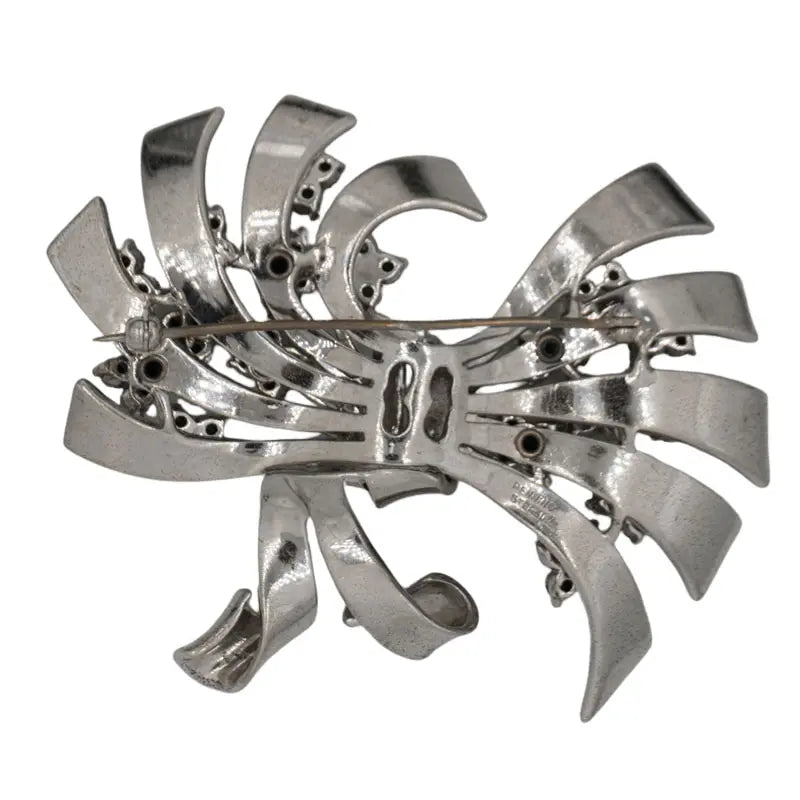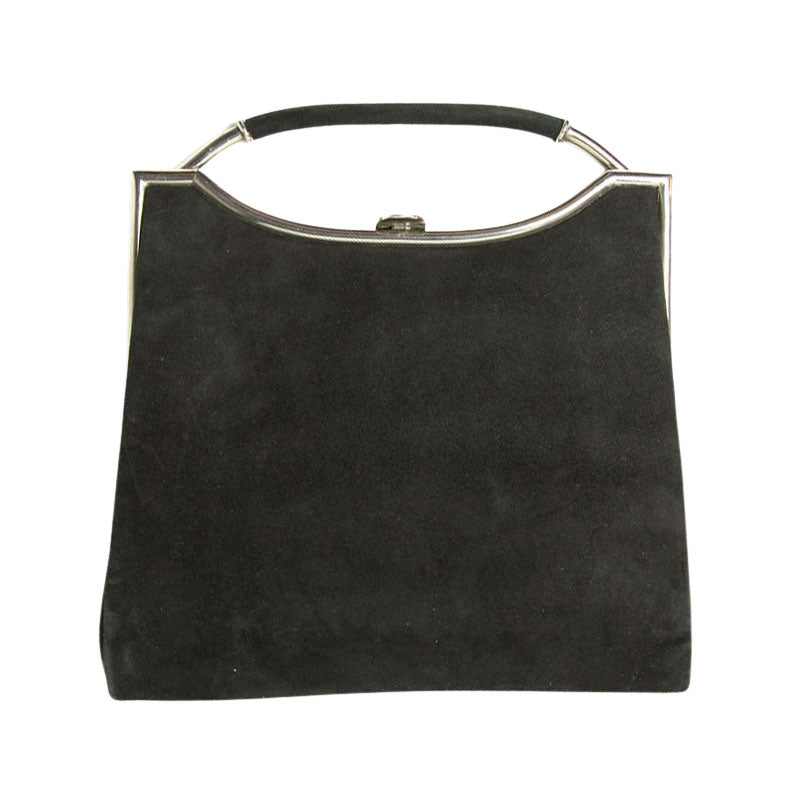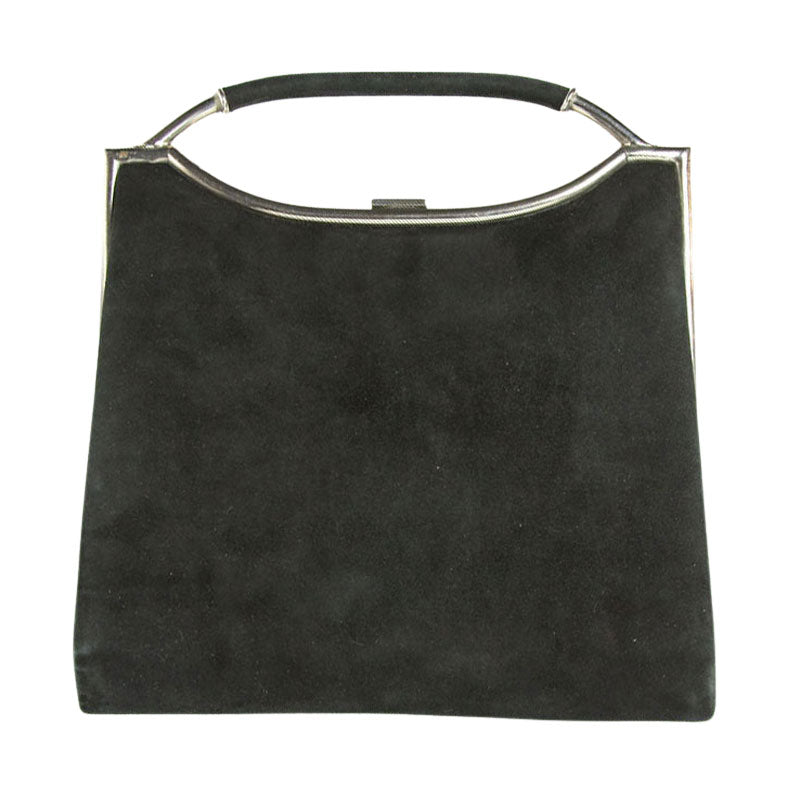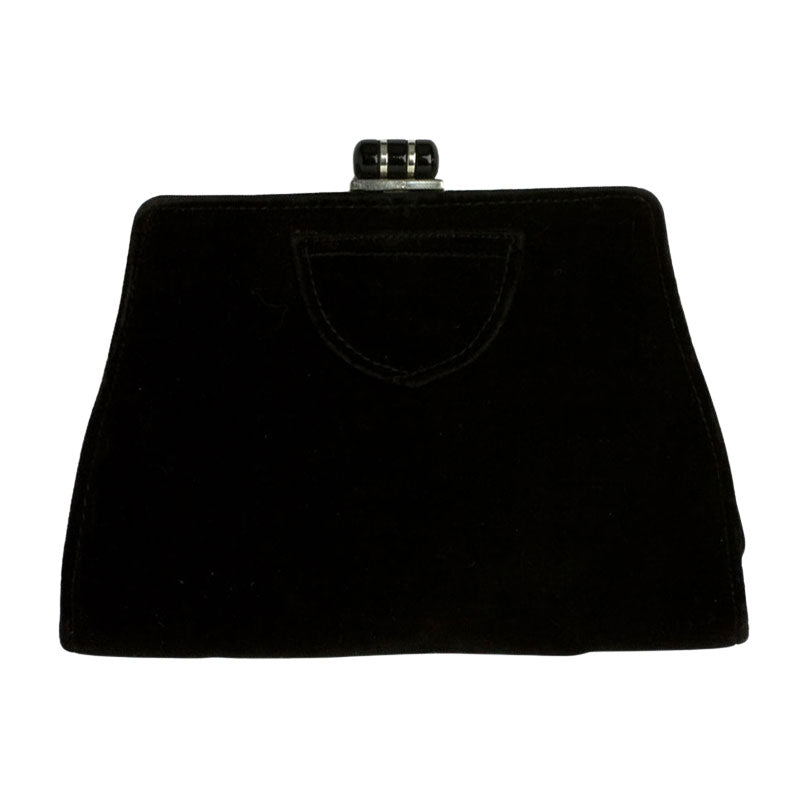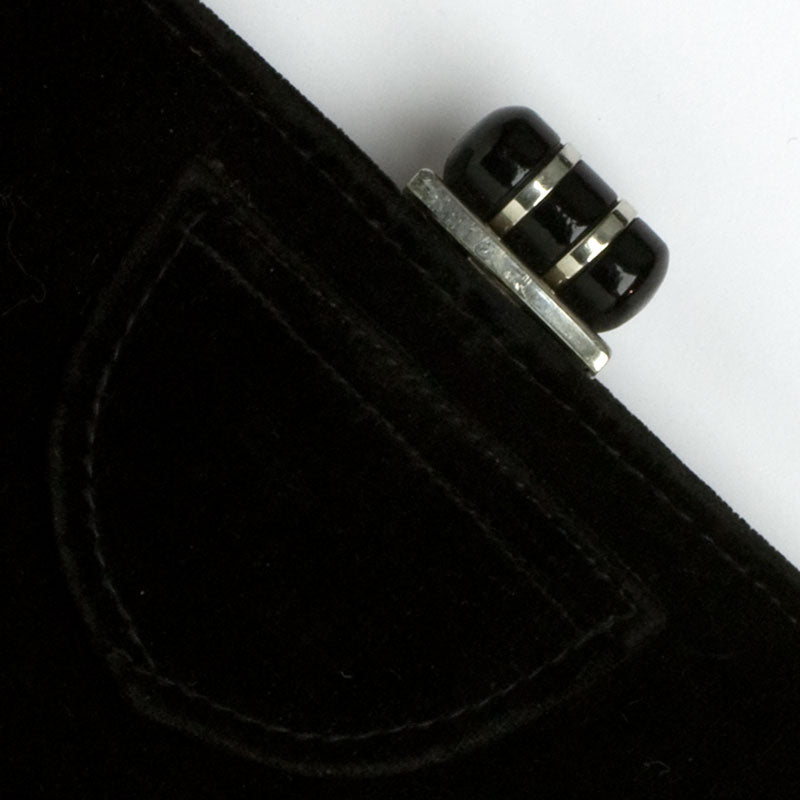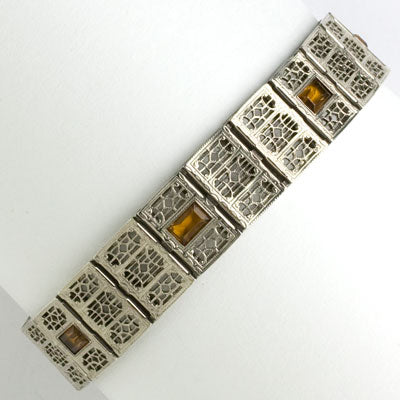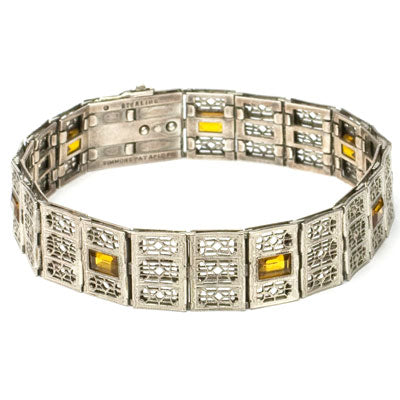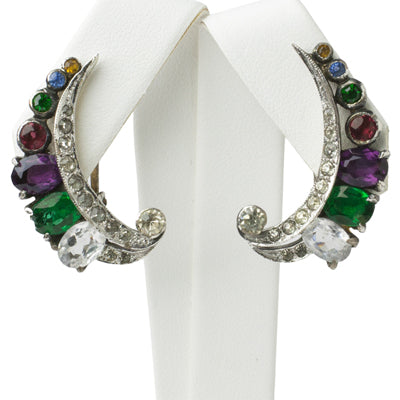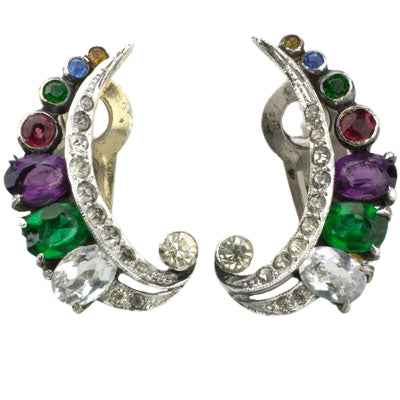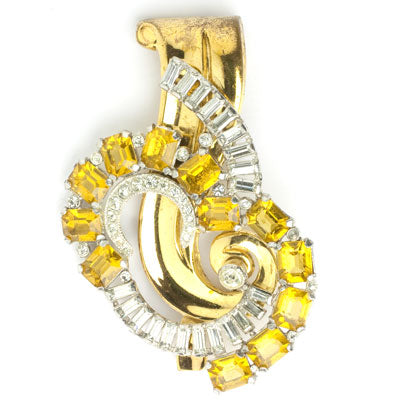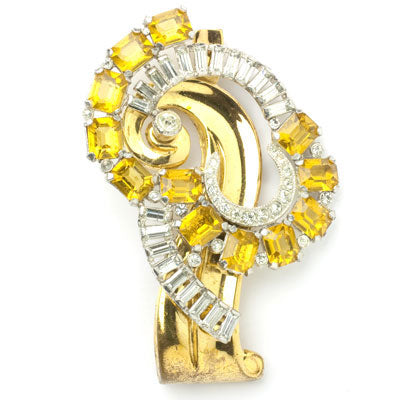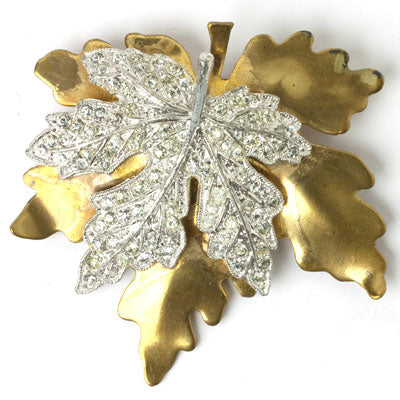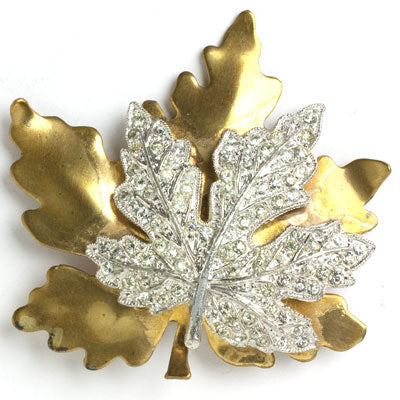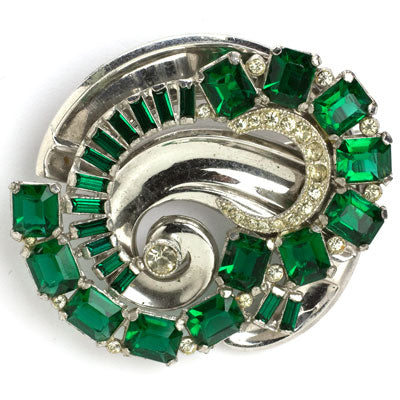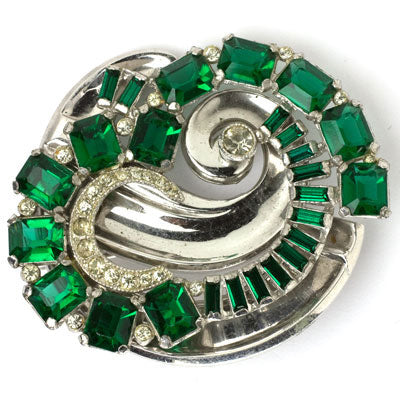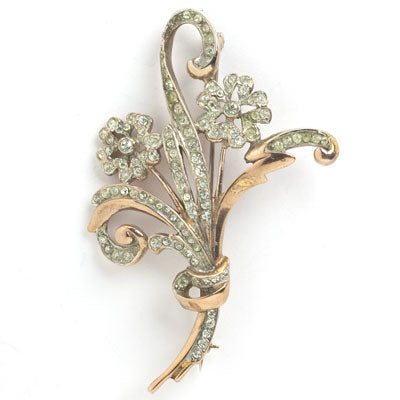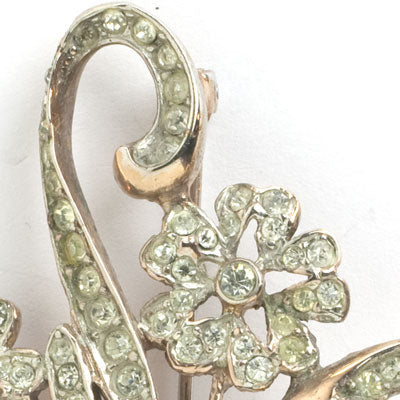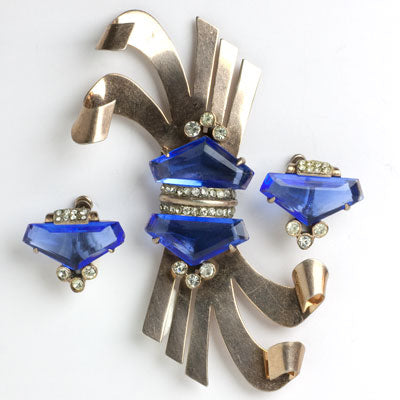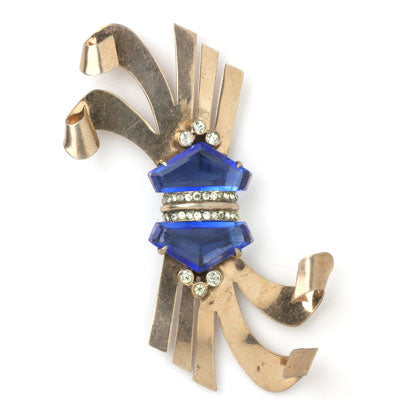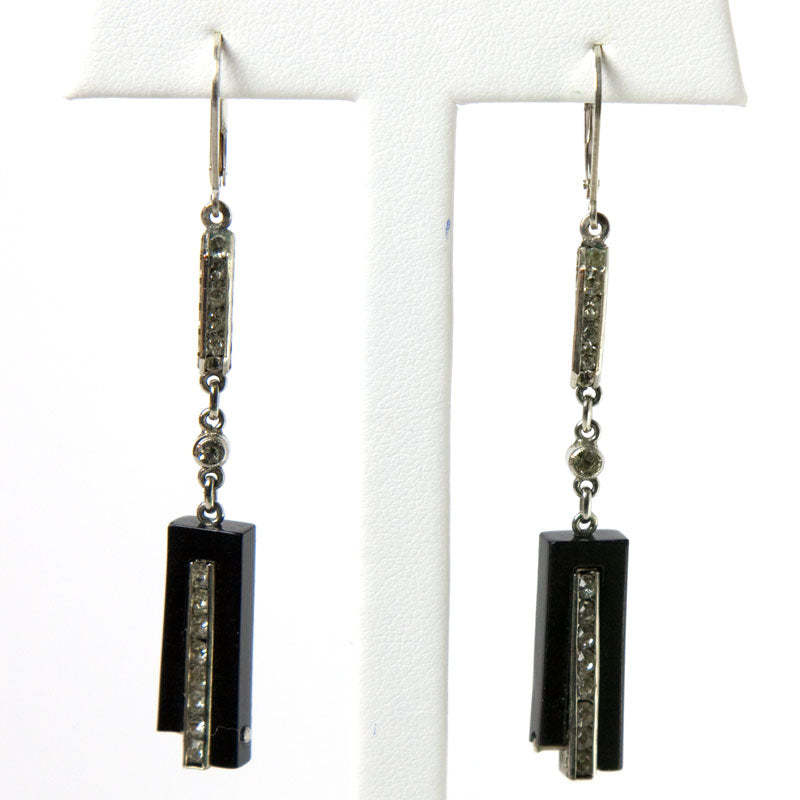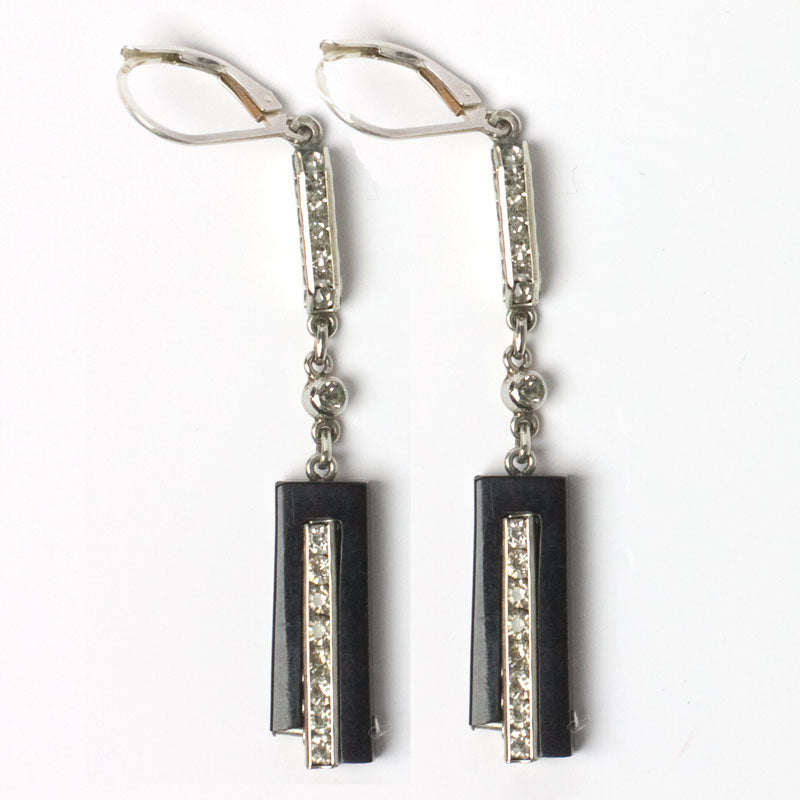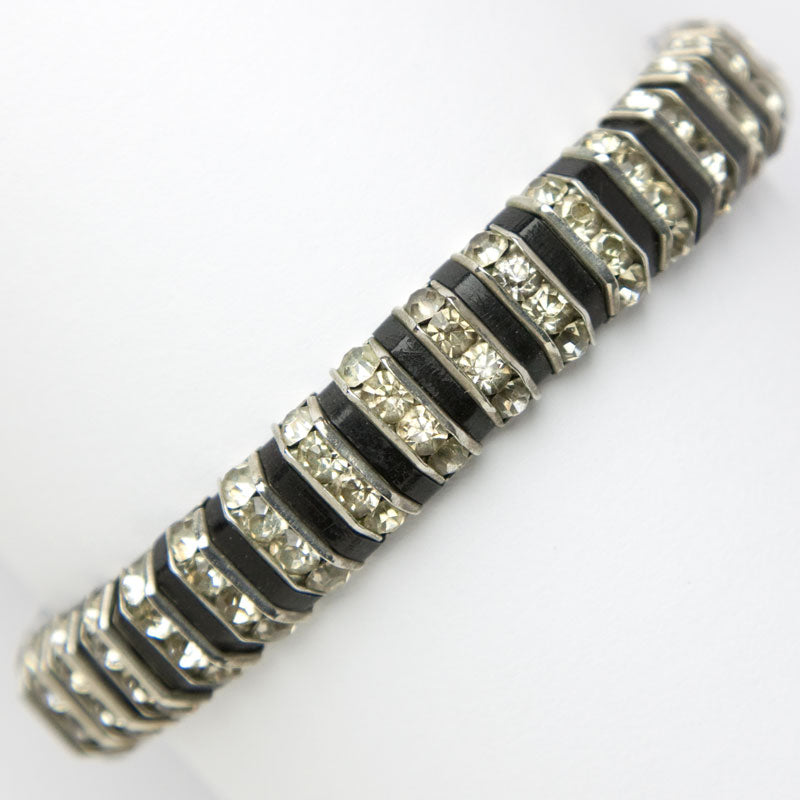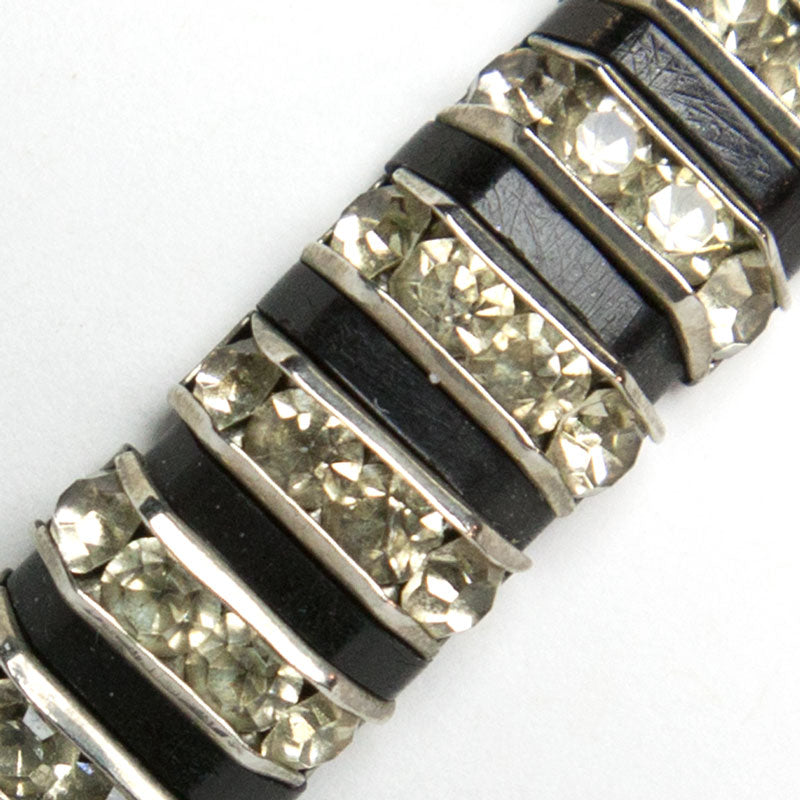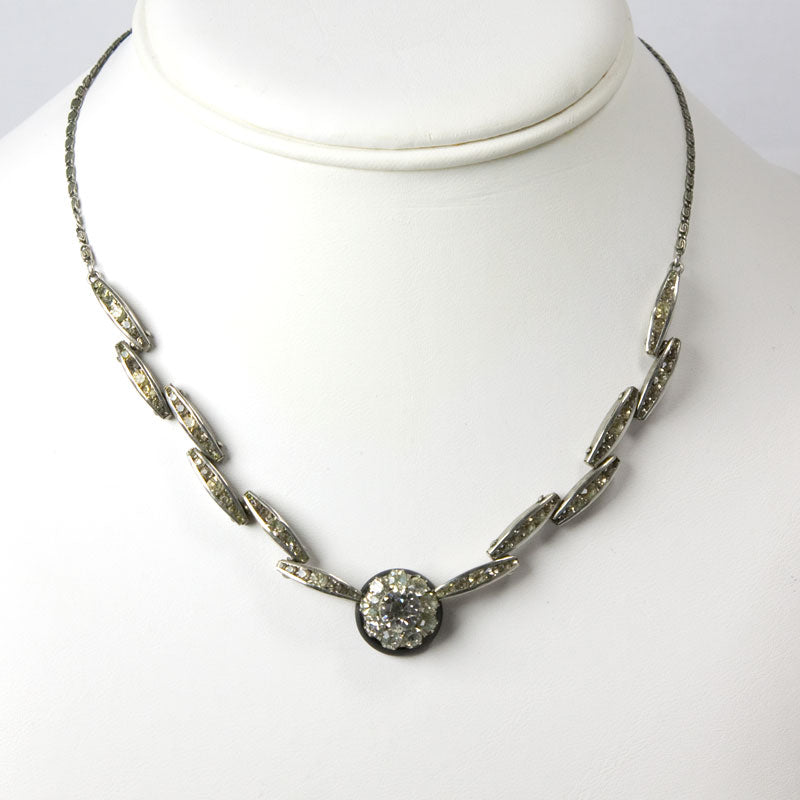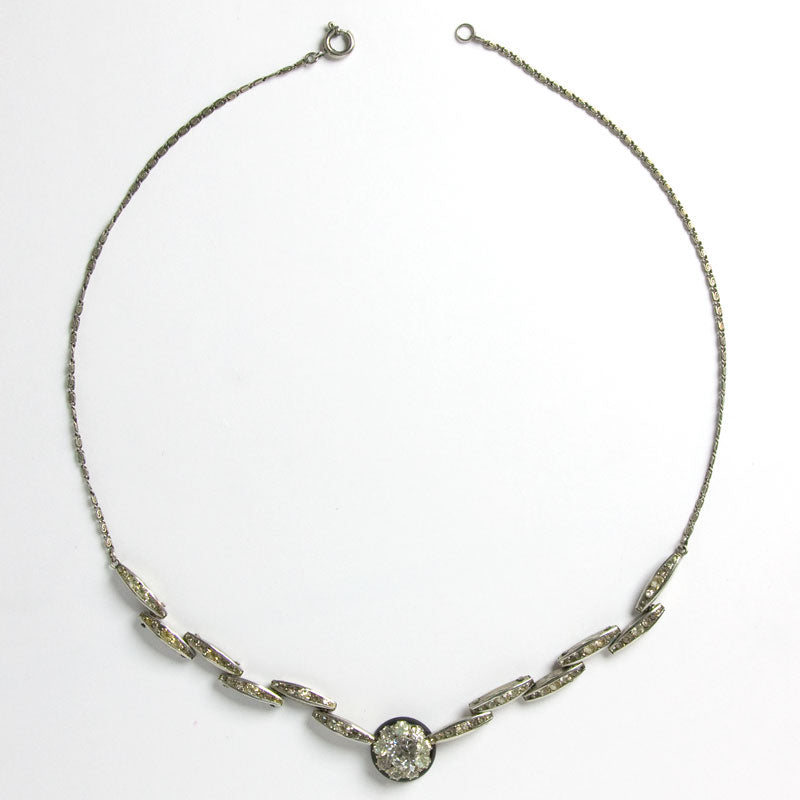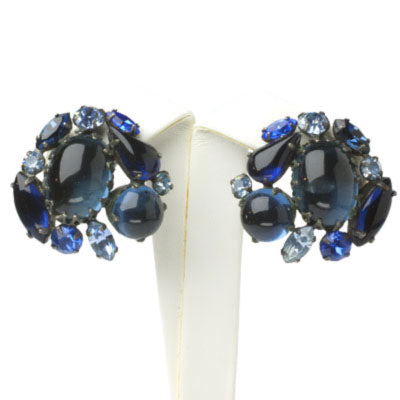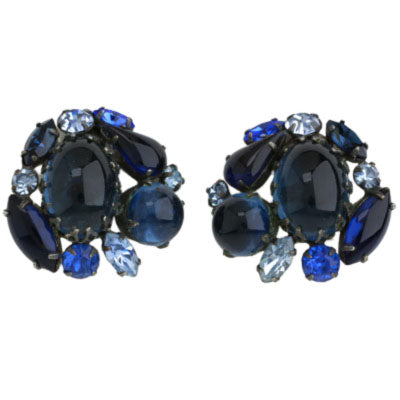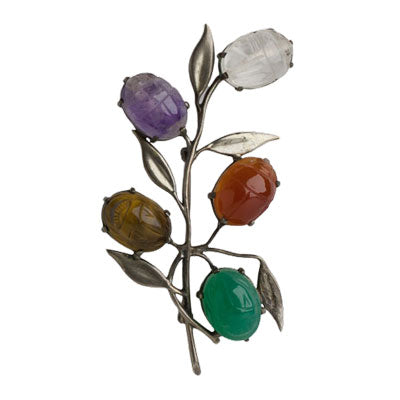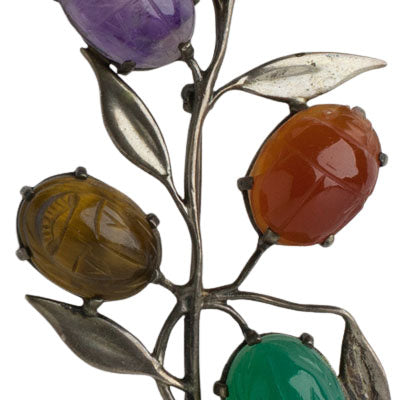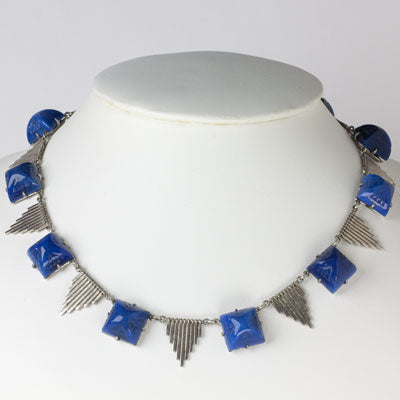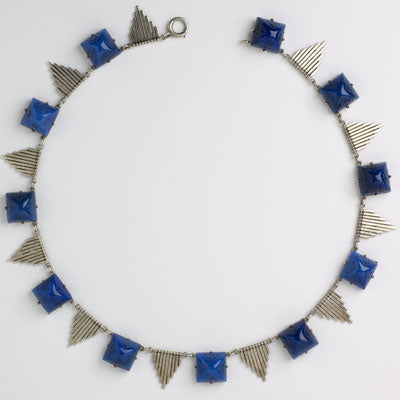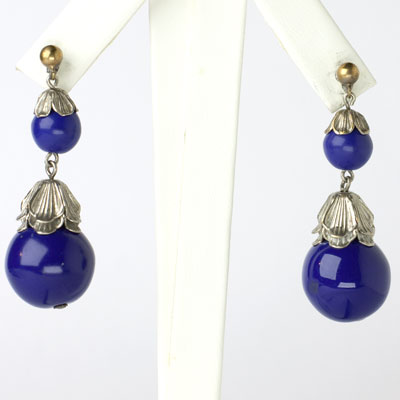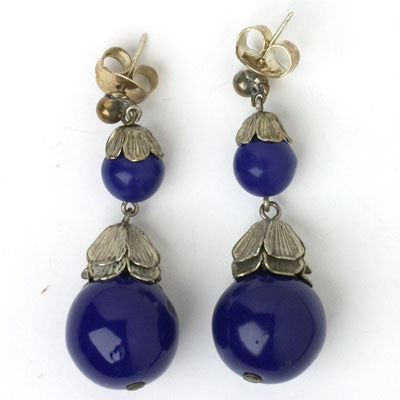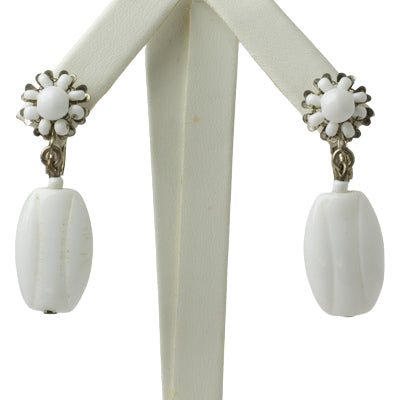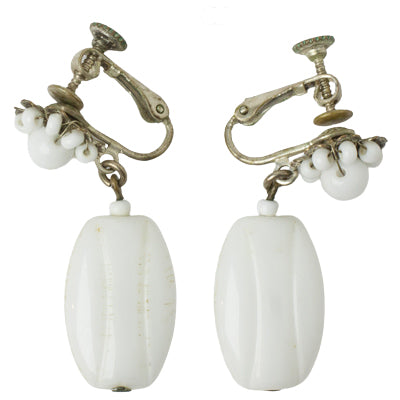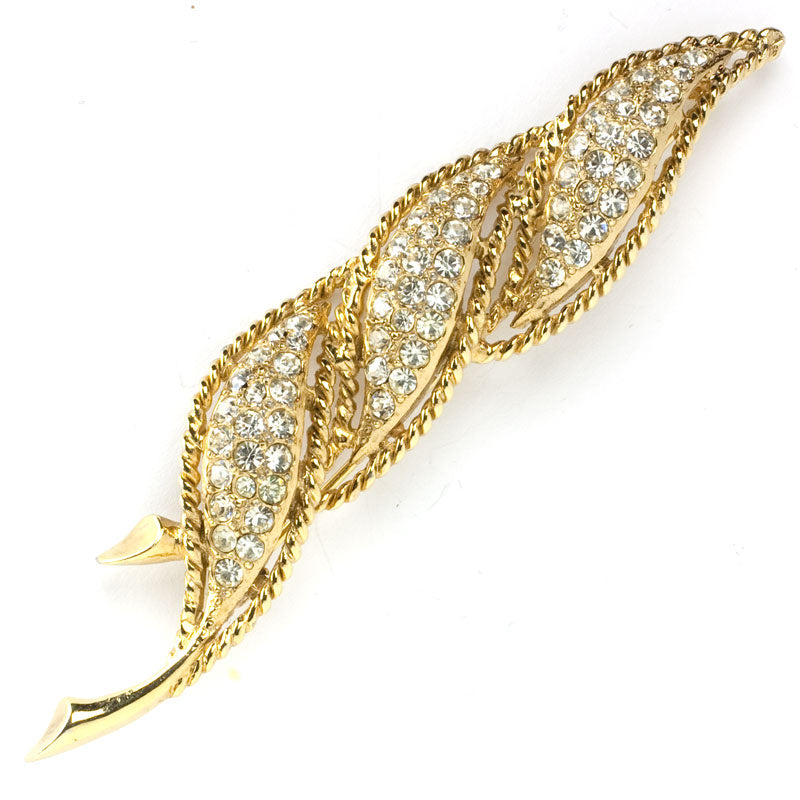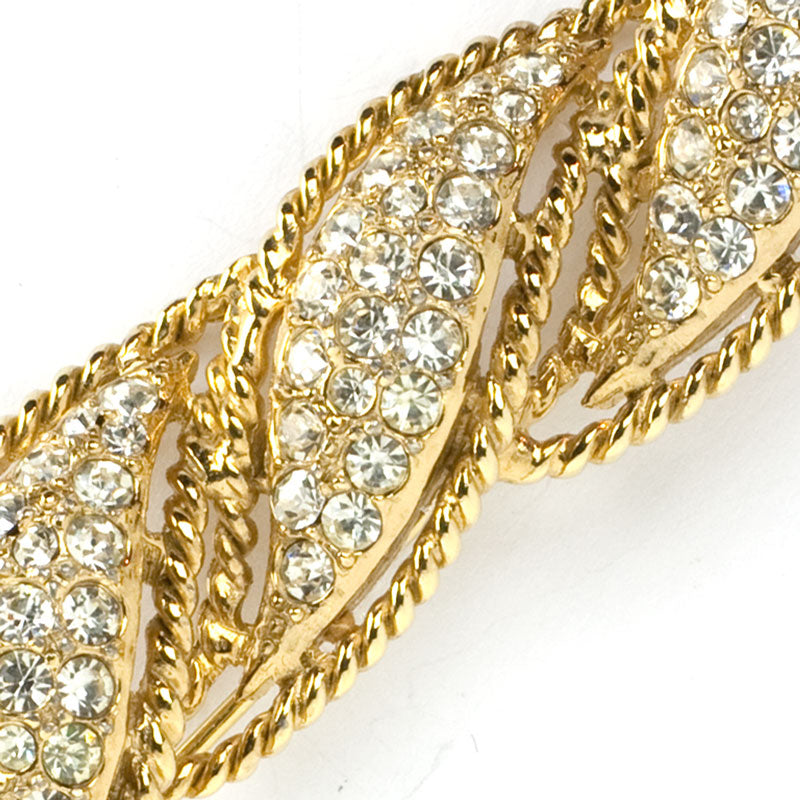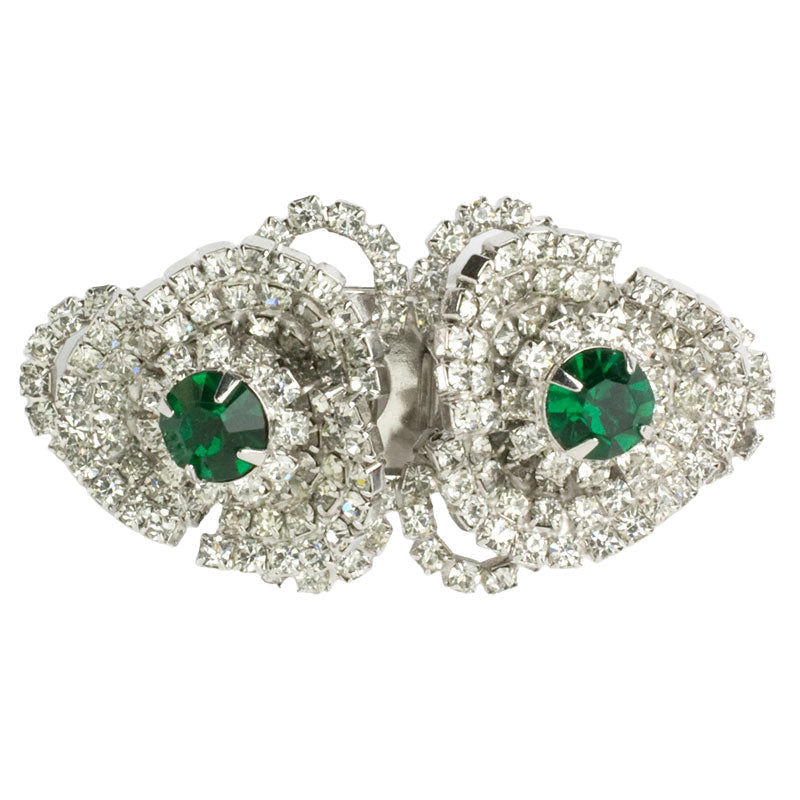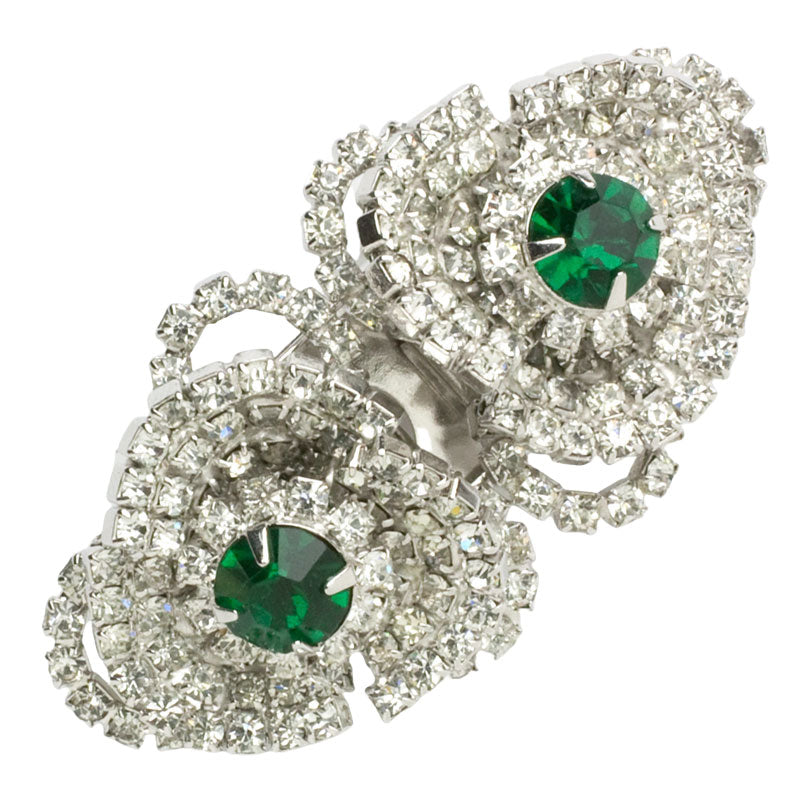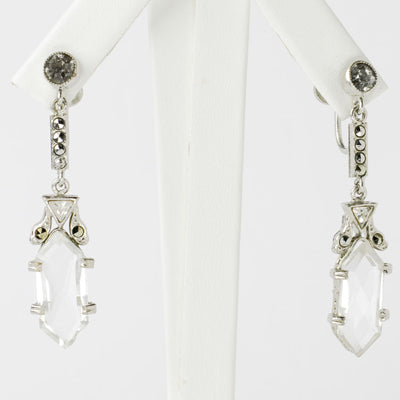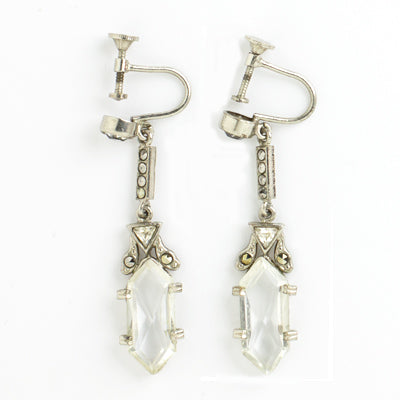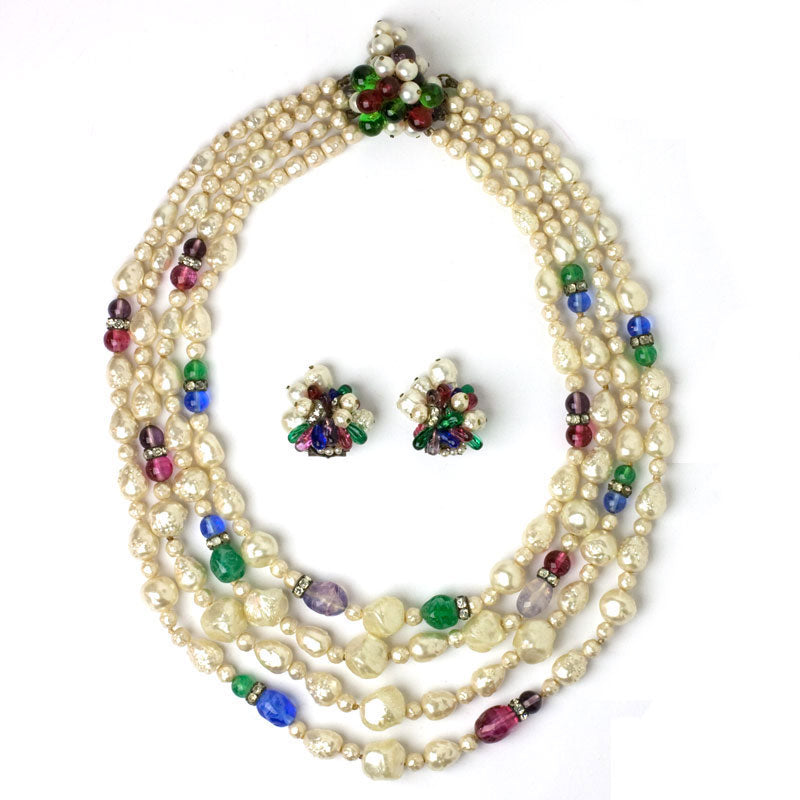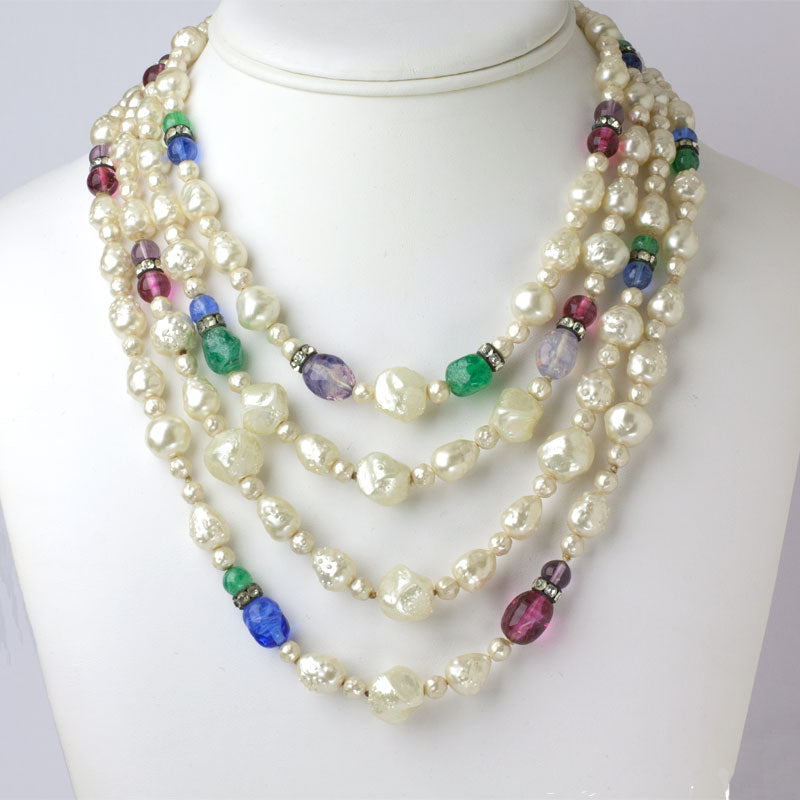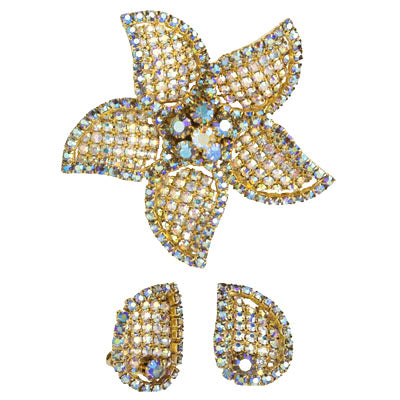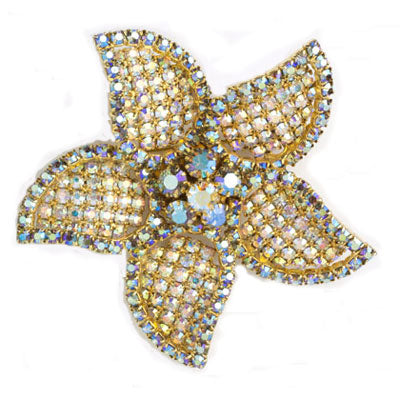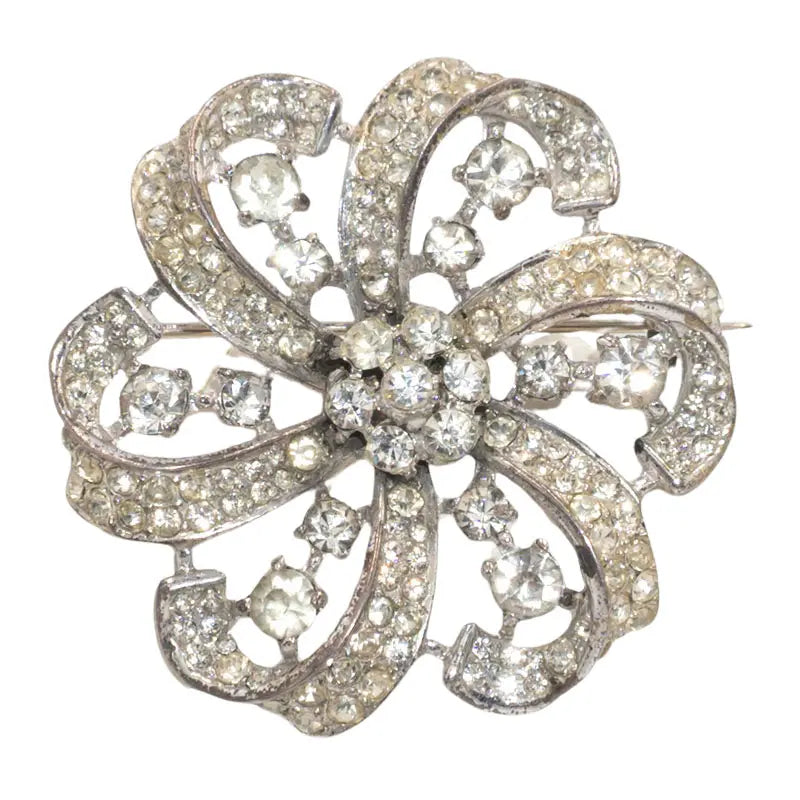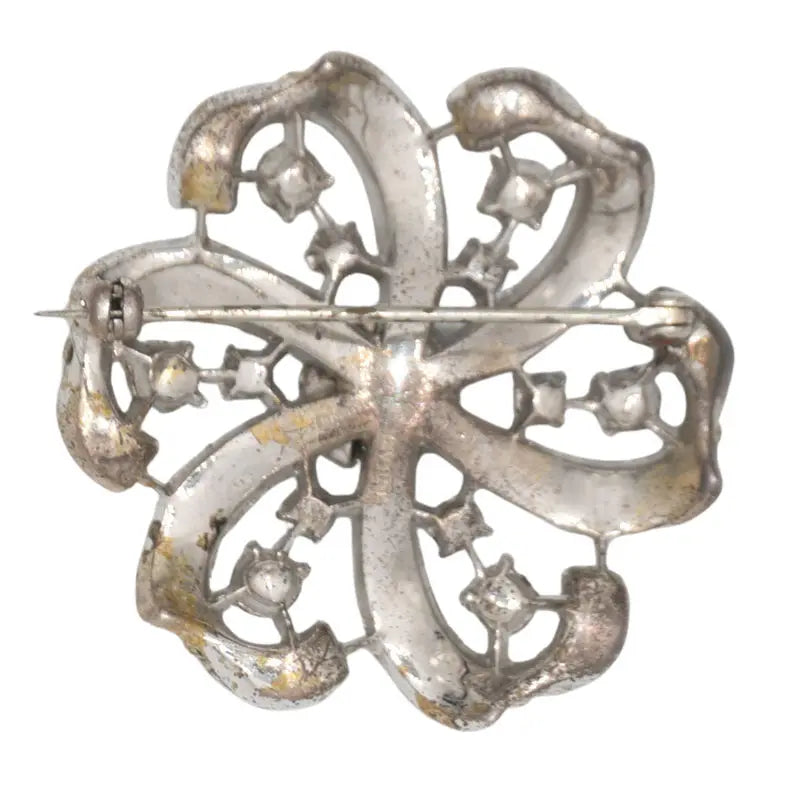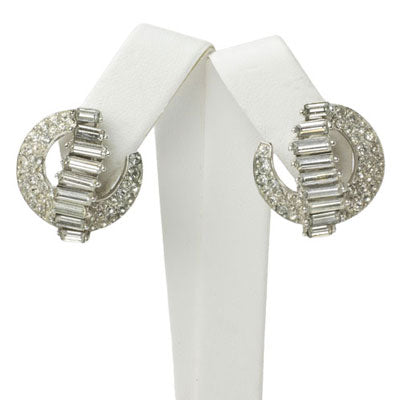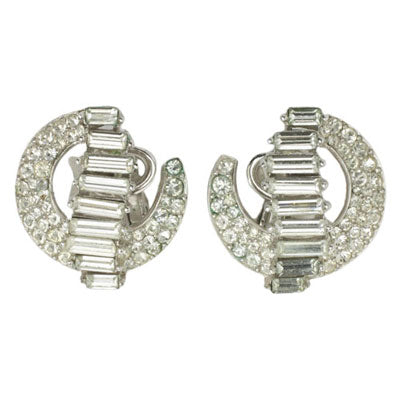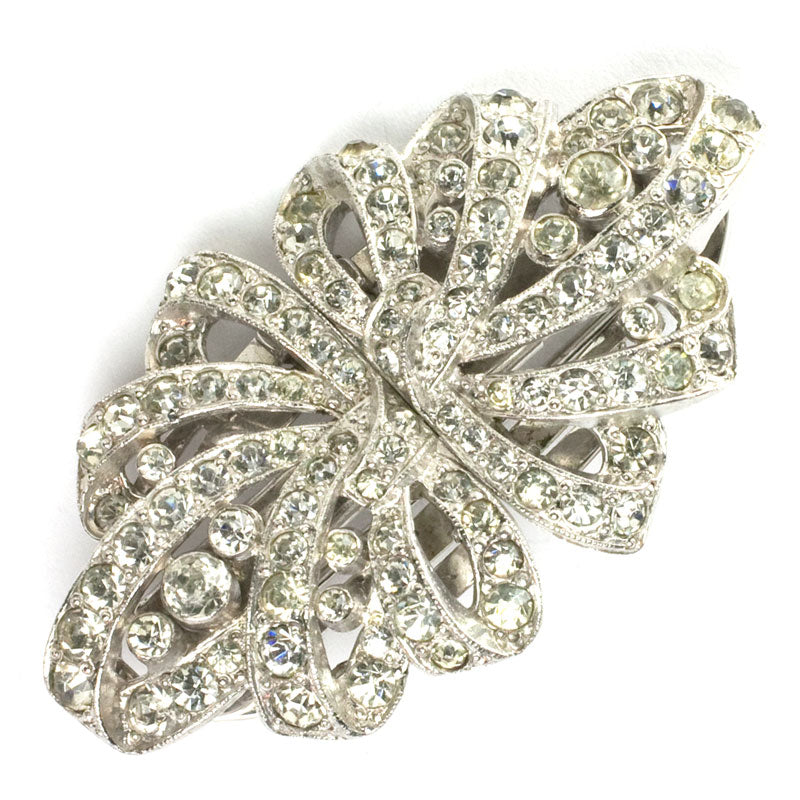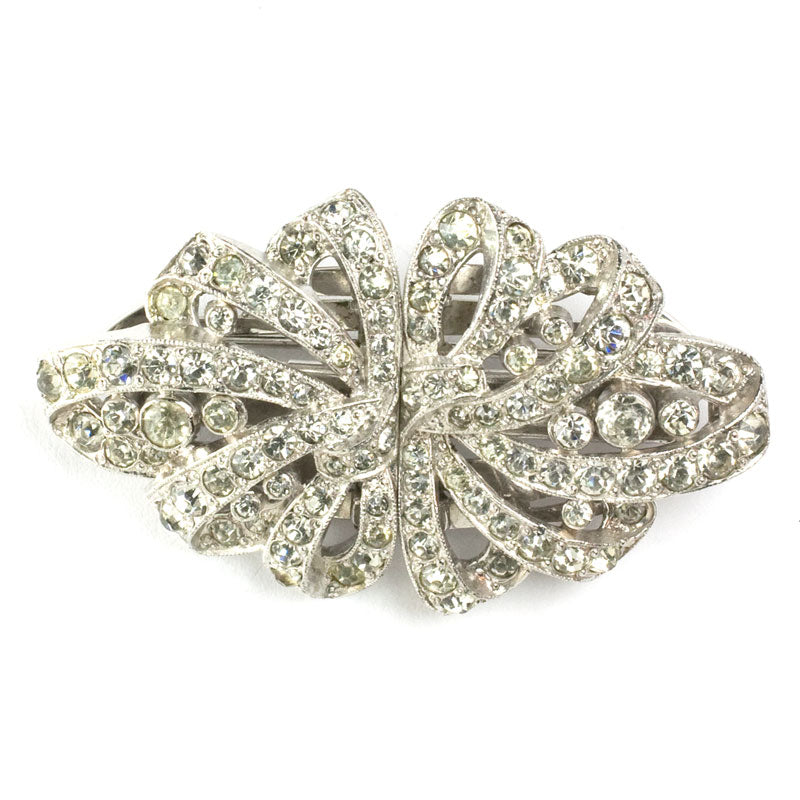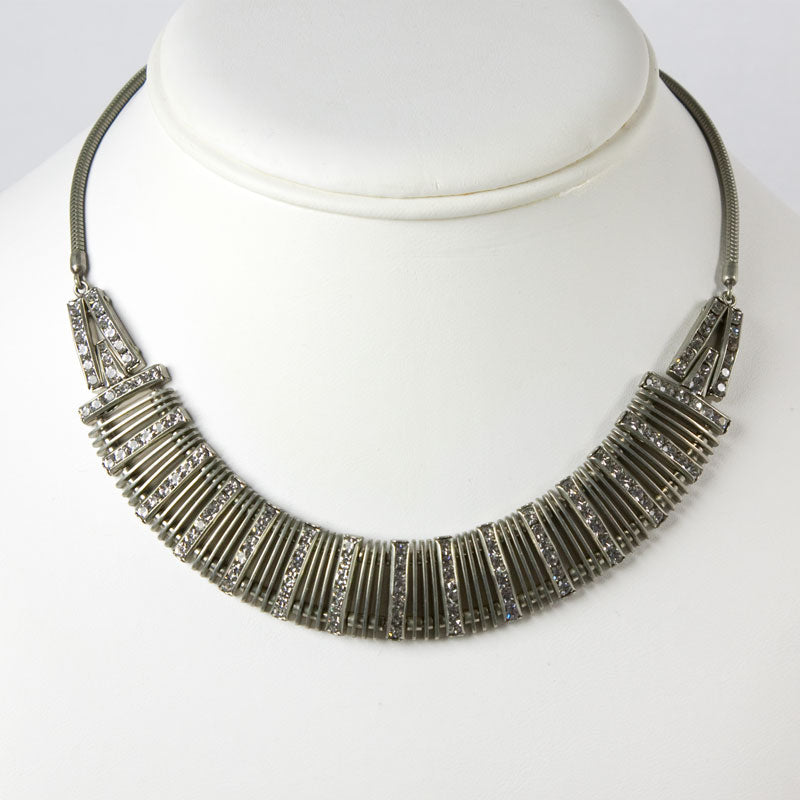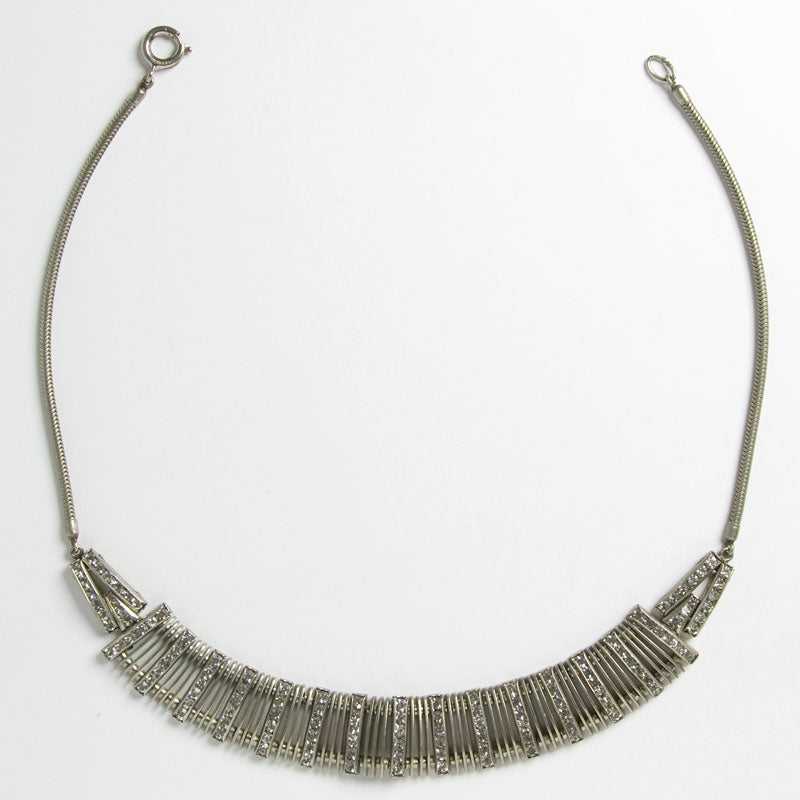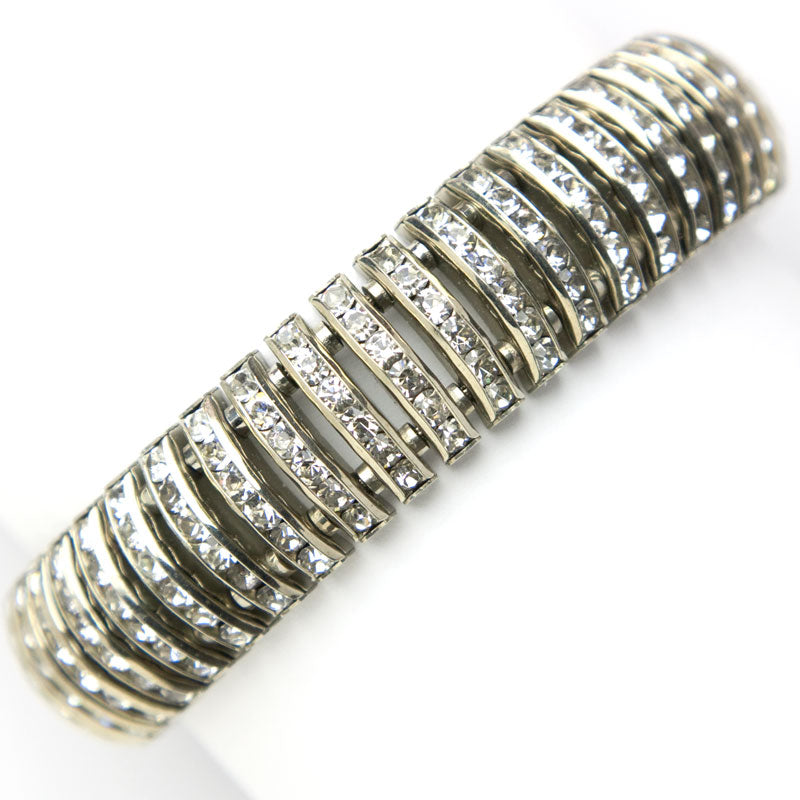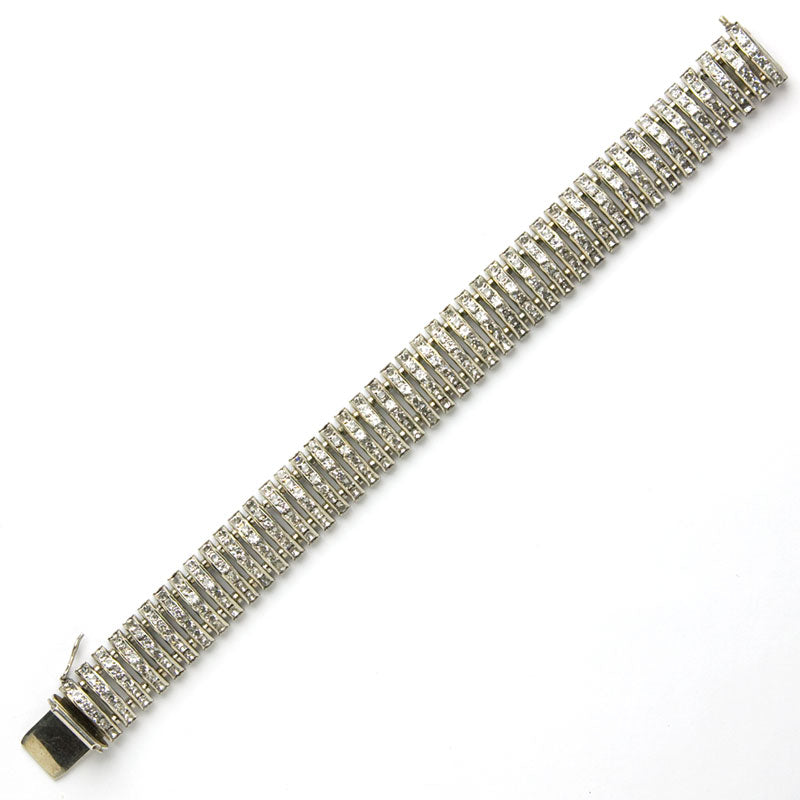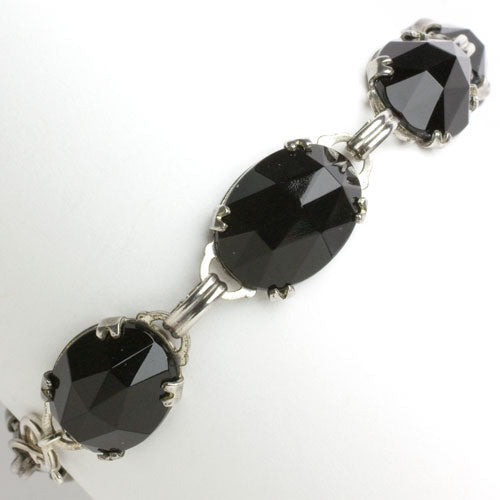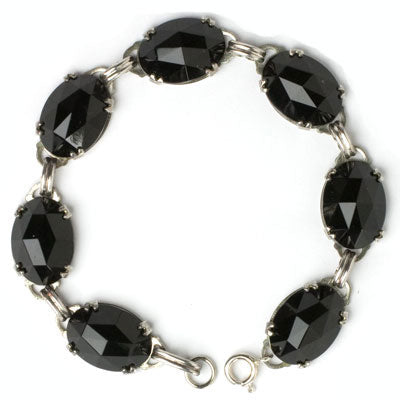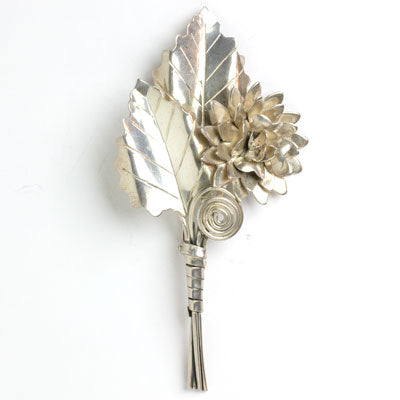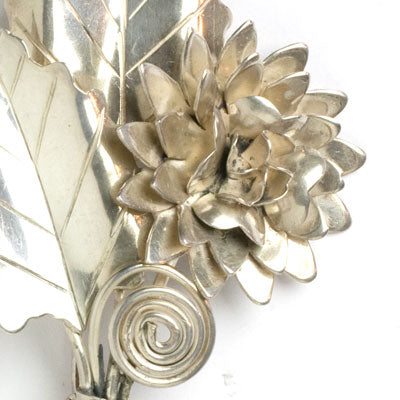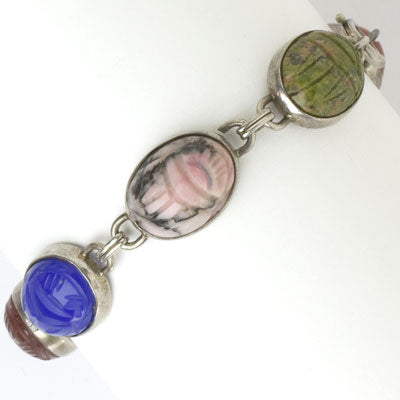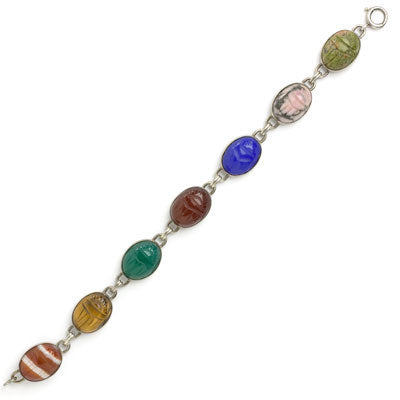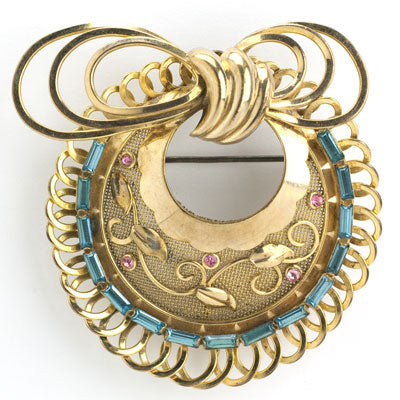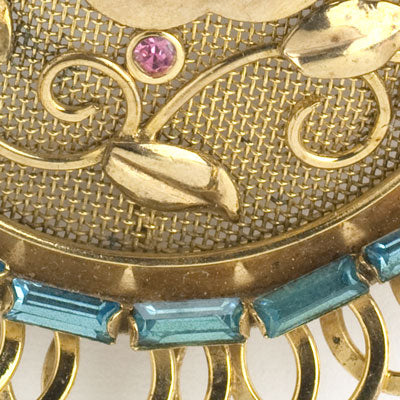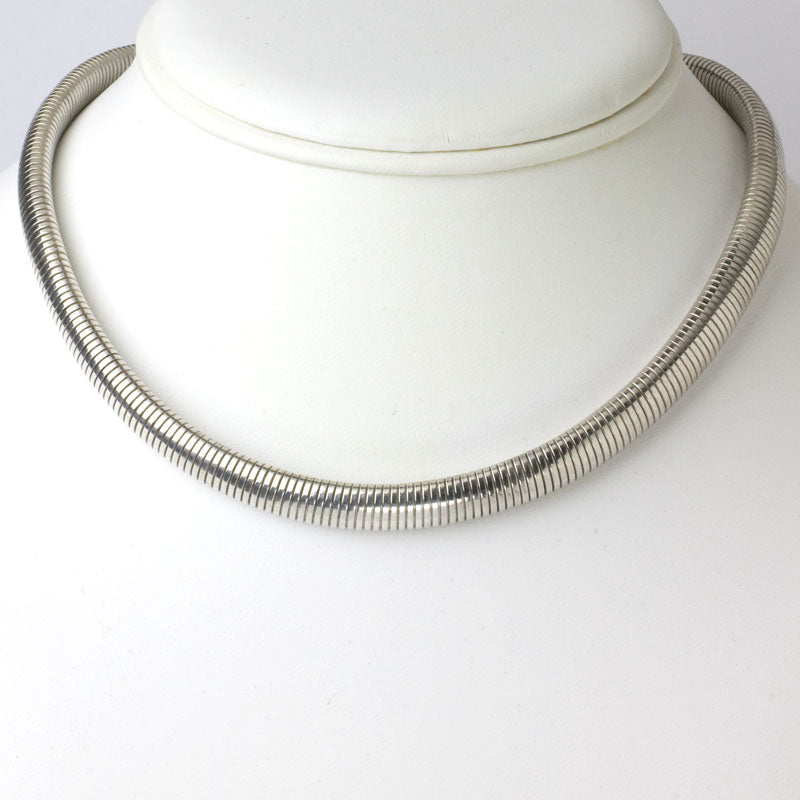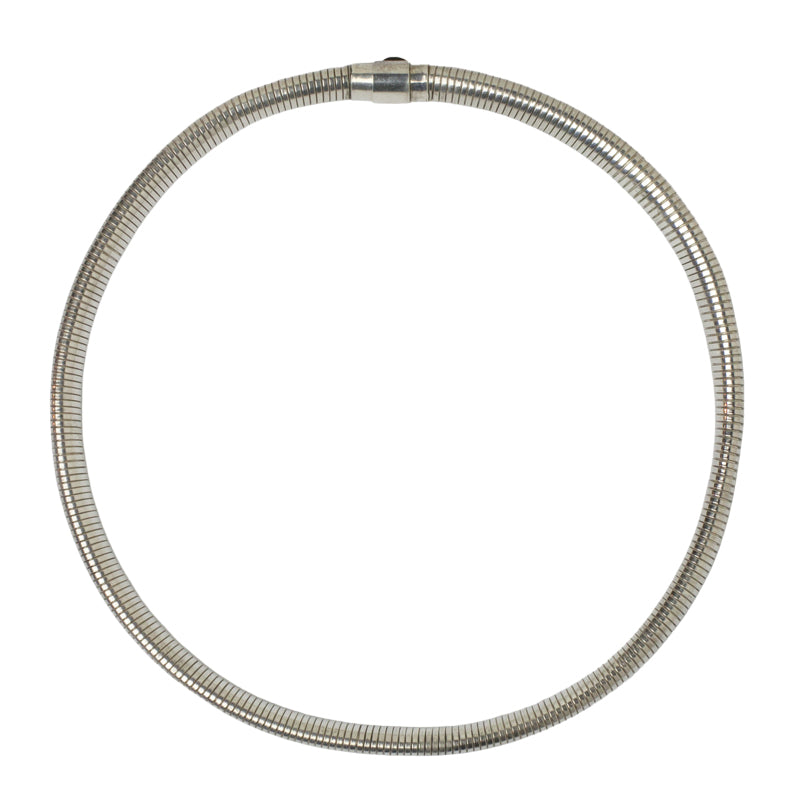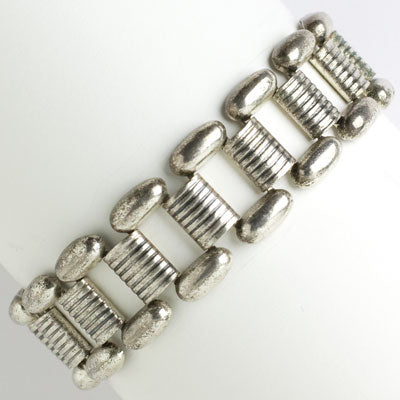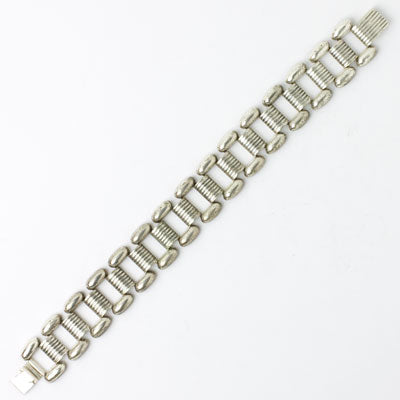Collections
1920s Jewelry
This unique selection of 1920s jewelry includes long earrings, long and short necklaces, narrow bracelets, and brooches. Originally designed for the flapper, these jewels are equally stylish today. Many 1920s costume pieces were made from materials such as white metals, clear and colored glass stones and beads, faux pearls, diamanté, and marcasites, in imitation of fine jewelry. Filigree pieces in white and gilt metal were also popular. Colorful early plastics (Celluloid, Bakelite, and Galalith) were fashioned into novelty pieces at this time. Jewelry in the Art Deco style made its debut in the 1920s.
View collection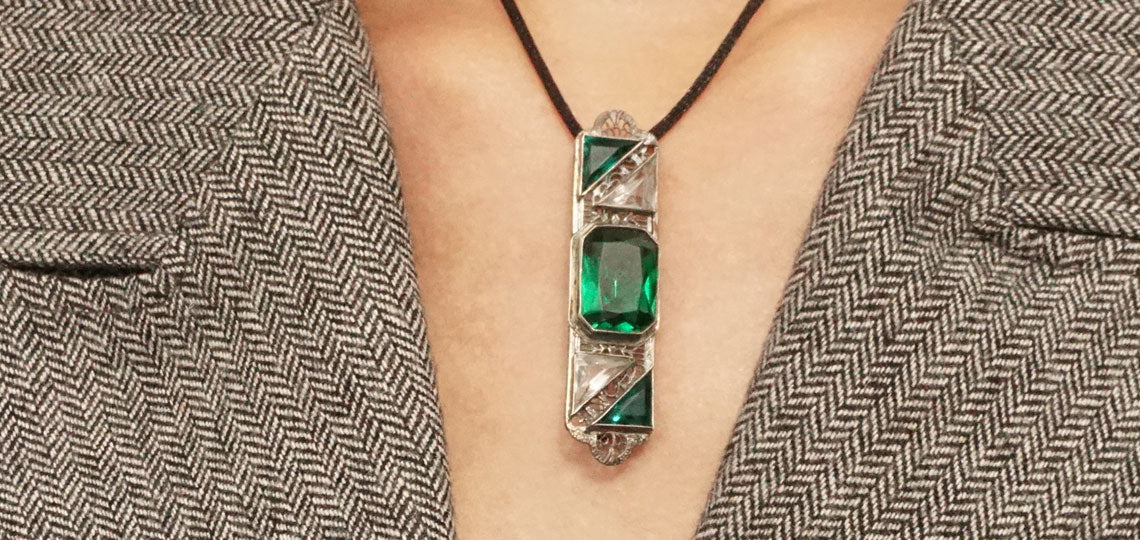
1930s Jewelry
This collection of 1930s jewelry includes pendant earrings, necklaces, bracelets, and brooches, as well as new types of jewels – dress clips and double-clip brooches. In fact, dress clips were the most important jeweled accessory during the Great Depression. Costume jewelry makers also produced fruit salads, molded glass that imitated carved gemstones popularized by fine jewelers such as Cartier. Bakelite and other plastics were used to create whimsical jewelry in every possible form. The Art Deco style continued to evolve, with new motifs and streamlining. By decade’s end, Machine Age (aka Streamline Modern) jewelry was in vogue.
View collection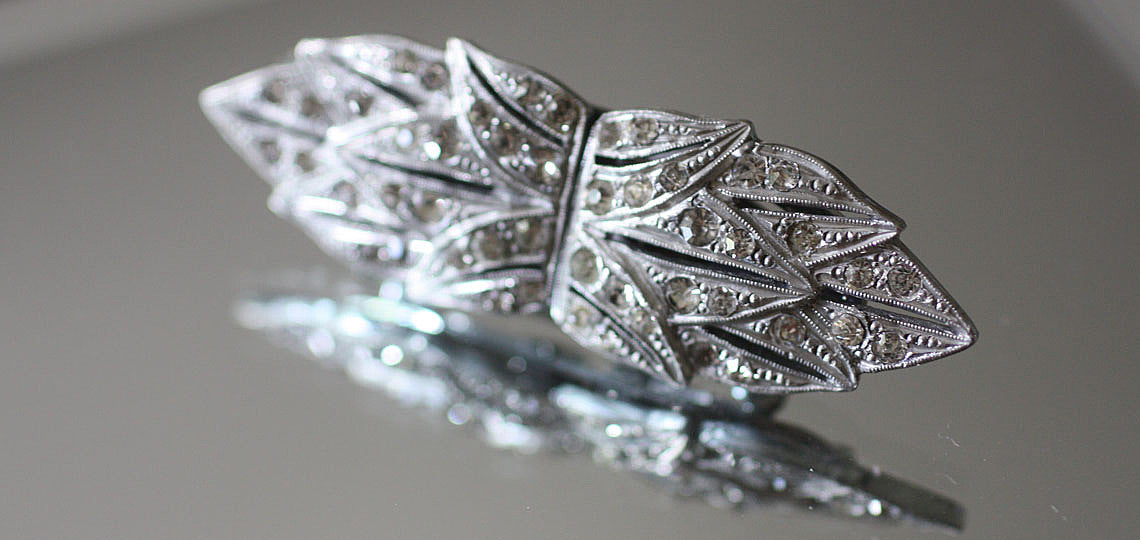
1940s Jewelry
This collection of 1940s jewelry includes ear clips, necklaces, double-clip brooches, bracelets, and brooches in bold Retro Modern and delicate Victorian motifs. Because women’s clothing during the war years was austere and masculine, jewelry became very feminine. Stylized flowers and animals as well as buckles, bows, ribbons and fabric-like folds were popular. Bracelets were wide and often worn over gloves. Big and bold brooches were worn on the shoulder of day and evening attire. Double-clip brooches, still enormously popular, evolved from geometric pieces into asymmetrical, three-dimensional images. White base metals were replaced with sterling silver, often with yellow-, pink-, green-, and/or rose-gold plating.
View collection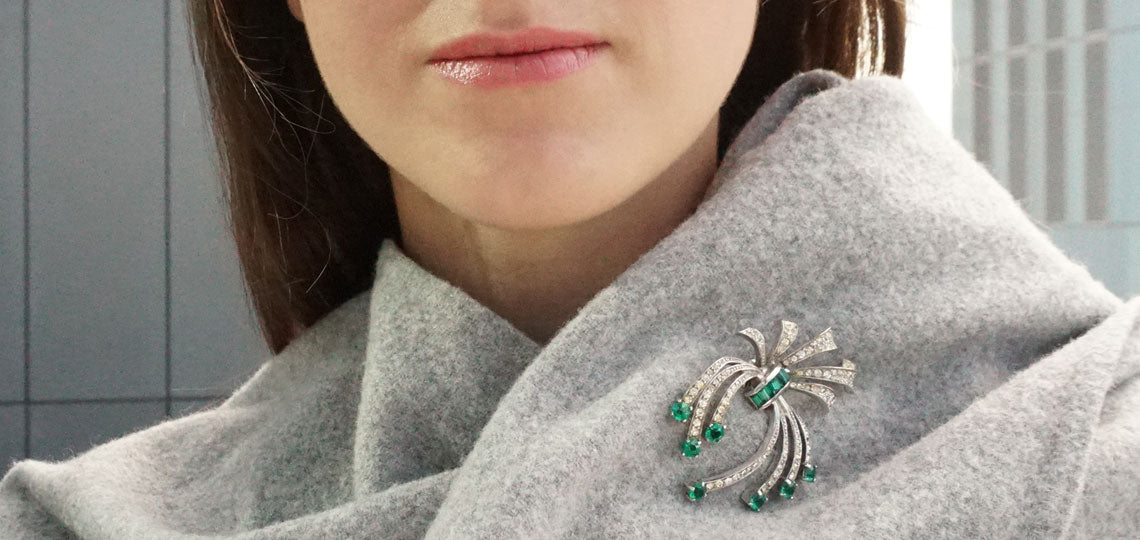
1950s Jewelry
This authentic 1950s jewelry features amazing art glass, decorative beads, imaginative color combinations, and textured metals. Single- and multi-strand necklaces, cluster earrings, pendant earrings, brooches, bracelets, and sets are included. You will find fabulous fakes – imitations of large-scale fine jewelry – as well as graceful and classic tailored pieces. Gold-tone was more popular than silver-tone in this decade, when clothes that emphasized the female figure were in vogue. Another significant characteristic of the 1950s, other than the ubiquitous simple strand of pearls, was the preference for all accessories – jewels, gloves, handbags, shoes, and hats – to be color coordinated.
View collection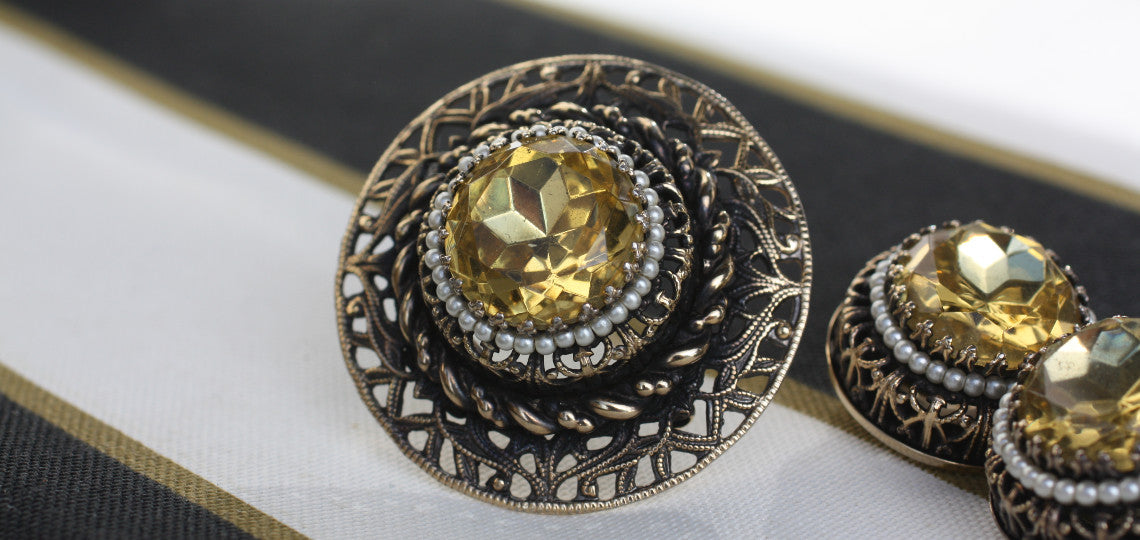
Alice Caviness Jewelry
This nice selection of Alice Caviness jewelry features brooches, earrings, bracelets, and sets from the 1950s. Using high-quality materials and techniques such as sterling, filigree, expensive art glass, and hand-set stones, Caviness and her designers produced bold and imaginative pieces. Located in New York City, the company designed, manufactured, and imported costume jewelry from 1943-1987. It was sold only in exclusive boutiques around the U.S. In addition to Manhattan, the company had showrooms in Dallas, Chicago, and Los Angeles. Caviness jewelry adorned fashion models in photo shoots published in The New York Times and Vogue.
View collection
Black Beauties
Here is a beautiful collection of vintage black costume jewelry and accessories. Find Art Deco earrings with onyx accents and bold Bakelite brooches. There are also beaded black bracelets and necklaces mixed with crystal. Complete your evening look with a vintage black velvet or suede purse. I've selected pieces with black as an accent or the main event, because we know, black goes with everything!
View collection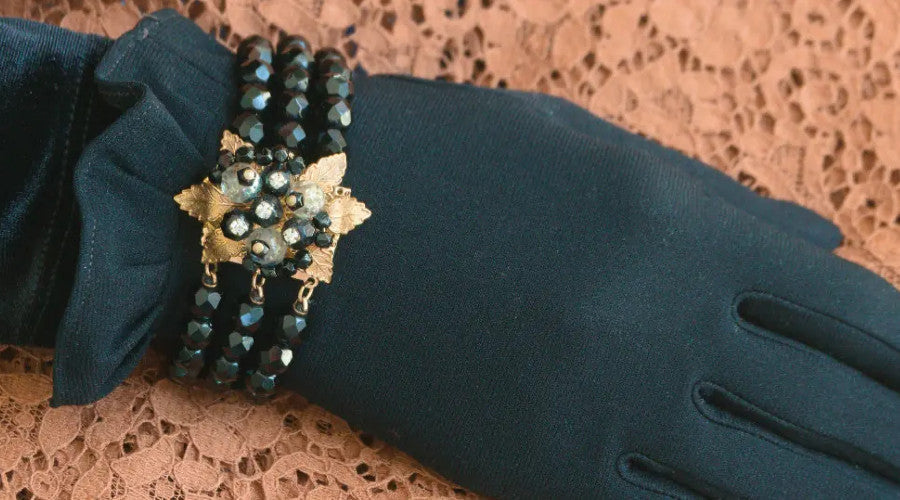
Bogoff Jewelry
This nice collection of Bogoff jewelry features bracelets, earrings, necklaces, and brooches in the feminine designs that were popular in the 1950s. Always delicate and colorful, Bogoff created costume pieces that imitated fine jewels. From 1946-1960, this company’s jewelry often adorned models in Vogue and Harper’s Bazaar, where it was also featured in magazine editorials. “Jewels by Bogoff” were available through a broad range of retailers, from Sears, Roebuck and Best’s to luxury stores such as Saks Fifth Avenue, Henri Bendel and Bergdorf Goodman. Owned and run by Henry and his wife, the company operated under a number of names.
View collectionBracelets
Vintage bracelets from the Art Deco style of the 1920s-30s, Retro Modern pieces of the 1940s, and 1950s designs by imaginative makers in beautiful materials can be found here. An important accessory to 1920s fashion, when bare arms required adornment, bracelets in this decade were typically worn in multiples. The popular styles were one- , two- , and three-row flexible bracelets (what we now call line or tennis bracelets), filigree bracelets, and bangles. Bracelets got wider and more three-dimensional in the 1930s, as the Machine Age style took hold. In the 1940s, gold-tone snake chains, basket-weave links, and flexible spirals were popular styles. The 1950s produced tailored pieces as well as fabulous fakes.
View collection
Brooches & Pins
This selection of vintage brooches and pins from the 1920s-1950s includes pieces from fine makers such as Miriam Haskell, Elsa Schiaparelli, and Marcel Boucher. Once considered a dated, old-fashioned accessory, the brooch has recently resurfaced as a modern, essential adornment for any outfit. Today’s women are finding out just how versatile this type of jewel is. Wear one alone or wear a cluster. Pin a brooch to your shoulder, your jacket lapel, the throat of your blouse, or the waistline of your dress or trousers. Wear one on a belt, a purse, or a necklace. The choices are endless. Pieces from this collection will add drama and color to a casual outfit, or transform more formal attire into a show-stopper.
View collection
Catamore Jewelry
Jewelry made by Catamore, a family business in Providence, Rhode Island, included gold-filled and sterling silver costume pieces. This one is a nice example of their bracelets. For more than 40 years, the company also produced religious emblems and sterling novelties.
View collectionChristian Dior Jewelry
Best known for his haute couture fashions and his revolutionizing New Look collection in 1947, Christian Dior commissioned individual designers and companies to make costume jewelry of the same high standard as his fashion collections. In the U.S., designers included Schreiner and Kramer; in England, Mitchel Maer; in Germany, Henkel & Grosse; and Robert Goossens and Josette Gripoix in France. In 1955, the Swarovski firm developed aurora borealis, an iridescent coating on faceted glass stones and beads that adds shimmer and makes them change color when seen from different angles. Dior was one of the first haute couturiers to introduce these crystals in his fashion collection. Christina Dior jewelry has always been sold only in exclusive shops.
View collectionCiro Jewelry
Ciro jewelry has been available for over a century. This retailer began as a purveyor of imitation pearls and added costume jewelry to their offerings in the 1920s. This extraordinary double clip brooch, undoubtedly made in Europe, is a fine example of the high standards this company demanded from its makers.
View collection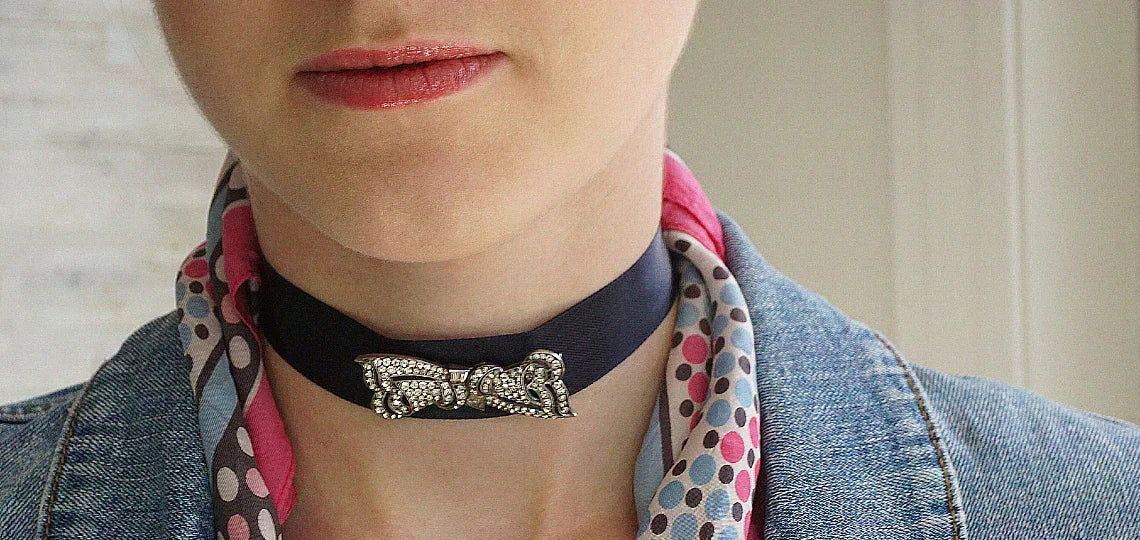
Coro Jewelry
This fine collection of Coro jewelry from the 1930s-1950s features brooches, necklaces, bracelets, double-clip brooches, and sets. Many are by Adolph Katz, the company’s renowned design director. Coro was the largest costume jewelry manufacturer in the U.S. They produced three product lines, each aimed at a different target market. The majority of the pieces seen here are Coro Craft, the best-known, higher-end brand that used more expensive materials – sterling silver, vermeil, and European crystals. These big and bold 1940s brooches here fine examples. Coro was the first costume jewelry maker to produce double clip brooches – their Duette.
View collection
Dorsons Jewelry
This selection of Dorsons jewelry illustrates the company’s emphasis on the “real look” of their creations. Using simple, classic designs, they typically produced bracelets and brooches with diamantés hand-set in sterling silver.
View collection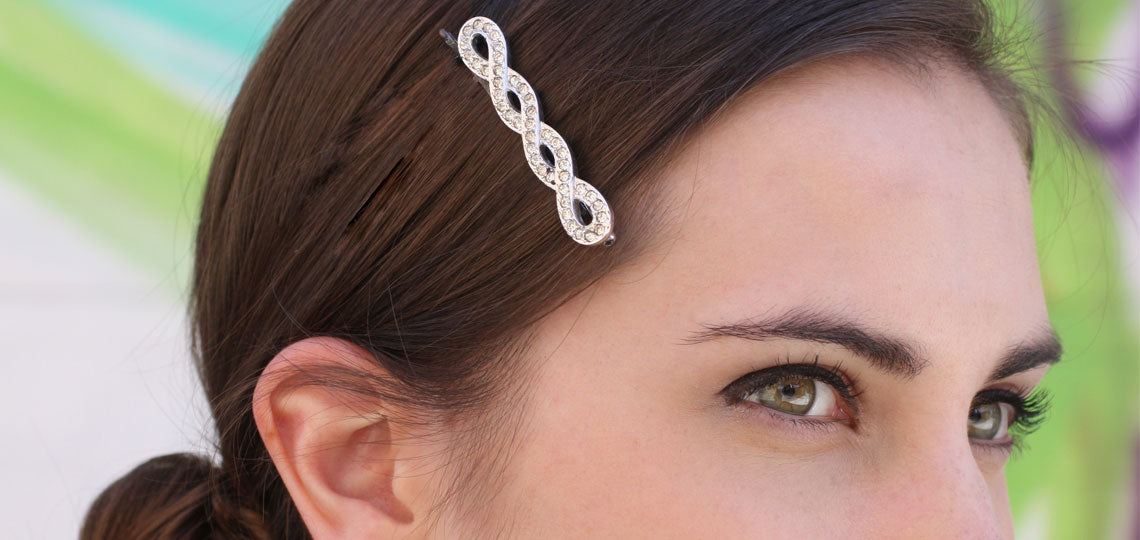
Double Clip Brooches
Double clip brooches were first made by Coro, who gave them the name Duette. Trifari soon followed with their patented design, called Clip-Mates. These pieces were the most important jeweled accessory of the 1930s-1940s and were made into the 1950s. Their popularity was due to their versatility: one can be worn as a brooch or as separate dress clips. Other jewelry makers – including Boucher, Mazer, and Pennino – designed their own brooch mechanisms. Dress clips were particularly suited to square necklines of the 1940s, but these pieces are just as versatile with today's fashions. Wear them at your neckline or waist; on your shoulder or lapel; on your purse or hat; on your shoes; or to fasten a scarf or shawl. See also Dress Clips.
View collection
Dress Clips
This collection of vintage dress clips includes singles and pairs in 1930s Art Deco designs as well as big and bold jewels in the Retro Modern style of the 1940s. First introduced in the early 1930s in fine jewelry, costume jewelry makers joined the bandwagon of this incredibly popular accessory. Women wore one clip at the bottom of a V-neckline as well as on a hat, belt, or purse. In pairs, dress clips perfectly anchored the edges of the square neckline that was prominent in the era. By the 1940s, women were wearing furs around their shoulders, and jewelry makers obliged with the double-prong clip backs needed to hold the furs in place. See also Double Clip Brooches.
View collection
Earrings
Vintage earrings are one of my favorite types of jewelry, and here you’ll find a vast selection from the 1920s-1950s. From Art Deco dangling styles to bead- and stone-cluster ear clips, this collection features a wide range of colors, materials, and silhouettes. Pieces like chandeliers by Hattie Carnegie or pearl clusters by Louis Rousselet will draw every eye up to your face, adding that little extra sparkle to any look. It’s no wonder earrings are many women’s go-to accessory. Whether adding color or shine to a simple everyday look or bringing that stunning cocktail dress to the next level, the perfect pair of vintage earrings will help to make you and your outfit memorable.
View collection
Eisenberg Jewelry
This stunning selection of Eisenberg jewelry from the 1940s features brooches, earrings, bracelets, and dress clips in the beautiful designs and high-quality materials that make this company’s pieces so desirable. From its beginnings as a manufacturer of women’s dresses in Chicago in 1920, Eisenberg & Sons launched a separate jewelry line – Eisenberg Jewelry Inc. – in 1936. Their jewelry was produced by Fallon & Kappel (F&K) as well as others until 1943, when F&K became their exclusive supplier. Ruth Kamke became their exclusive designer, producing intricate bows, florals, and abstract designs executed in hand-set, highly-leaded crystals with exceptional sparkle.
View collection
Elsa Schiaparelli Jewelry
This Elsa Schiaparelli jewelry collection features pieces from the 1940s-1950s. You will find bracelets, earrings, and brooches in extraordinary designs and distinctive materials. Elsa Schiaparelli, along with her arch-rival Coco Chanel, was responsible for the acceptance and success of costume jewelry in the 1920s. Both women designed specific pieces to adorn their haute couture. Schiaparelli believed that costume jewelry, in addition to being an essential part of fashion design, was an art form in its own right. She collaborated with many jewelry designers as well as with Surrealist artists who were her friends.
View collection
European Collection
Here you will find elegant and unique jewels by the best European makers from the 1920s-1950s, such as Louis Rousselet, Theodor Fahrner, Henkel & Grosse for Dior, and Ornella. Also included are works by unsung talented creators in Eastern Europe, the heart of costume jewelry making before World War II.
View collection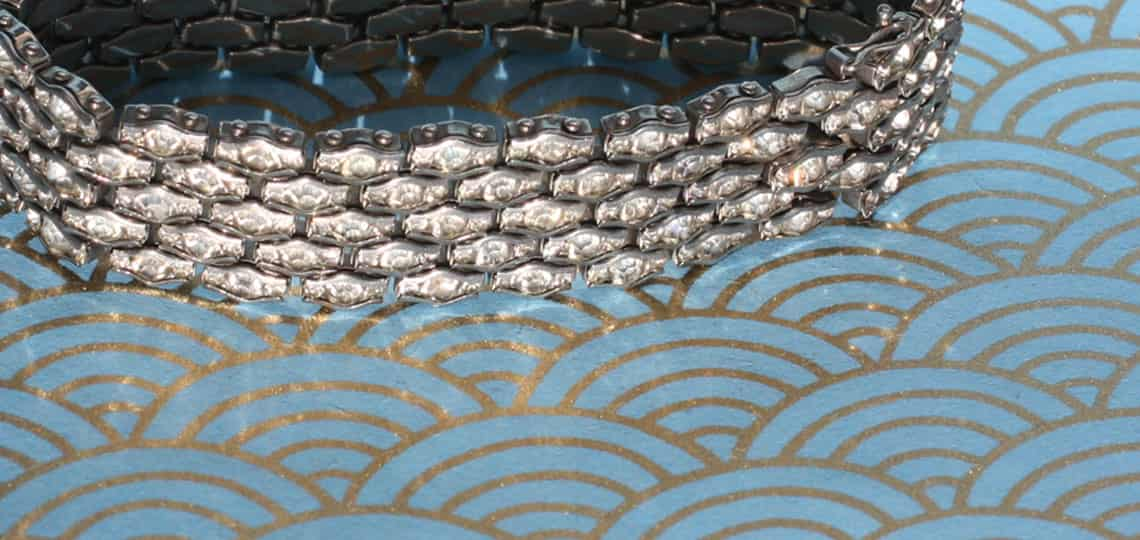
Fahrner Jewelry
Theodore Fahrner jewelry was designed by eminent free-lance and in-house artists and made partly or entirely by machine. The company was located in Pforzheim, Germany. The pieces shown here are representative of their acclaimed Art Deco designs, which were executed in silver or gilded silver with matte enamel, marcasites, semi-precious stones and a particular type of filigree created from swirls of twisted silver wire.
View collectionFishel, Nessler Jewelry
Fishel, Nessler manufactured metal novelties as early as 1893. By the early 1900s, they expanded their production to include costume jewelry. Today’s collectors covet the Art Deco sterling silver pieces from the 1920s, like these two examples.
View collectionForstner Jewelry
For over 30 years, Forstner Chain Corporation produced various types of chains, bracelets, and novelties for both men and women. From 1946-1948, flexible spiral bracelets and chokers were prominent among the company's advertisements in Vogue. At various times, these pieces were available in sterling silver, 1/20 12K gold filled, 10K gold, and/or 14K gold. The one shown here is a stunning and unique design.

Foster & Bro. Jewelry
Theo. W. Foster & Bro. Co. produced gold-filled, gold-plated and sterling silver jewelry as well as an extensive array of sterling silver novelties. The piece shown here is the only one I’ve ever seen by this maker. They were in business in Providence, Rhode Island, for over 40 years.
Hattie Carnegie Jewelry
This selection of Hattie Carnegie jewelry from the 1950s features bold and colorful necklaces, bracelets, brooches, and earrings. Instead of producing fabulous fakes – imitations of fine jewelry – which were popular in the 1950s, the fashion house's designs and materials were innovative and distinctive. The beaded jewelry is particularly exceptional. Some pieces were designed in-house under Carnegie's direction. Others were commissioned by various costume jewelry manufacturers. In partnership with Rose Roth, Carnegie opened her first shop in New York City in 1909. Ten years later, she bought out Rose and renamed the company Hattie Carnegie, Inc. They started marketing costume jewelry to accessorize their fashions in 1939 and closed in 1976.
View collection
Hess-Appel Jewelry
Hess-Appel is not well-known in the vintage costume jewelry community. For one thing, their earliest pieces were unsigned, and their mark was JOLLE rather than the company’s name. In addition, they were in business for only 12 years. This piece was made in the company’s early years when, according to the Brunialtis, they produced their best work.
Hobé Jewelry
This lovely collection of vintage Hobé jewelry emphasizes the brooches, earrings and bracelets the company produced in the 1940s. These unique designs feature elaborate, hand-crafted leaves and flowers, bows, baskets and hearts. The jewelry from this period was all made in sterling silver. Some pieces were embellished with gold-plating and/or colored stones. In the 1950s, the company’s designs followed the trend for more glamour. Their standards for original designs, high-quality materials and excellent construction continued. Sold in up-scale department stores and boutiques, Hobé jewelry was marketed under the slogan “Jewels of Legendary Splendor”. Stars of the stage and screen wore these creations.
View collection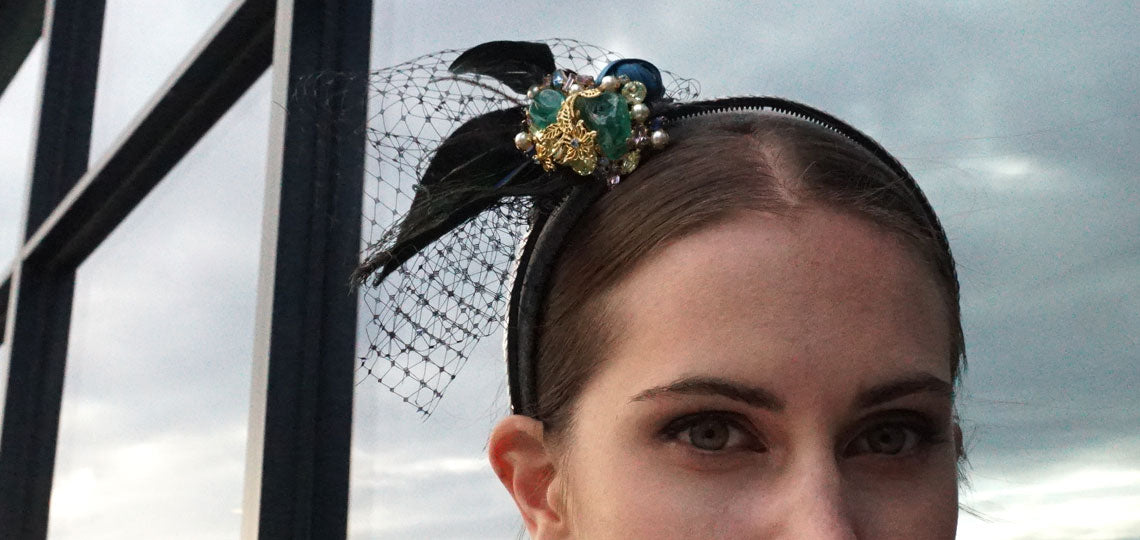
Holiday Sparkle Collection
Bring on the bling! The holiday season is a great opportunity to add drama to any outfit. I've selected these sparkling vintage jewelry gems for their glamour and versatility. Wear them with formal evening wear, or just to dress up your favorite jeans for a more casual celebration. Don't stop there, why not pin them to your zip, hat, scarf or coat...even shoes!
View collection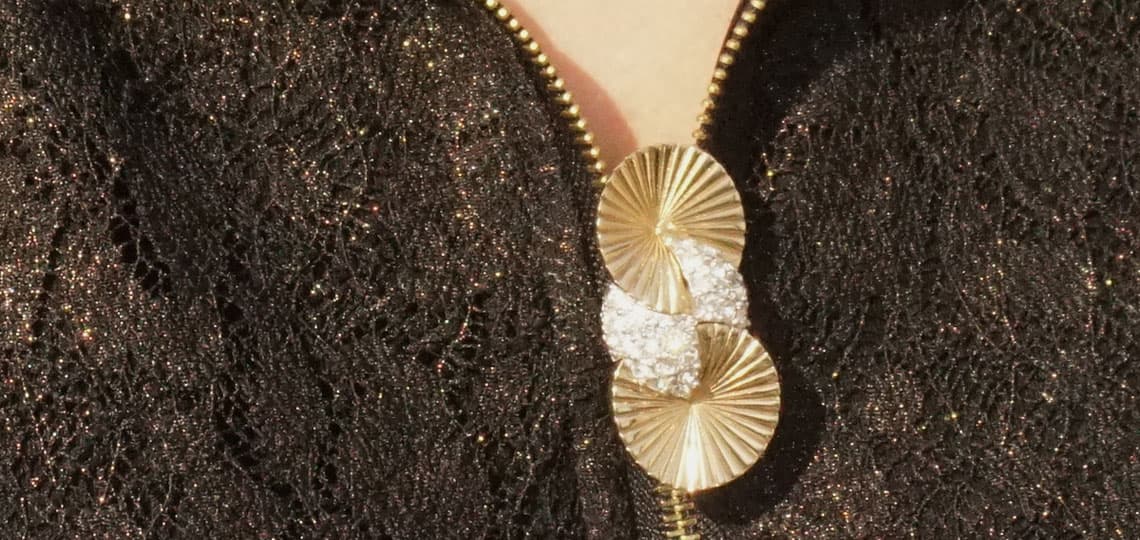
Jakob Bengel Jewelry
This wonderful selection of Jakob Bengel jewelry includes necklaces, bracelets, and brooches. This German maker, whose Machine Age designs are so coveted today, first opened a watch chain and metal wares factory in Idar-Oberstein in 1873. Greatly influenced by the Bauhaus School, the company changed to the production of costume jewelry in the 1920s. Designers fashioned stainless steel, chrome, nickel, glass, and Galalith into geometric shapes. By the 1930s, their distinctive Art Deco pieces were shipped all over the world. Production ceased at the start of World War II. The company remained unknown until the late 1990s largely because their pieces were unsigned.
View collectionJewelry Sets / Parures
This nice selection of costume jewelry sets (also called parures) is from the 1920s-1950s. Each set has a necklace, bracelet, or brooch with matching earrings. Parures were particularly popular in the 1950s, when matching accessories (hats, gloves, belts, shoes, and jewels) were in vogue. During that decade, a full parure might have included a necklace, brooch, earrings, and a single or pair of bracelets, which a woman would wear at the same time. With today’s fashions, we tend to dress down, so you can wear the pieces in these sets together or separately. You can also combine one part of the set with complementary contemporary jewelry already in your jewelry box.
View collection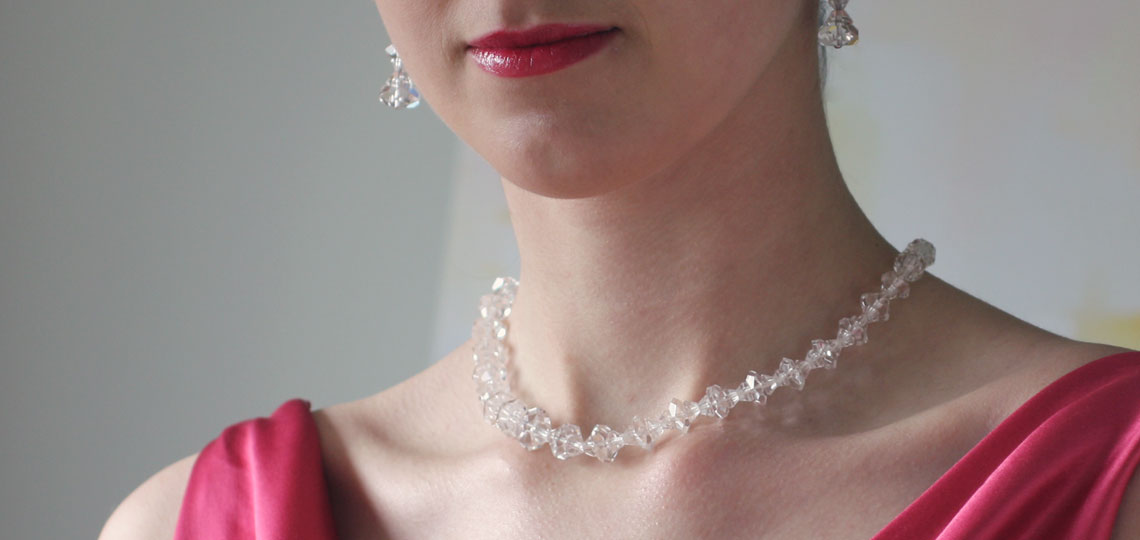
Kreisler Jewelry
Kreisler produced jewelry in sterling silver, like this bracelet, only in the 1940s. From its inception, the company manufactured fine jewelry. Like other jewelry makers during the war, Kreisler contributed to the war effort. That work was so successful that the firm discontinued making jewelry and novelties to focus on the aerospace industry.
Louis Rousselet Jewelry
This fine collection of Louis Rousselet jewelry includes necklaces, earrings, brooches and parures made in France from the 1920s through the 1950s. Their pieces were usually signed only with a paper hang tag. Jewelry with the L.R. mark is rare, but you will find one signed piece here. Rousselet manufactured extraordinary hand-made beads and glass pearls that they used in their own designs and also sold worldwide. Costume jewelry clients included French couturiers and high-end stores. Because some of the characteristics of their work have been documented by authoritative sources, I have been able to attribute particular jewels to this exceptional maker.
View collection
Machine Age Jewelry Collection
These necklaces, brooches, earrings and bracelets, mostly from the 1930s, are examples of the Machine Age style. It symbolizes machines and their movement. Most pieces are white metal, either alone or with embellishments of diamantés and/or colored stones in glass or plastic. This style was strongly influenced by the Bauhaus.
View collection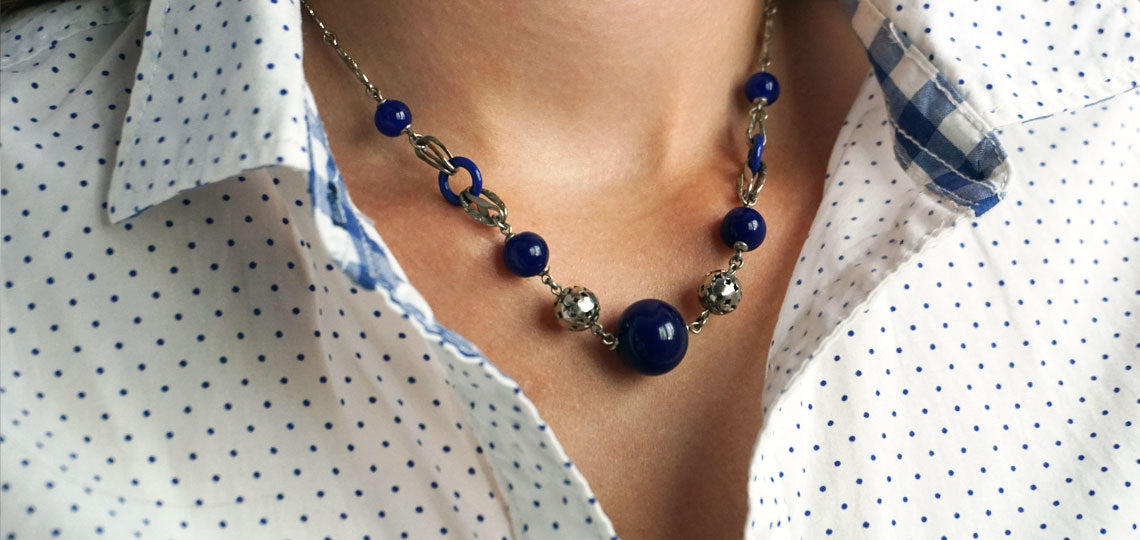
Marcel Boucher Jewelry
This nice collection of Marcel Boucher jewelry includes brooches, earrings, pendants, and sets from the 1940s-1950s. Known for high-quality materials, expert craftsmanship, and unique designs, his pieces typically feature intricate metalwork, rhinestones that resemble real gemstones, top-quality faux pearls, and colorful enamel work. A former fine jewelry maker with Cartier, Boucher was forced to move to the costume jewelry industry during the Great Depression. He worked for Mazer Brothers before starting his own business in New York City in 1937. In addition to his jewelry designs, Boucher patented six mechanisms for mounting dress clips – what we call double clip brooches.
View collection
Mazer Bros. Jewelry
Mazer Brothers jewelry, made in New York City from 1927-1952, was characterized by the company’s slogan -- “the precious look in fashion jewelry”. From their early days until they severed their business ties, brothers Louis and Joseph used only the finest materials and manufacturing techniques: gold- or rhodium-plated metal before and after World War II, sterling silver and vermeil during the war, imported Austrian crystals, and enamel. This fine collection of brooches, bracelets and earrings features high-quality pieces in classic motifs, including floral and ribbon-and-bow designs. Jewelry by this maker was available only at “better department stores”.
View collection
Milglo Jewelry
Milglo is not well known in the vintage costume jewelry community. Perhaps one reason is that the company marked their necklaces and identification bracelets with “ELCO”, one of their registered trademarks. This necklace and earrings set in rock crystal is in its original box.
View collection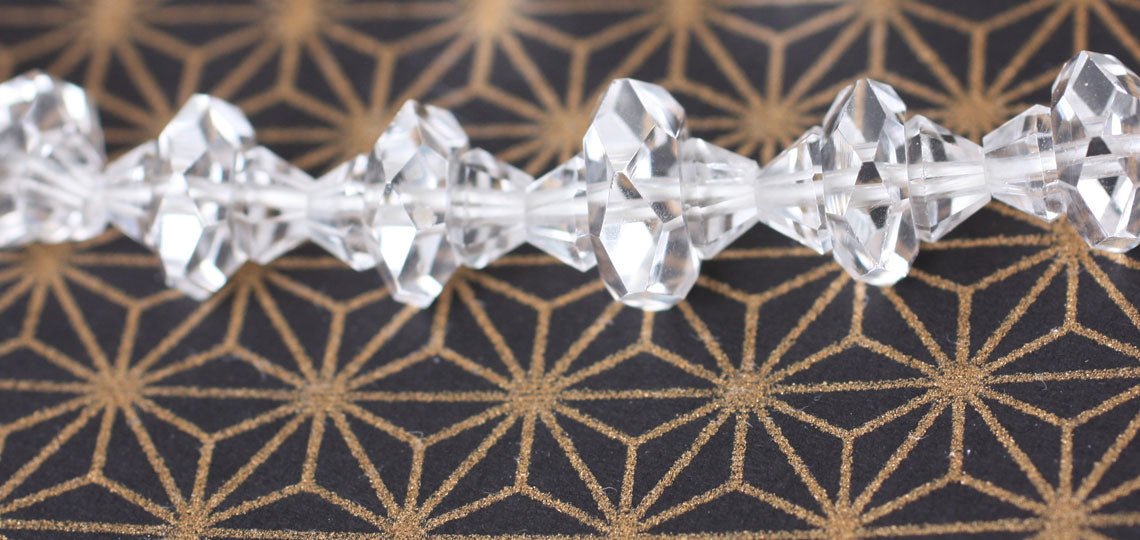
Miriam Haskell Jewelry
This lovely collection of vintage Miriam Haskell jewelry from the 1930s-1970s features designs in the high-quality components – pearls, beads, and other unique materials – that have defined her brand. Many by Frank Hess, chief designer until 1960, are included. In addition to tailored, classic necklaces, earrings, brooches, and bracelets, you will find whimsical jewels in surprising materials. For example, during World War II, when components from Japan and Europe were not available, Haskell used American-made plastics and natural materials (such as wood). The only pieces in this boutique made more recently than the 1950s are by this maker.
View collection
Necklaces
This beautiful selection of vintage necklaces includes a variety of styles, from 1920s Art Deco to the colorful bead designs of the 1950s. Choose from pieces that are long or short, single-strand or many, chokers set with stones, bib, tiered, fringe necklaces, and more in a wide range of colors and materials. In many cases, even the clasps are specially embellished for added detail. Whether you want to dress up your jeans and tee shirt for weekend brunch or drinks with friends, step up your office attire for a night on the town, or adorn a special-occasion ensemble, the right necklace will make your outfit shine.
View collection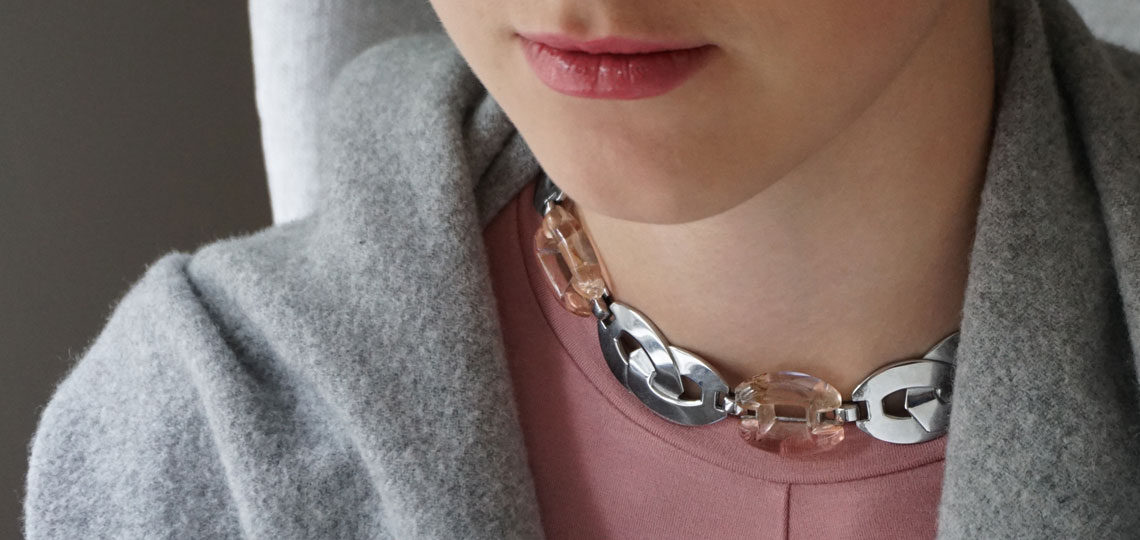
Nettie Rosenstein Jewelry
Nettie Rosenstein initially designed jewelry to complement the fashions produced by her couture business. When the fashion house closed in 1961, the accessories business continued for more than 20 years. Jewelry with this maker’s mark is known for its exceptional quality.
Ornella Jewelry
Ornella is still in business today! Since 1944, the company has created jewels in timeless motifs inspired by nature, art and classical jewelry styles, and handmade with vintage Italian materials. Initially sold in major department stores, Ornella Bijoux has designed for haute couture and the rich and famous.
View collection
Otis Jewelry
Jewelry from the 1930s marked "Otis" looks a lot like the pieces produced by Wachenheimer Brothers. The reason is that in 1934, Edward O. Otis, Jr., purchased their assets and continued to operate the plant with the same personnel.
View collectionPennino Bros. Jewelry
This beautiful selection of earrings, brooches, and sets from the 1930s, 1940s, and 1950s was made by Pennino Brothers. This well-respected firm in New York City from 1926-1966 were known for the exceptional quality of their designs and materials, and their intricate workmanship. Their pieces feature high-end rhinestones set in rhodium- or gold-plated base metal, sterling silver, or vermeil sterling. Pennino jewelry was sold only in high-end department and jewelry stores. These Italian-born immigrants brought their talent, master goldsmith lineage, and pride in workmanship when they immigrated to the U.S. and started their business. Pennino pieces are hard-to-find and coveted.
View collection
Purses
This selection of vintage purses from the United States and Europe includes handbags in a variety of styles and materials. Styles include framed handbags with handles or back straps, as well as pouches. A back strap allows the wearer to slip her hand through the strap and easily hold her bag while dancing. Suede, velvet and beading are among the materials featured. This important accessory, which is both utilitarian and decorative, can make your day or evening outfit unique.
View collection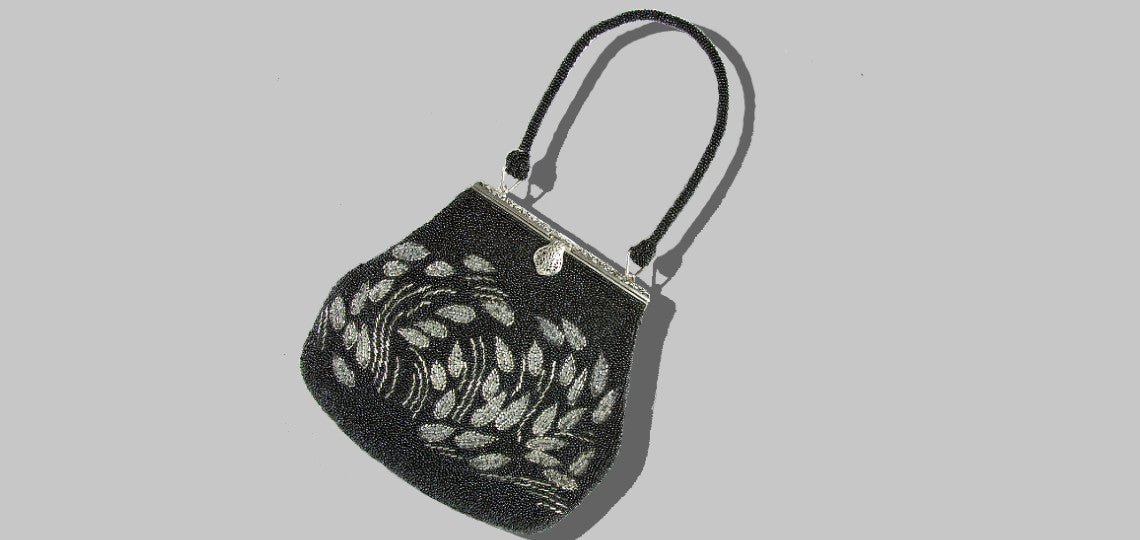
R.F. Simmons Jewelry
R.F. Simmons, located in Attleborough, Massachusetts, manufactured jewelry for nearly a century. Best known for their gold-filled chains, the company also made bracelets over the years. This one is the only piece by this maker that I have seen.
View collectionRalph De Rosa Jewelry
Jewelry by Ralph De Rosa is coveted by collectors because of the high quality of its design, construction and materials. The company employed techniques typically used in the manufacture of fine jewelry. Floral motifs, the lace theme and romantic designs were common. De Rosa jewelry was expensive when it was produced. Today it is hard-to-find. These acrostic earrings are exceptional.
Rice-Weiner Jewelry
Rice-Weiner produced lines between 1938-1943 that were marked with the signature of McClelland Barclay, a famous artist. The publication of Patricia Gostick’s book McClelland Barclay: Painter of Beautiful Women and More reveals the secret behind these jewels. These pieces are beautiful, well-made and unique.
View collectionRéja Jewelry
Réja jewelry, known for its exceptional design and craftsmanship, was manufactured in limited quantities. While all types of jewelry were produced, brooches are the most available today. This piece in gilded sterling silver is a fine example of the maker’s use of floral motifs.
Sceptron Jewelry
Jewelry marked “Sceptron” is scarce – only a few styles were made in the mid-1940s in partnership with Reinad Novelty Co. This set in vermeil (gilded sterling silver) is a wonderful example of the period.
View collectionSchreiber & Hiller Jewelry
German jewelers Schreiber & Hiller were in business from 1920-1993 in Pforzheim, a center for jewelry and watch-making for over 250 years. Many vintage costume jewelry collectors are familiar with their pieces from the 1930s (marked "DRGM 1138525", for their patent) and the 1950s (marked "ESHA" – which represents the German pronunciation of the first letters of their company name – and "RANDEL"). This collection of bracelets, brooches, earrings, and necklaces features many variations of their tank-track theme as well as a delightful array of color and material combinations.
View collection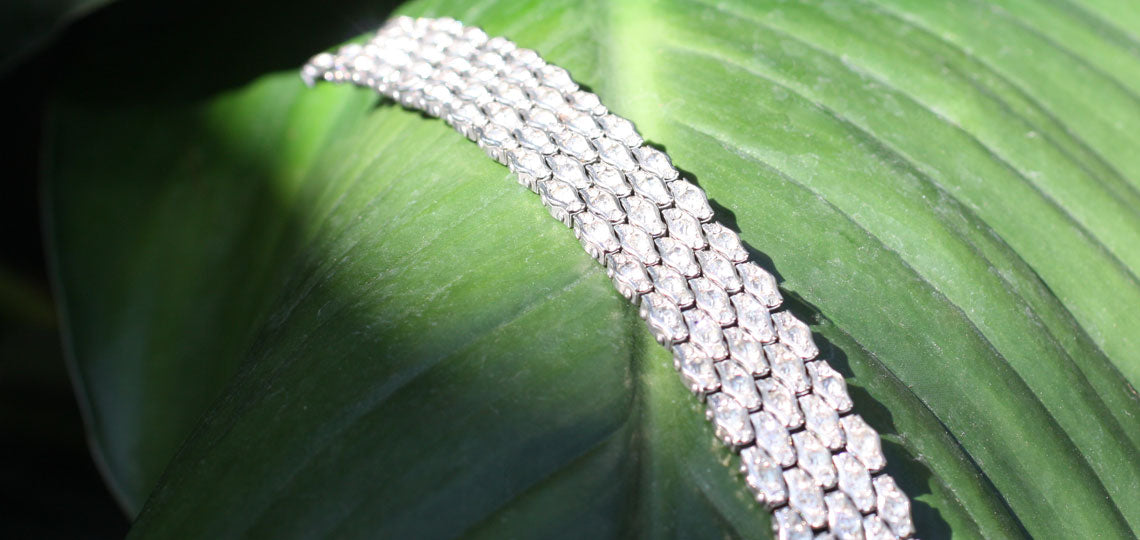
Schreiner Jewelry
This collection of Schreiner jewelry includes 1950s earrings from this exceptional American maker. Started by Henry Schreiner in 1932, the business was continued by his daughter and son-in-law following his death. Known for their imaginative color combinations; high-quality stones in unusual shapes and settings; elaborate designs; and hand-set and finished pieces, the company supplied America’s top fashion designers in the 1950s-1960s with jeweled ornaments and accessories. Only pieces made for direct sale to department stores were signed. Yet because of their distinctive characteristics, unsigned pieces by this company can usually be accurately attributed. Schreiner jewelry is coveted by collectors today.
View collectionShop by Collection
Each of these featured collections showcases a group of jewels in a particular style (e.g., Vintage Art Deco; Machine Age), for a particular season/occasion (e.g., Bridal; Holiday Sparkle) or linked by a theme (e.g., Barbara’s Picks). New arrivals to the site are in a collection, as well.
View collection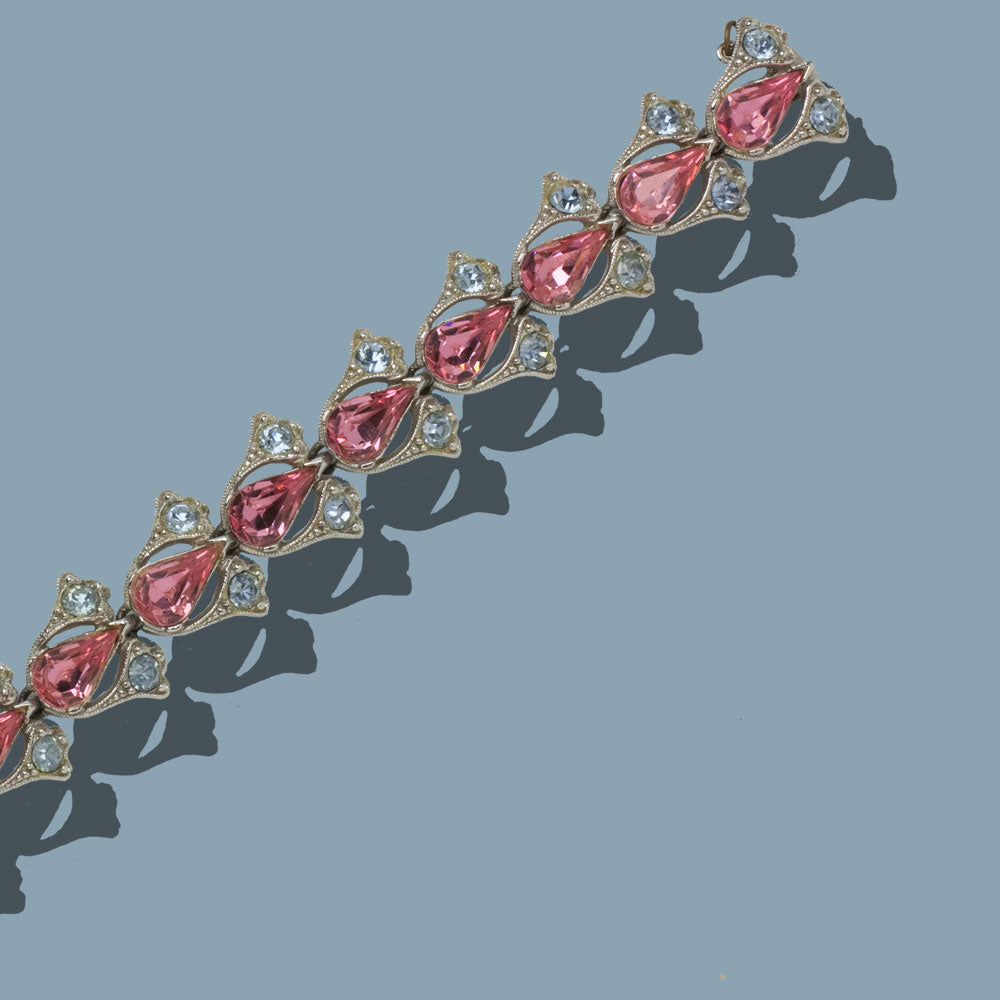
Shop by Decade
As fashion silhouettes evolve, so do jewelry styles. This collection is grouped by decade, to enable you to focus on the designs that characterize each period. You can choose from the Art Deco/flapper style of the 1920s, the evolving, more streamlined look of the 1930s, the big/bold jewels of the 1940s. and the feminine, glamourous pieces of the 1950s.
View collection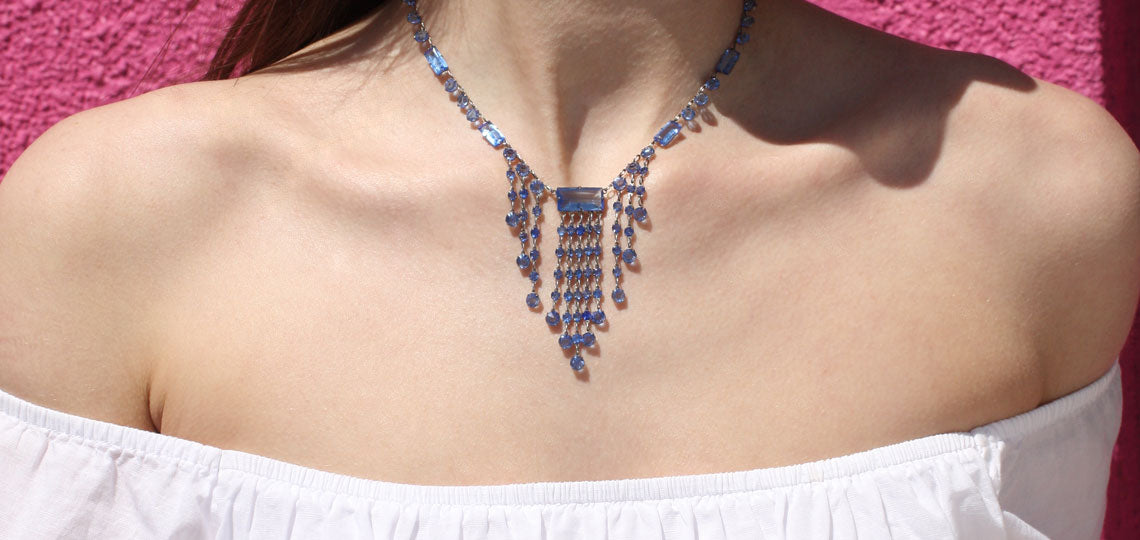
SHOP BY MAKER
Here you will find costume jewelry created from 1920-1960 by the best makers in Europe and North America. Whether you’re looking for big-name companies such as Elsa Schiaparelli, Miriam Haskell, and Coro, you’ll find them as well as less-well-known but equally excellent manufacturers of these decades. Don’t be turned off by unsigned pieces – most costume jewelry wasn’t signed until at least 1935.
View collectionShop by Maker O - R
View collection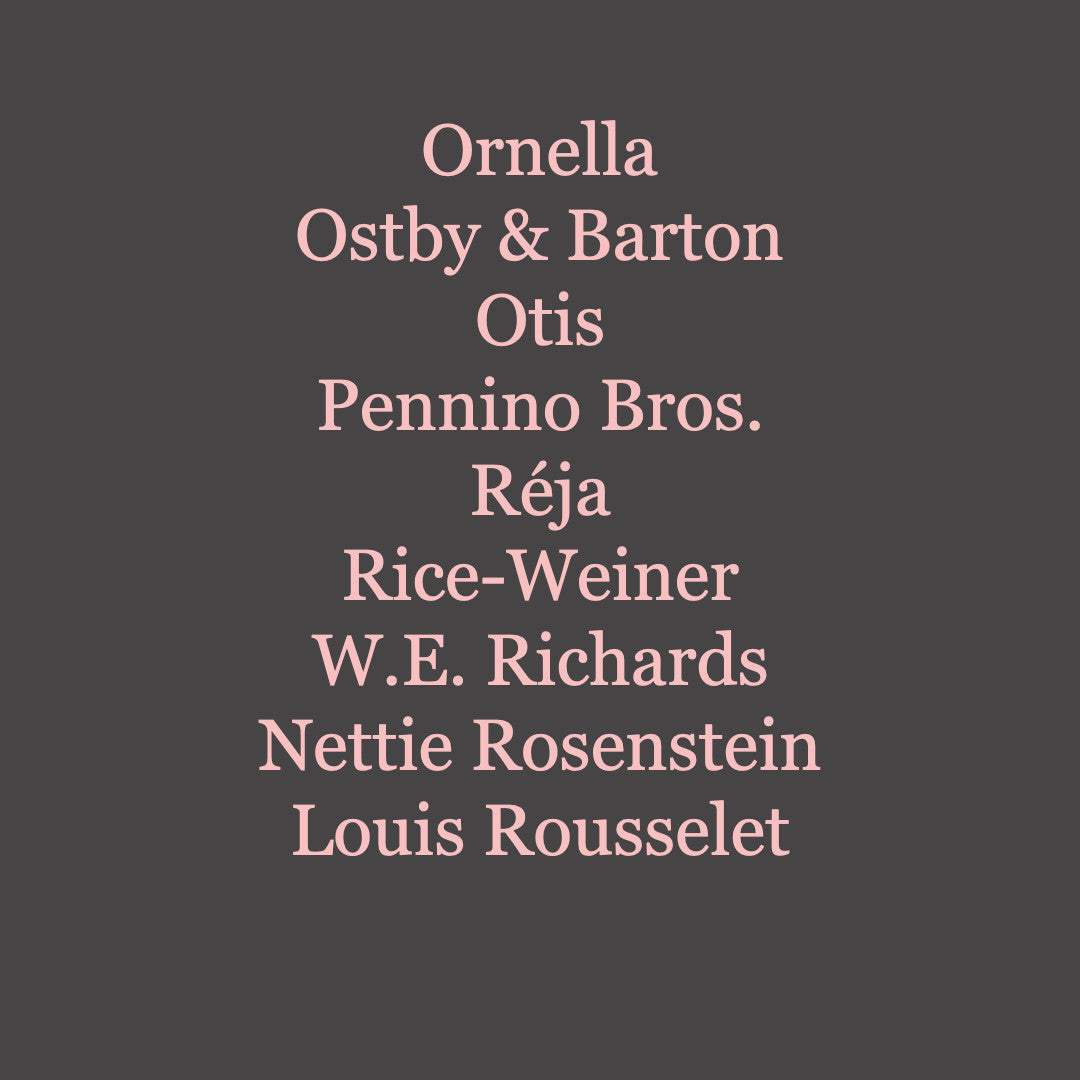
Shop by Maker S - W
View collection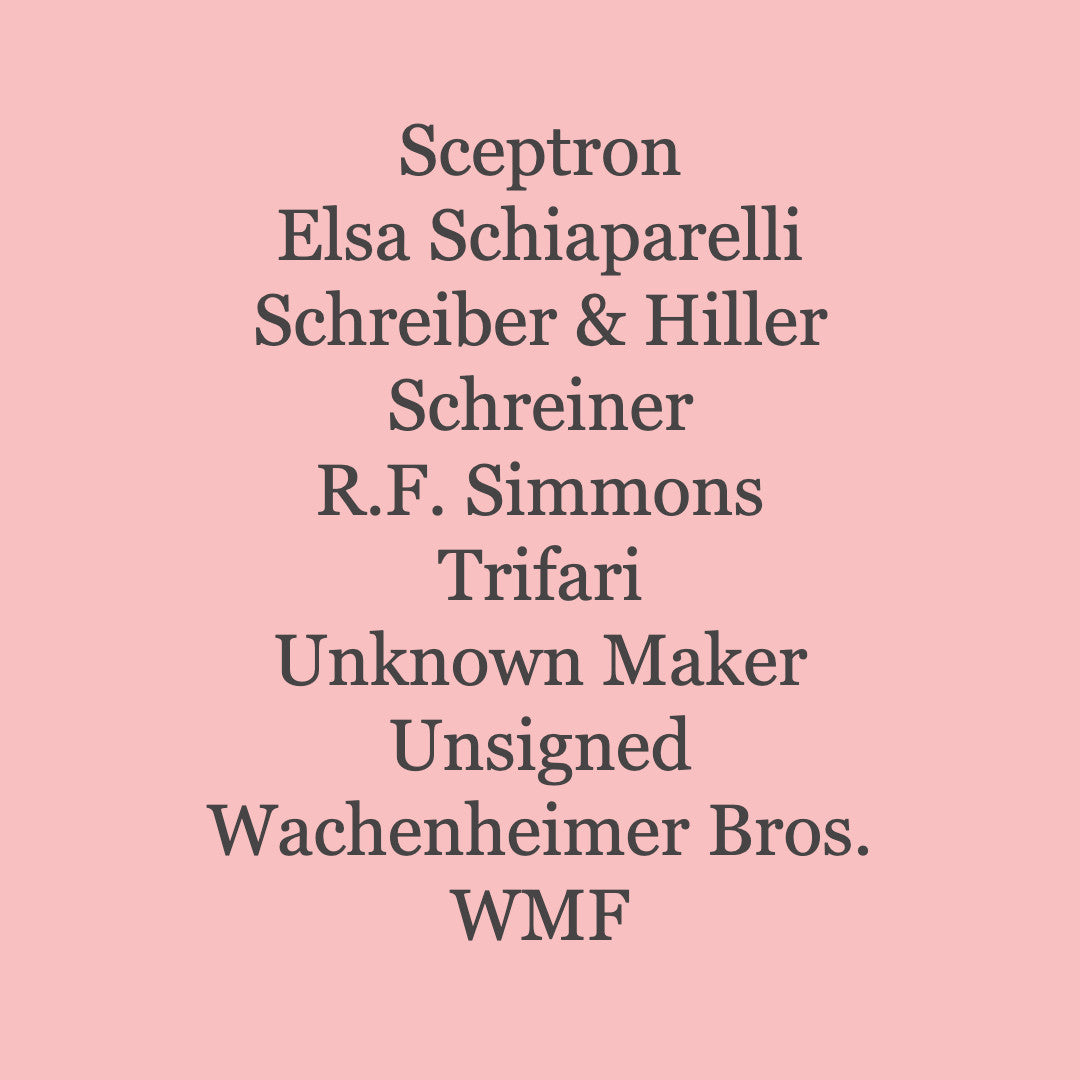
Shop by Type
Necklaces, earrings, bracelets and brooches are among the most common types of jewelry we think of today. However, fashion styles in the first half of the 20th century led to additional forms, such as dress clips and double clip brooches. They were the most popular accessories of the 1930s-1940s because of their versatility. Matching pieces (called sets or parurers) were particularly important in the 1950s. Here you will find these types of jewelry as well as vintage purses. Many styles are represented, from statement pieces to delicate, understated jewels.
View collection
Summer Sizzle
Here is my summertime jewelry selection. Choose from classic tennis bracelets, and beautifully made sterling silver Hobé brooches with flowers or fans to beat the heat and decorate your straw hat.
Find beads in sunny hues and inviting aqua. And of course, white is always a cool choice, especially Miriam Haskell milk beads and seashells. And why not add some sizzle to your summer nights with sparkling starfish or shimmery sterling silver and more!
And yes, you can wear jewelry to the pool or beach! What are you waiting for? Dive in!
View collection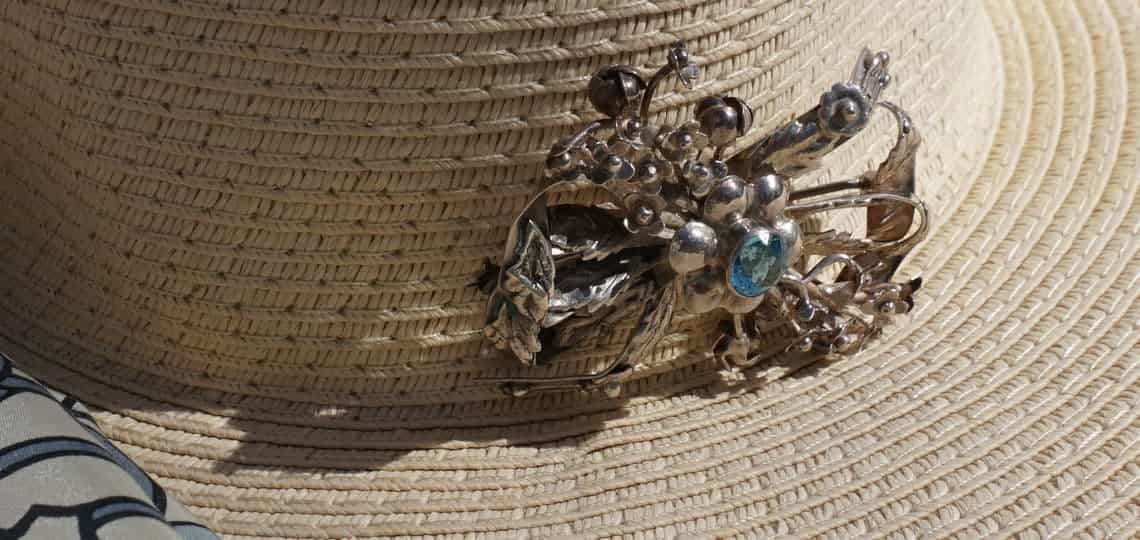
Trifari Jewelry
This collection of vintage Trifari jewelry from the 1930s, 1940s, and 1950s includes double-clip brooches, earrings, brooches, and sets. A company known for its distinctive style of imitating fine jewelry and its high-quality crystals and highly-skilled craftsmanship, Trifari was nicknamed “The Rhinestone Kings”. Many pieces here were designed by Alfred Philippe, chief designer from 1930-1968. Based on his prior experience with fine jewelry, Philippe introduced many successful lines, including fruit salads (known as tutti frutti in fine jewelry). Trifari patented their first double-clip brooch in 1932. Alfred Philippe’s design, patented in 1936, became known as Clip-Mates.
View collection
Unknown (Maker's Mark is Unknown)
Each of the jewels shown here has a maker’s mark. After extensive research in each case, I have not been able to identify the company that made the piece.
View collectionUnsigned Jewelry
About one-third of the TruFaux Jewels collection is unsigned. Why is that? According to the late jewelry historian Christie Romero, costume jewelry wasn’t routinely signed until the late-1930s. For this reason, I don’t think unsigned pieces are any less desirable than signed ones. Shop for what you like. Where a piece is unsigned, I’ve given you my best answers for when/where it was made. Whenever, I’ve been able to attribute an unsigned piece to a specific maker, I’ve stated my reasons.
View collection
Vintage Art Deco Jewelry
This vintage Art Deco jewelry is characterized by clean lines, geometric forms, stylized Egyptian themes – e.g., scarabs, pharaohs, and hieroglyphics – fruit salads, abstract designs, and dramatic, contrasting colors. The pendant earrings, long and short necklaces, brooches, bracelets, dress clips, and double-clip brooches in this collection were made with faux pearls, crystal and richly-colored-glass stones and beads, shimmery stones (marcasites and diamantés), early plastics, and enamel. If you think you need to dress like a character from The Great Gatsby to wear this stunning jewelry, think again: its appeal has endured for over a century. And the quality of these 1920s-1930s European and North American makers is unsurpassed.
View collection
Vintage Bridal Jewelry Collection
This special collection of vintage bridal jewelry features beautiful earrings, bracelets, brooches and necklaces made in Europe and North America from the 1920s-1950s. Each piece was carefully chosen for brides-to-be who want to add glamour and elegance to their wedding ensembles. In addition to providing an exceptional “something old” (and even “something blue”), this collection offers high-quality, unique jewels to wear on her wedding day and afterward. I want each bride to remember how she felt that special day every time she wears the jewel.
View collection
W.E. Richards Jewelry
W.E. Richards manufactured fine and costume jewelry in Attleborough, Massachusetts. This beautiful bracelet in sterling silver attests to the high quality of their creations. It is the only piece by this maker that I have seen.
Wachenheimer Bros. Jewelry
This fine collection of Wachenheimer Brothers jewelry includes sterling silver Diamonbar bracelets, perhaps their best-known product line, and late-1920s earrings. These earrings are from the later Wachenheimer Real Stone Jewelry line, which features semi-precious stones mounted in sterling silver. The Diamonbar trademark was first used as the name of the company’s sterling silver bar pin, which was introduced in 1916 in a series of ads in Vogue magazine. Two utility patents granted to Harry Wachenheimer pertain to the construction of the company’s bracelets. In operation from 1905 to 1934, this highly-regarded company went out of business during the Great Depression.
View collection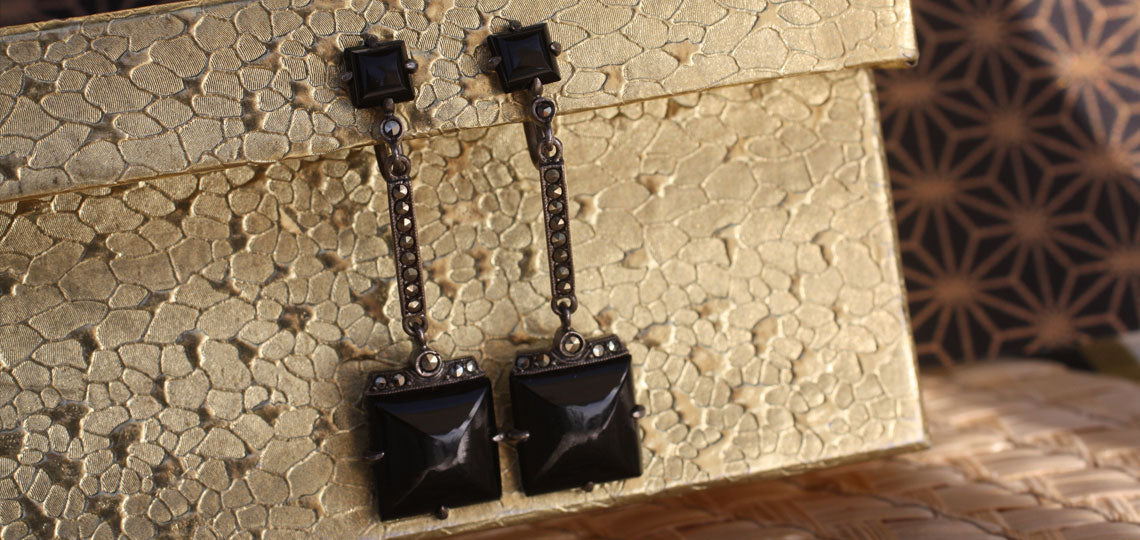
Walter Lampl Jewelry
This collection of Walter Lampl jewelry is representative of the high-quality pieces created by this maker of fine jewelry, costume jewelry, and personal accessories. The company’s moto was “Creators of the Unusual as Usual”, which was reflected in both design and craftsmanship. Lampl jewelry remains popular today.
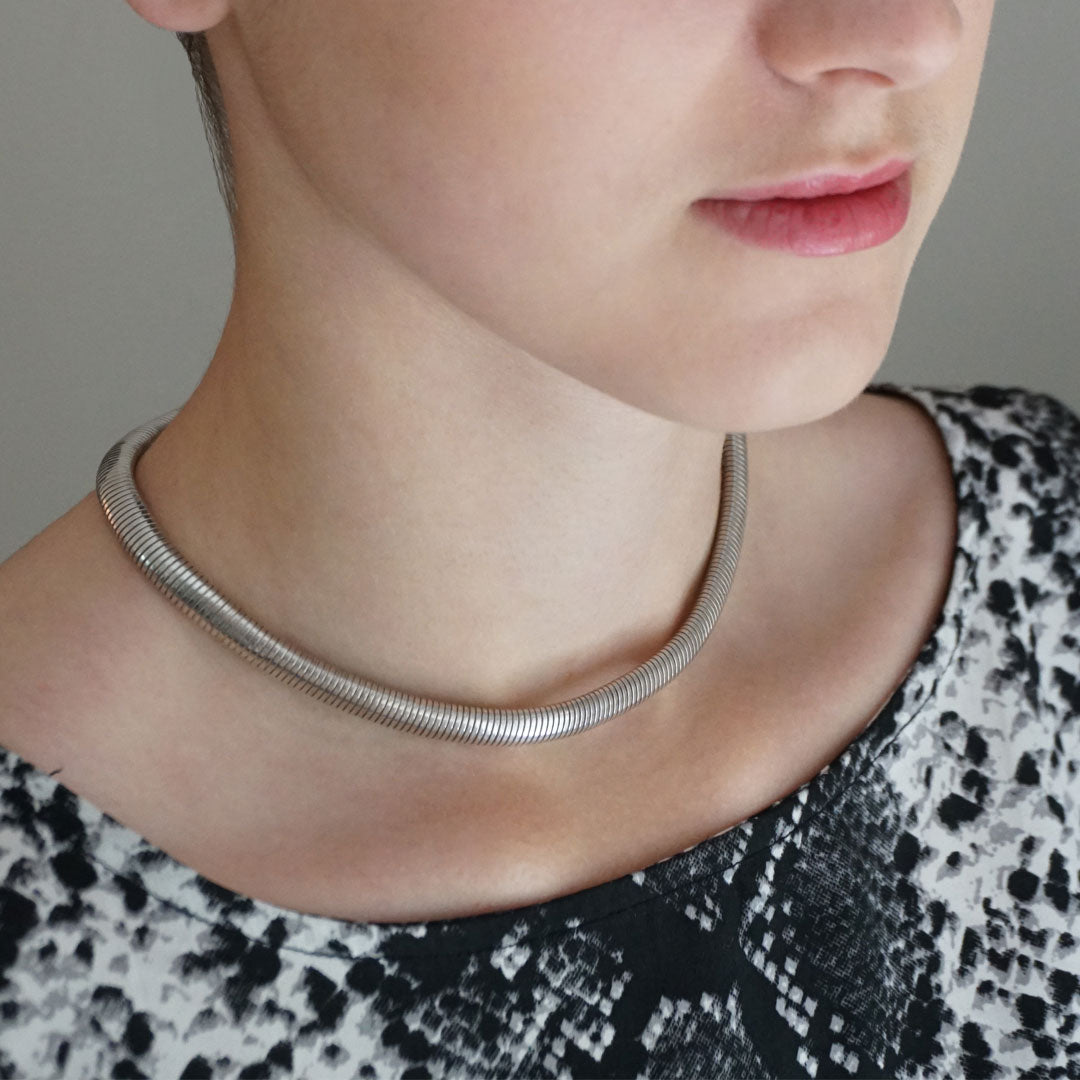
What's New
New vintage jewelry arrivals in the boutique are highlighted here. Shop the latest additions to this collection of authentic vintage costume jewelry.
Be the first to know
Sign up for my newsletter to receive advance notice of these new additions to the TruFaux Jewels collection.
View collection
WMF Jewelry
WMF, the well-respected German maker of household decorative metalware, ceramics, and glass since 1853, began to produce jewelry in the late-1920s. IKORA Schmuck was the name of the jewelry department. This wonderful example of their work is a versatile jewel from the Machine Age.

